Call Now! 866-415-6313
4.8 Rating | 5,000+ Clients Treated Since 2016

- Addiction Treatment
- Partial Hospitalization Program (PHP)
- Intensive Outpatient Program (IOP)
- Outpatient Rehab (OP)
- Evening-IOP
- Medication-Assisted Treatment
- Drug Court Programming
- Pet Friendly Sober Living
- Sober Living
- FAQs Addiction Treatment
- Mental Health Treatment
- Mental Health Partial Hospitilization (PHP)
- Mental Health Intensive Outpatient (IOP)
- Mental Health Outpatient Program (OP)
- Mental Health Issues
- Psychiatric Stabilization Treatment Center
- Bipolar Disorder
- Medication Management
- FAQs Mental Health
- Supportive Housing
- Evidence-Based treatment
- Behavioral Health Treatment
- Adventure Therapy
- Vocational Development Program
- Professional Treatment
- Virtual IOP
- Dual Diagnosis
- Non Twelve Step Rehab
- 12 Step Addiction Treatment
- Holistic Treatment
- EMDR Therapy
- Gender Specific Treatment
- Neurofeedback
- Brainspotting
- Women’s Rehab
- Men’s Rehab
- Virtual Mental Health IOP
- Co-Ed Rehab
- Veterans Rehab
- Brainspotting Therapy
- Behavior Therapy
- Coping Skills
- Couples Therapy
- Cognitive Behavioral Therapy (CBT)
- Cognitive Processing Therapy
- Dialectical Behavior Therapy (DBT)
- Family Therapy
- Group Therapy
- Humanistic Therapy
- Interpersonal Psychotherapy
- Individual Therapy
- Mindfulness Therapy
- Neurofeedback Therapy
- Psychotherapy
- Psychodynamic Therapy
- Psychoeducation
- Yoga Therapy
- Substance Abuse
- Alcohol Addiction Treatment
- Xanax Addiction Treatment
- Inhalants Addiction Treatment
- Prescription Medication Addiction
- Methamphetamine Addiction Treatment
- Hallucinogens Addiction Treatment
- Buspirone Addiction Treatment
- Benzodiazepine Addiction
- Mushrooms Addiction
- Morphine Addiction
- Crack Cocaine Addiction
- Ativan Addiction
- Ambien Addiction
- Fentanyl Withdrawal and Addiction Treatment
- LSD Addiction
- Oxycodone VS Fentanyl
- Understanding Kratom Addiction
- Heroin Addiction Treatment
- Stimulants Addiction Treatment
- Opiates Addiction Treatment
- Marijuana Addiction Treatment
- Cocaine Addiction Treatment
- Designer Drugs Addiction Treatment
- PainKiller Addiction
- Molly Addiction
- Bath Salts Addiction
- Klonopin Addiction
- Barbiturates Addiction
- Ecstasy Addiction
- Codeine Addiction
- Mental Health
- Borderline Personality vs Bipolar
- Borderline Personality Disorder
- Obsessive-Compulsive Disorders
- Anxiety Disorders
- Personality Disorders
- Gender Dysphoria
- Schizophrenia Spectrum and Other Psychotic Disorders
- Gaslighting and Addiction
- Autism Spectrum Disorder
- Neurodevelopmental Disorders
- Dissociative Disorders
- Conduct Disorders
- Somatic Symptom And Related Disorders
- Substance Use Disorders
- Panic Disorder
- Mental Health Disorders
- Schizoaffective Disorder
- Sleep Disorders
- Avoidant Personality Disorder Treatment Center
- Mood Disorder Treatment Center
- Verify Insurance
- Aetna Insurance for Rehab: Your Guide to Drug & Alcohol and Mental Health Treatment
- Anthem Blue Cross Blue Shield
- Arkansas BCBS Insurance Coverage for Drug & Alcohol Rehab Treatment
- BCBS Alabama Insurance Coverage for Drug & Alcohol Rehab Treatment
- BCBS of Kansas Insurance Coverage for Drug & Alcohol Rehab Treatment
- BCBS of Michigan Insurance Coverage for Drug & Alcohol Rehab
- BCBS Insurance for Rehab: Your Insurance Guide to Drug & Alcohol and Mental Health Treatment
- BCBS Oklahoma Insurance Coverage for Drug & Alcohol Rehab
- BCBS of South Carolina Insurance Coverage for Drug & Alcohol Rehab
- Blue Cross Blue Shield Association BlueDistinction
- Blue Shield Insurance Coverage for Drug and Alcohol and Mental Health Rehab Treatment
- Cigna Insurance Coverage for Drug and Alcohol and Mental Health Rehab Treatment
- Federal Blue Cross Blue Shield Coverage for Drug & Alcohol Rehab
- Anthem BCBS of California: Mental Health Treatment
- PHP and Insurance Coverage
- Insurance and IOP Treatment
- Using Health Insurance for Inpatient Mental Health Treatment
- Mental Health PHP Treatment and Insurance Coverage
- First Health Insurance Coverage for Drug and Alcohol and Mental Health Rehab Treatment
- Geha Insurance Coverage for Drug and Alcohol and Mental Health Rehab Treatment
- Halcyon Insurance Coverage for Drug and Alcohol and Mental Health Rehab Treatment
- Heath Net Insurance Coverage for Drug and Alcohol and Mental Health Rehab Treatment
- Highmark BCBS Insurance for Drug & Alcohol Rehab (Pennsylvania)
- HMC Healthworks Insurance Coverage for Drug and Alcohol and Mental Health Rehab Treatment
- HMO, PPO, EPO: What Health Plan is Best?
- Humana Insurance Coverage for Drug and Alcohol and Mental Health Rehab Treatment
- Magellan Insurance Coverage for Drug and Alcohol and Mental Health Rehab Treatment
- Molina Healthcare Insurance Coverage for Drug and Alcohol and Mental Health Rehab Treatment
- NYShip Insurance Coverage for Drug and Alcohol and Mental Health Rehab Treatment
- Anthem BCBS of California: Addiction Treatment
- Insurance: Does Insurance Cover for Rehab
- Insurance Coverage for Drug and Alcohol Inpatient Treatment
- Does Insurance Cover Mental Health IOP Treatment?
- Optum Insurance Coverage for Drug and Alcohol and Mental Health Rehab Treatment
- Oscar Insurance Coverage for Drug and Alcohol and Mental Health Rehab Treatment
- Premera BCBS Insurance Coverage for Drug & Alcohol Rehab
- Rehabs That Take EPO
- Rehabs That Take HMO
- Rehabs That Take PPO
- Rehabs That Take POS
- The Holman Group Insurance Information
- Triwest Insurance Information
- UMR Insurance Coverage for Drug and Alcohol and Mental Health Rehab Treatment
- Understanding BCBS of Louisiana Insurance Coverage for Drug & Alcohol Rehab
- United Healthcare (UHC) Insurance Coverage for Drug and Alcohol and Mental Health Rehab Treatment
- 6 Questions to Ask Your Insurance Company: A Comprehensive Guide
- Will Insurance Cover for Drug and Alcohol Detox
- Does Insurance Cover Mental Health Treatment?
- Alumni Services
- Testimonials
- Contact Our Team
- Schedule A Virtual Tour
- AA Alternatives
- Best Rehab Near You
- Mental Health Rehab Near Me
- Drug and Alcohol Rehab In California
- Addiction Statistics 2023
- Mental Health Statistics 2023
- Addiction Statistics 2022
- Mental Health Statistics 2022
- Support Groups
- Scholarship
- Best Rehab California
- Outpatient Detox Services
- Suicidal Ideation Treatment Center
- Orange County Medication-Assisted Treatment
- Joint Commission Accredited (TJC) Orange County California Treatment Center
- How Long Does Alcohol and Drug Detox Take?
- Inhalant Abuse
- Opiate Abuse
- Why Come To California To Get Sober
- Gambling Disorder
- Pornography Addiction
- Polysubstance Abuse Blog
- Nutrition and Exercise
- Science of Addiction
- Best Mental Health California
- Guide to Antidepressants
- How Much Does Rehab Cost for California Prime Recovery?
- Finding meaning in recovery
- Couples Drug and Alcohol Rehabs
- How to Deal with Anxiety
- Eating Disorders
- Inpatient Rehab: Drug & Alcohol Inpatient Treatment
- Inpatient Mental Health Treatment
- Is a Detox Center Right for You? Considerations for Seeking Drug & Alcohol Treatment
- Exploring the Upside and Downside of Outpatient Care
- Choosing Between Inpatient and Outpatient Addiction Treatment: What’s Right for You?
- Inpatient vs. Outpatient Mental Health Treatment
- Is Drug and Alcohol Rehab Tax Deductible?
- PHP Vs IOP Addiction Treatment
- PHP Vs IOP Mental Health Treatment
- Locating an Outpatient Drug and Alcohol Rehab Near Me
- Locating an Outpatient Mental Health Treatment Center Near Me
- Garden Grove
- Huntington Beach
- Fountain Valley
- Orange County
- Los Angeles
- Santa Barbara
- San Francisco
- Riverside County
- Palm Springs
- Bakersfield
- Chula Vista
- Santa Clarita
- San Bernardino
- Moreno Valley
- United States
- Connecticut
- Massachusetts
- Mississippi
- New Hampshire
- North Carolina
- North Dakota
- Pennsylvania
- Rhode Island
- South Carolina
- South Dakota
- West Virginia

Table of Contents
Recent posts.
- Buspirone vs Xanax: Key Differences in Anti-Anxiety Medications
- Oxycodone vs. Percocet: Comparing Pain Relief Medications
- Understanding Doxycycline Side Effects: Risks and Precautions | Doxycycline Ruined My Life
- Understanding Cymbalta Side Effects: Risks & Treatment Insights | Cymbalta Ruined My Life
- Understanding Abilify Side Effects: Risks and Precautions | Abilify Ruined My Life
- Understanding Laudanum: Effects, Risks, and Addiction Potential
- Triazolam: Uses, Side Effects, Risks | Insomnia Treatment Guide
- Mom Burnout: Managing Stress and Addiction for Better Well-being
- Flexeril vs Baclofen: Comparing Skeletal Muscle Relaxants
- How Long Does Nicotine Stay in Your System? Tests & Effects
Acid Trip: How Long Does It Last, and What Does It Feel Like?

Clinically Reviewed by: Charee Marquez, LMFT
Embarking on an acid trip, facilitated by lysergic acid diethylamide (LSD) , can be a journey into the depths of perception and consciousness. However, the allure of psychedelic exploration comes with its own set of considerations and potential risks. From the allure of psychedelic exploration to the dangers of a bad trip, understanding the implications of LSD use, including its potential to trigger or worsen mental health problems such as anxiety , schizophrenia , and psychosis , is crucial.
As blotter paper squares or sugar cubes infused with LSD change hands, users may seek altered states of consciousness or profound insights. Yet, the consequences can be unpredictable, ranging from dilated pupils and increased heart rate to the unsettling phenomena of hallucinogen persisting perception disorder (HPPD). Exploring the history, influence, and effects of LSD sheds light on its complex relationship with mental health and well-being.
Join us as we delve into the realm of LSD, examining its impact on perception, mood, and safety, and navigating the fine line between exploration and risk.
What is Lysergic Acid Diethylamide (Acid)?
Acid is a common name for lysergic acid diethylamide (LSD), a hallucinogenic substance that affects a person’s mental state for a given period. And the phrase “acid trip” is often used to describe what a person experiences when under the influence of acid. LSD , or lysergic acid diethylamide, is a powerful hallucinogenic drug that belongs to the hallucinogen class of drugs known as psychedelics. It is derived from a fungus called ergot, which grows on certain grains and has been synthesized for medicinal and recreational use. Most individuals may feel disconnected from their surroundings when under the influence of acid. They may hear sounds and sensations that were not there. The user has no control over how long the effects of this drug last; they might last up to 12 hours. Additionally, LSD is available in various forms, including micro dots, tiny pellets that can be on small squares of paper or as tablets, which also influence the duration and intensity of the trip.
Embarking on a journey into the world of psychedelics often begins with the enigmatic allure of LSD, or lysergic acid diethylamide. Like a key to a doorway of perception, LSD has captivated minds, unlocking realms of consciousness and colors unseen. In this exploration, we peel back the layers of the psychedelic tapestry to reveal the profound effects and intricate dance of the mind induced by LSD. However, it is important to note that LSD can exacerbate existing mental health problems, such as anxiety and schizophrenia.
Acid Street Names
LSD, or lysergic acid diethylamide, is a hallucinogenic drug that primarily affects the serotonin receptors in the brain. While the chemical structure of LSD remains the same, it may be synthesized and sold in different forms. The main types or forms of LSD include:
Blotter Paper: This is the most common form of LSD. The drug is often applied to absorbent paper, which is then divided into small, individual squares called “tabs,” “hits,” or “dots.” Users typically place the blotter paper on their tongues for absorption.
Liquid LSD: LSD can also be dissolved in liquid form. This may involve dropping the liquid directly onto the tongue or adding it to another substance, such as a sugar cube, before consumption.
Gel Tabs or Windowpane: In some cases, LSD is distributed in the form of gel tabs or as a clear, gelatin-like substance known as “windowpane.” These forms may provide an alternative to traditional blotter paper.
Microdots: Microdots are small tablets or pellets that contain LSD. They are less common than blotter paper but still represent a form of the drug.
Capsules: Rarely, LSD may be found in capsule form. The drug is enclosed in a gelatin or other type of capsule for ingestion.
It’s important to note that the potency and effects of LSD are not inherently influenced by its physical form but rather by the dosage. In terms of dosages, LSD is measured in micrograms (µg), and the dosage can vary significantly depending on the strength of the tabs and individual tolerance levels. A standard dose of LSD is usually considered to be around 100-150 micrograms, although tabs can range from as low as 20 micrograms to as high as 300 micrograms or more. Taking larger doses of LSD can lead to longer and more intense ‘trip’ episodes, serious psychological harm, including visual hallucinations, distortions of space and time, and unpredictable behavior such as fixation, emotional instability, paranoia, and aggression.
Acid Types and Dosages
Blotter Paper: This is the most common form of LSD. The drug is often applied to absorbent paper, which is then divided into small, individual squares called “tabs,” “hits,” or “dots.” Users typically place the blotter paper on their tongues for absorption.
Gel Tabs or Windowpane: In some cases, LSD is distributed in the form of gel tabs or as a clear, gelatin-like substance known as “windowpane.” These forms may provide an alternative to traditional blotter paper.
It’s important to note that the potency and effects of LSD are not inherently influenced by its physical form but rather by the dosage. In terms of dosages, LSD is measured in micrograms (µg), and the dosage can vary significantly depending on the strength of the tabs and individual tolerance levels. A standard dose of LSD is usually considered to be around 100-150 micrograms, although tabs can range from as low as 20 micrograms to as high as 300 micrograms or more.
LSD (lysergic acid diethylamide), commonly referred to as acid, is primarily used for its hallucinogenic effects. It is not approved for medical use in most countries and is classified as a Schedule I controlled substance due to its high potential for abuse and lack of accepted medical use. However, LSD has been studied for its potential therapeutic benefits and has been used in clinical research settings to explore its effects on consciousness, perception, and mental health conditions. Some potential uses of LSD include:
Psychedelic Therapy : LSD has been studied as a potential adjunct to psychotherapy for various mental health conditions, including anxiety, depression, post-traumatic stress disorder (PTSD), and substance use disorders. Clinical trials and research studies have explored the use of LSD-assisted psychotherapy to facilitate introspection, emotional processing, and personal growth. Recent research has also investigated LSD’s potential benefits in treating conditions associated with life-threatening disease. While LSD has potential therapeutic benefits, it can also exacerbate existing mental health problems.
Spiritual and Religious Practices : LSD has been used in spiritual and religious contexts as a tool for introspection, meditation, and mystical experiences. Some individuals use LSD as a sacrament or ritual aid in practices such as psychedelic-assisted therapy, shamanic rituals, or spiritual exploration.
Recreational Use : LSD is commonly used recreationally for its psychedelic effects, including altered perception, sensory enhancement, and profound changes in consciousness. Some individuals use LSD for recreational purposes to explore the mind, have transformative experiences, or enhance creativity and self-expression.
Acid Legal Status
The legal status of LSD (lysergic acid diethylamide) varies around the world. In many countries, LSD is classified as a Schedule I controlled substance, which means it is considered to have a high potential for abuse, no accepted medical use, and lacks accepted safety for use under medical supervision. Schedule I substances are typically subject to the strictest regulations and penalties.
What is an Acid Trip?
An acid trip refers to the psychedelic experience induced by the consumption of LSD (lysergic acid diethylamide), a potent hallucinogenic drug. LSD is known for its ability to profoundly alter perception, mood, and cognitive function. The term “acid trip” is colloquial and is used to describe the unique and often intense effects of an LSD experience.
Acid Trip Onset and Duration
The onset and duration of LSD (lysergic acid diethylamide), commonly known as acid, can vary depending on factors such as dosage, individual metabolism, and method of ingestion. Generally, the effects of LSD begin to manifest within 30 to 90 minutes after ingestion, with the peak effects occurring around 2 to 4 hours after ingestion. However, the onset may be faster if LSD is taken sublingually (under the tongue) or intravenously, and slower if taken orally.
The duration of an LSD trip typically lasts between 6 to 12 hours, with variations based on individual sensitivity and dosage. After the peak effects subside, individuals may continue to experience residual effects, such as changes in mood, perception, and thought patterns, for several hours afterward. The overall duration of LSD effects can be influenced by factors such as dosage, purity of the substance, and individual tolerance levels.
How Long Does Acid Stay in Your System?
The half-life of LSD (lysergic acid diethylamide) refers to the time it takes for half of the drug to be eliminated from the body. However, LSD is metabolized very quickly by the body, and its half-life is relatively short compared to many other substances.
The exact half-life of LSD can vary among individuals and depending on factors such as metabolism, dosage, and route of administration. On average, the half-life of LSD is estimated to be between 3 to 5 hours. This means that within 3 to 5 hours after ingesting LSD, approximately half of the drug will have been metabolized and eliminated from the body.
It’s important to note that while LSD is metabolized relatively quickly, its effects can last much longer due to its potent pharmacological action on serotonin receptors in the brain. The duration of effects typically lasts between 6 to 12 hours, with residual effects sometimes lingering for several hours beyond that.
How Long is Acid Detectable in Your System?
The duration that LSD (lysergic acid diethylamide) is detectable in your system depends on the type of drug test being used, including urine sample tests. LSD is not typically included in standard drug screening panels, so it is not commonly tested for in routine drug tests such as urine, blood, or saliva tests. However, specialized tests can detect LSD in these bodily fluids if specifically requested.
Here are the approximate detection windows for LSD in different types of drug tests:
Urine Test : LSD is typically detectable in urine for up to 1 to 4 days after ingestion. However, detection times can vary depending on factors such as the dosage taken, individual metabolism, and the sensitivity of the testing method.
Blood Test : LSD is detectable in blood for a shorter period compared to urine. It can typically be detected for up to 6 to 12 hours after ingestion, although this window may be shorter for lower doses.
Saliva Test : LSD can be detected in saliva for a similar duration as blood, usually up to 6 to 12 hours after ingestion. Saliva testing for LSD is less common compared to urine testing.
Hair Test : LSD is not typically included in standard hair drug tests, as it is not incorporated into hair shafts in the same way as other drugs like cocaine or marijuana. Therefore, LSD is generally not detectable in hair follicle tests.
How Does Acid Work in the Brain and Body?
LSD (lysergic acid diethylamide), commonly known as acid, is a potent psychoactive substance that primarily affects the brain’s serotonin system. The precise mechanisms of how LSD works in the brain are not fully understood, but research suggests that its effects are primarily mediated by its interactions with serotonin receptors.
Here’s how LSD works in the brain and body:
Serotonin Receptor Activation : LSD primarily acts on serotonin receptors in the brain, particularly the 5-HT2A receptor subtype. By binding to these receptors, LSD alters the transmission of serotonin, a neurotransmitter involved in regulating mood, cognition, perception, and other physiological functions.
Increased Neurotransmitter Release : LSD not only binds to serotonin receptors but also enhances the release of serotonin and other neurotransmitters, such as dopamine and glutamate. This increased neurotransmitter release contributes to the psychedelic effects of LSD, including altered perception, mood, and consciousness.
Disruption of Default Mode Network : LSD is thought to disrupt the brain’s default mode network (DMN), a network of brain regions involved in self-referential thinking, mind-wandering, and the sense of ego or self. By disrupting the DMN, LSD can induce alterations in consciousness, ego dissolution, and a sense of interconnectedness with the environment.
Changes in Brain Connectivity : Studies using neuroimaging techniques have shown that LSD alters brain connectivity patterns, leading to increased communication between different brain regions. These changes in brain connectivity may underlie the altered perception, thought patterns, and sensory experiences associated with LSD.
Activation of Visual Cortex : LSD has been found to increase activity in the visual cortex, leading to visual hallucinations, geometric patterns, and alterations in visual perception. These effects are thought to result from LSD’s interactions with serotonin receptors in the visual processing areas of the brain.
Altered Mood and Emotion : LSD can induce profound changes in mood and emotion, ranging from euphoria and joy to anxiety and fear. These mood changes are thought to result from LSD’s effects on serotonin and dopamine neurotransmission, as well as its influence on brain regions involved in emotional processing.
It’s important to note that while LSD primarily acts on serotonin receptors, its effects are complex and multifaceted, and the precise mechanisms underlying its psychedelic effects are still being studied. Additionally, individual responses to LSD can vary widely, and factors such as dosage, set and setting, and personal psychology can influence the nature and intensity of the LSD experience.
What Does an Acid Trip Feel Like?
Describing the experience of an acid trip, the effects of LSD (lysergic acid diethylamide) , is a deeply subjective endeavor, as the effects can vary greatly from person to person and even from one trip to another. However, there are some common themes and sensations reported by many individuals who have experienced LSD:
Altered Perception : LSD can distort sensory perception, leading to changes in how individuals perceive their surroundings. Colors may appear more vibrant and intense, shapes may seem to shift and morph, and objects may take on new significance and meaning. Everyday experiences may feel heightened and more profound.
Visual Hallucinations : LSD can induce vivid visual hallucinations, such as geometric patterns, fractals, and swirling colors. These hallucinations are often described as dynamic, colorful, and intricate, and they can be both beautiful and awe-inspiring.
Heightened Sensory Awareness : LSD can enhance sensory perception, making sights, sounds, and sensations feel more intense and meaningful. Music may sound richer and more immersive, textures may feel more tactile and profound, and individuals may feel more connected to their surroundings.
Emotional Intensity : LSD can amplify emotions, leading to intense mood swings and feelings of euphoria, joy, or profound sadness. Emotions may come and go in waves, and individuals may experience a heightened sense of empathy and emotional connection with others.
Altered Thinking : LSD can induce changes in thought patterns and cognition, leading to profound insights, abstract thinking, and altered states of consciousness. Individuals may experience a sense of expanded awareness and a deeper understanding of themselves and the world around them.
Ego Dissolution : One of the hallmark effects of LSD is the experience of ego dissolution, where the boundaries between self and surroundings dissolve, and individuals may feel a sense of oneness with the universe. This state of egolessness can lead to feelings of interconnectedness and unity with all of existence.
Spiritual and Mystical Experiences : Many individuals report profound spiritual or mystical experiences while under the influence of LSD. These experiences may include feelings of unity with the universe, a sense of transcendence beyond the ego, and insights into the nature of reality and existence.
Overall, an acid trip can be a deeply profound and transformative experience, often characterized by a sense of awe, wonder, and introspection.

Stages of an Acid Trip
The stages of an acid trip, or the sequence of experiences and sensations that individuals may encounter while under the influence of LSD (lysergic acid diethylamide), can vary widely from person to person and even from one trip to another. However, many individuals report experiencing common themes and patterns during their LSD experiences. Here is a general overview of the stages of an acid trip:
Onset : The onset of an acid trip typically begins within 30 to 90 minutes after ingesting LSD, although the exact timing can vary depending on factors such as dosage, individual metabolism, and method of ingestion. During this initial stage, individuals may start to feel a sense of anticipation or excitement as the effects of the drug begin to manifest.
Build-Up : As the effects of LSD intensify, individuals may start to experience alterations in perception, mood, and consciousness. Colors may appear more vibrant and intense, and sensory experiences may feel heightened and more meaningful. Some individuals may also begin to notice visual distortions or hallucinations, such as geometric patterns or trails following moving objects.
Peak : The peak of an acid trip typically occurs around 2 to 4 hours after ingestion, although the duration and intensity of the peak can vary depending on dosage and individual sensitivity. During this stage, individuals may experience profound changes in consciousness, ego dissolution, and a sense of interconnectedness with the universe. Visual hallucinations and distortions may become more intense and immersive, and emotional experiences may fluctuate rapidly.
Plateau : After reaching the peak of the trip, individuals may enter a plateau phase where the effects of LSD remain relatively stable for a period of time. During this stage, individuals may continue to experience visual distortions, altered thought patterns, and intense emotional experiences, although the intensity of these effects may gradually diminish.
Descent : As the effects of LSD begin to wane, individuals may enter a descent phase where the intensity of the trip gradually decreases. Visual distortions and hallucinations may become less pronounced, and emotional experiences may stabilize. Some individuals may experience feelings of introspection, reflection, or contemplation during this stage as they integrate their psychedelic experiences.
Afterglow : After the acute effects of LSD have subsided, some individuals may experience an afterglow period characterized by feelings of euphoria, insight, and enhanced creativity. The afterglow phase can vary in duration and intensity but is often described as a period of heightened clarity and emotional openness.
It’s important to note that the stages of an acid trip can be highly subjective and may vary widely among individuals. Additionally, the overall experience of an LSD trip can be influenced by factors such as set and setting, dosage, personal psychology, and the presence of supportive companions. Using LSD in any form should be approached with caution and mindfulness of legal, health, and safety risks. Additionally, individuals with a history of mental health conditions or medical issues should consult with a healthcare professional before using LSD.

Side Effects and Risks of Acid: Recognizing Drug Abuse
The short-term and long-term side effects of LSD (lysergic acid diethylamide) can vary depending on factors such as dosage, individual sensitivity, and frequency of use. While some individuals may experience only transient effects during and immediately after an LSD trip, others may experience lingering effects or complications that persist for days, weeks, or even longer. Here are the short-term and long-term side effects associated with LSD use:
Short-Term Side Effects:
Hallucinations : LSD can induce vivid visual, auditory, and sensory hallucinations during the trip. These hallucinations may be intense and profound, often including geometric patterns, fractals, and alterations in perception of time and space. Additionally, the risks of combining LSD with other illicit drugs can exacerbate these hallucinatory experiences, leading to unpredictable and potentially dangerous effects. The prevalence of polydrug use among LSD users, involving various illicit substances such as hallucinogens, MDMA, and cannabis, further complicates the safety profile of LSD.
Altered Perception : LSD can distort sensory perception, leading to changes in how individuals perceive their surroundings. Colors may appear more vibrant, shapes may seem to shift and morph, and everyday objects may take on new significance and meaning.
Mood Swings : LSD can induce rapid and intense changes in mood, ranging from euphoria and joy to anxiety and paranoia. Emotional experiences during an LSD trip can be unpredictable and may vary widely from person to person.
Anxiety and Paranoia : Some individuals may experience feelings of anxiety, fear, or paranoia during an LSD trip, particularly if they are in an unfamiliar or overwhelming environment or if they have pre-existing mental health conditions.
Increased Heart Rate and Blood Pressure : LSD can cause physiological effects such as increased heart rate, blood pressure, and body temperature. These effects are usually transient but can be uncomfortable or distressing for some individuals.
Sensory Enhancement : LSD can enhance sensory perception, making sights, sounds, and sensations feel more intense and meaningful. Music may sound richer, textures may feel more tactile, and individuals may feel more connected to their surroundings.
Long-Term Side Effects:
Flashbacks : Some individuals may experience “flashbacks” or “hallucinogen persisting perception disorder” (HPPD) after using LSD, where they re-experience some of the drug’s effects days, weeks, or even years after the initial trip. These flashbacks can occur spontaneously or be triggered by stress, fatigue, or other psychoactive substances.
Depersonalization and Derealization : Long-term LSD use or repeated psychedelic experiences may lead to depersonalization (feeling detached from oneself) or derealization (feeling detached from reality). These effects can be distressing and may interfere with daily functioning.
Persistent Psychotic Symptoms : In rare cases, LSD use may trigger or exacerbate psychotic symptoms such as hallucinations, delusions, and disorganized thinking. These symptoms may persist beyond the acute effects of the drug and require medical intervention.
Impaired Cognitive Function : Some research suggests that long-term LSD use may be associated with subtle impairments in cognitive function, particularly in memory, attention, and executive function. However, more studies are needed to fully understand the long-term cognitive effects of LSD.
Mental Health Problems : LSD can trigger or worsen mental health problems such as anxiety, schizophrenia, and psychosis. It may exacerbate existing mental health issues and have longer-term implications for individuals with a history of such problems.
Mood Disorders : Long-term LSD use may be associated with an increased risk of mood disorders such as depression and anxiety, particularly in individuals with a history of mental health conditions or predisposition to psychiatric disorders.
What is Hallucinogen Persisting Perception Disorder (HPPD)?
HPPD, or Hallucinogen Persisting Perception Disorder, is a rare and complex condition characterized by the persistence of sensory disturbances or perceptual changes that were initially experienced during a psychedelic drug trip. These disturbances can occur spontaneously, persisting long after the effects of the drug have worn off, and can significantly impact an individual’s quality of life and daily functioning.
Is Acid Addictive?
LSD (lysergic acid diethylamide) is not considered physically addictive in the same way that substances like opioids or nicotine are. Users do not typically develop a physical dependence on LSD, and there is no evidence to suggest that regular use leads to cravings or withdrawal symptoms.
However, it’s important to note that LSD can be psychologically habit-forming for some individuals. This means that while users may not experience physical withdrawal symptoms, they might develop a psychological dependence on the drug.
Can You Overdose on Acid?
LSD (lysergic acid diethylamide) itself is not considered lethal at typical recreational doses, and there are no known cases of fatal overdoses solely from LSD. The LD50 (lethal dose for 50% of the population) of LSD in humans is estimated to be extremely high, far beyond what is typically ingested recreationally.
However, that doesn’t mean LSD is without risks. Taking excessively high doses can lead to extremely intense and potentially overwhelming experiences, often referred to as “bad trips.” These experiences can include severe anxiety, paranoia, delusions, and hallucinations that may be distressing or psychologically damaging.
Understanding a Bad Trip on Acid
A bad acid trip, also known as a “bad trip,” refers to a negative or distressing experience that occurs while under the influence of LSD (lysergic acid diethylamide). Bad trips can be highly subjective and vary widely in intensity and duration, but they typically involve feelings of fear, anxiety, paranoia, confusion, or discomfort. Here are some common features of a bad acid trip:
Intense Anxiety and Panic : Individuals experiencing a bad acid trip may feel overwhelmed by feelings of anxiety or panic. They may have a sense of impending doom, fear of losing control, or a general feeling of dread.
Paranoia and Delusions : Bad acid trips may involve paranoid thoughts or delusional beliefs, such as feeling convinced that others are conspiring against them or that they are in imminent danger.
Disturbing Hallucinations : Visual or auditory hallucinations during a bad trip can be particularly distressing. Individuals may see or hear disturbing images or sounds that exacerbate feelings of fear or discomfort.
Confusion and Disorientation : Bad acid trips can intensify feelings of confusion, disorientation, or derealization (feeling disconnected from reality). Individuals may struggle to make sense of their surroundings or experience a distorted sense of time and space.
Physical Discomfort : Bad acid trips may also involve physical symptoms such as nausea, dizziness, rapid heartbeat, sweating, or tremors. These physical sensations can contribute to feelings of unease or distress.
Loss of Ego Control : In some cases, individuals may experience a loss of ego control or a sense of disintegration of the self during a bad trip. This can lead to feelings of helplessness, vulnerability, or existential crisis.
There are various factors that can contribute to a bad acid trip, including:
Taking a high dose of LSD
Using LSD in a stressful or unfamiliar environment
Feeling anxious or apprehensive before or during the trip
Being in the presence of negative or unsupportive individuals
Having unresolved emotional issues or psychological trauma
It’s important to note that while bad acid trips can be distressing and challenging to navigate, they are usually temporary and will eventually pass as the effects of the drug wear off. However, individuals experiencing a bad trip may benefit from support and reassurance from trusted friends or companions. Creating a safe and supportive environment, practicing relaxation techniques, and focusing on calming activities such as deep breathing or listening to soothing music can also help mitigate the intensity of a bad trip.
If someone is experiencing severe distress or adverse effects during a bad acid trip, it’s important to seek medical attention promptly. Healthcare professionals can provide supportive care and assistance as needed to help individuals navigate the experience and ensure their safety and well-being.
Alcohol Use and Acid
Mixing alcohol with LSD (lysergic acid diethylamide) can be unpredictable and potentially dangerous. LSD is a potent psychedelic substance that alters perception, cognition, and mood, while alcohol is a depressant that affects the central nervous system. Combining the two can intensify the effects of both substances and lead to unpredictable experiences.
Acid Use and Pregnancy
Taking acid (LSD) while pregnant is strongly advised against. It can harm both the mother and the developing baby, potentially leading to serious health complications. Always consult a healthcare professional for guidance on medications or substances during pregnancy.
Responsible Use of Acid
Responsible use of LSD (lysergic acid diethylamide) involves taking precautions to minimize potential risks and maximize the potential benefits of the experience. While LSD can produce profound and transformative experiences for some individuals, it’s essential to approach its use with caution and mindfulness. Here are some guidelines for responsible LSD use:
Know the Substance : Educate yourself about LSD, including its effects, potential risks, and legal status. Understand that LSD is a powerful psychedelic substance that can profoundly alter perception, cognition, and mood.
Start with a Low Dose : If you are new to LSD or have limited experience with psychedelics, start with a low dose to gauge your sensitivity and response to the substance. Taking too high a dose can lead to overwhelming or uncomfortable experiences, commonly referred to as “bad trips.”
Choose a Safe and Supportive Setting : Set and setting play a crucial role in shaping the LSD experience. Choose a safe, comfortable, and familiar environment where you feel relaxed and secure. Surround yourself with trusted friends or companions who can provide support and reassurance during the trip.
Prepare Mentally and Emotionally : Prepare yourself mentally and emotionally for the LSD experience. Set clear intentions for the experience and approach it with an open mind and a willingness to explore inner thoughts, emotions, and perceptions.
Stay Hydrated and Nourished : Maintain proper hydration and nutrition before, during, and after the LSD experience. While LSD itself is not physically harmful, staying hydrated and nourished can help support overall well-being during the trip.
Avoid Mixing with Other Substances : Avoid mixing LSD with other substances, including alcohol, marijuana, or prescription medications. Combining LSD with other drugs can increase the risk of adverse effects and may potentiate the effects of both substances.
Have a Trip Sitter : If possible, have a sober and experienced individual, known as a trip sitter, present during the LSD experience. A trip sitter can provide guidance, reassurance, and assistance if needed and can help ensure a safe and supportive environment.
Practice Harm Reduction : Familiarize yourself with harm reduction strategies for LSD use, such as using a testing kit to verify the substance’s purity, pacing yourself during the trip, and having a plan in place for managing challenging experiences.
Integrate the Experience : After the LSD experience, take time to reflect on and integrate the insights and experiences gained during the trip. Journaling, meditation, and discussing the experience with trusted friends or a therapist can help integrate the experience into your life.
Respect Legal and Ethical Considerations : Be aware of the legal status of LSD in your area and adhere to local laws and regulations regarding its use and possession. Avoid engaging in illegal activities related to LSD, and respect the rights and well-being of others.
Ultimately, responsible LSD use involves approaching the experience with mindfulness, respect, and intentionality. By following these guidelines and prioritizing safety and well-being, individuals can minimize potential risks and maximize the potential for positive and transformative experiences with LSD. If you have questions or concerns about LSD use, don’t hesitate to seek guidance from a qualified healthcare professional or mental health provider.
Acid Addiction and Mental Health Treatment
When it comes to addressing addiction and mental health concerns related to LSD (lysergic acid diethylamide) use, there are several treatment options available. It’s important to note that LSD addiction is relatively rare compared to other substances, but individuals may still experience psychological distress or adverse effects from LSD use that warrant intervention. Individuals with a history of mental health problems may be more susceptible to the adverse effects of LSD, potentially exacerbating conditions such as anxiety, schizophrenia, and psychosis. Here are some treatment options for addressing addiction and mental health issues related to LSD:
Psychotherapy : Psychotherapy, including cognitive-behavioral therapy (CBT) , d ialectical behavior therapy (DBT) , and mindfulness-based therapies, can be effective in helping individuals address underlying issues contributing to LSD use, develop coping skills, and manage cravings or triggers.
Support Groups : Support groups such as Narcotics Anonymous (NA) or SMART Recovery provide a supportive environment for individuals struggling with substance use issues, including LSD. These groups offer peer support, accountability, and strategies for maintaining sobriety.
Dual Diagnosis Treatment : Individuals with co-occurring mental health disorders, such as depression, anxiety, or PTSD, may benefit from dual diagnosis treatment that addresses both substance use and mental health concerns simultaneously.
Medication-Assisted Treatment (MAT) : While there are no specific medications approved for treating LSD addiction, medications may be prescribed to manage co-occurring mental health disorders or alleviate withdrawal symptoms associated with other substances.
Residential Treatment Programs : Inpatient or residential treatment programs provide intensive, round-the-clock care for individuals struggling with severe addiction or mental health issues. These programs offer a structured environment, individual and group therapy, and medical supervision.
Outpatient Treatment Programs : Outpatient treatment programs offer more flexibility than residential programs and allow individuals to receive treatment while living at home. Outpatient programs may include individual therapy, group therapy, medication management, and other supportive services.
Holistic Therapies : Holistic therapies such as yoga, meditation, art therapy, and acupuncture can complement traditional treatment approaches and promote overall well-being during recovery from LSD addiction and mental health concerns.
Family Therapy : Family therapy can help improve communication, strengthen relationships, and address family dynamics that may contribute to substance use or mental health issues.
Relapse Prevention Planning : Developing a relapse prevention plan is an essential aspect of treatment for LSD addiction. This plan involves identifying triggers, developing coping strategies, and creating a support network to help individuals maintain sobriety and manage cravings.
It’s important for individuals struggling with LSD addiction or mental health concerns to seek help from qualified professionals who can provide personalized treatment recommendations and support. Treatment should be tailored to meet the individual’s unique needs and address underlying factors contributing to substance use and mental health issues.
Does Insurance Cover Addiction and Mental Health Treatment?
Yes, insurance often covers addiction treatment, including for substances like LSD. Coverage typically includes various aspects of addiction treatment such as inpatient rehab, outpatient therapy, counseling, and medication management. The extent of coverage can vary depending on the specific insurance plan and provider. Most insurance plans, including those offered through the Affordable Care Act (ACA), are required to cover mental health and substance use disorder services as essential health benefits. It is important for individuals seeking treatment to check with their insurance provider to understand the specifics of their coverage, including any out-of-pocket costs and pre-authorization requirements.
Common Insurance Plans Used for Addiction and Mental Health Treatment
Common types of insurance plans used for addiction and mental health treatment include:
Preferred Provider Organization (PPO) :
- PPO plans offer flexibility in choosing healthcare providers, allowing individuals to visit both in-network and out-of-network providers without a referral. PPO plans typically cover a portion of the cost for addiction and mental health rehab services, but out-of-pocket expenses may be higher when using out-of-network providers.
Health Maintenance Organization (HMO) :
- HMO plans require individuals to choose a primary care physician (PCP) who coordinates their care and provides referrals to specialists, including addiction and mental health treatment providers. HMO plans often have lower out-of-pocket costs but may limit coverage to in-network providers, except in emergencies.
Exclusive Provider Organization (EPO) :
- EPO plans combine aspects of both PPO and HMO plans, offering a network of preferred providers for individuals to choose from. While EPO plans do not require a PCP or referrals for specialists, coverage is typically limited to in-network providers, except in emergencies.
Point of Service (POS) :
- POS plans offer individuals the option to receive care from both in-network and out-of-network providers. However, using out-of-network providers may result in higher out-of-pocket costs, and individuals may need a referral from their PCP to see specialists, including addiction and mental health treatment providers.
These insurance plans may vary in terms of coverage, network providers, cost-sharing requirements (e.g., copayments, coinsurance, deductibles), and authorization requirements for addiction and mental health rehab services. It’s essential for individuals to review their insurance plan documents, understand their coverage details, and verify network providers before seeking treatment. Additionally, individuals may need to obtain preauthorization or prior approval for certain rehab services to ensure coverage and minimize out-of-pocket expenses.
The world of LSD and psychedelic exploration offers a tantalizing glimpse into altered states of perception and consciousness. Yet, beneath the surface of colorful visuals and heightened sensations lies a landscape fraught with potential dangers and risks. From the specter of bad trips and flashbacks to the unsettling persistence of hallucinogen persisting perception disorder, the allure of LSD is not without its caveats.
As reports of LSD use and its effects continue to emerge, it’s essential to approach its administration and consumption with caution and mindfulness. While some users may report profound insights and transformative experiences, others may find themselves grappling with anxiety, panic, or impaired perception.
Navigating the complex interplay between LSD, mental health, and well-being requires a nuanced understanding of its effects and risks. By staying informed, seeking support, and prioritizing safety, individuals can approach psychedelic exploration with a greater sense of awareness and responsibility.
Seeking Treatment? We Can Help!
At California Prime Recovery , as an in-network provider we work with most insurance plans , such as:
- Blue Shield
- Magellan Health
- First Health Network
- The Holman Group
- Anthem BCBS
- HMC Healthworks
- UnitedHealthcare
If you or a loved one are struggling with mental health challenges or substance abuse , reach out to California Prime Recovery today. Our team of compassionate professionals is here to support your journey towards lasting well-being. Give us a call at 866-208-2390
Treatment Service Areas
Insurance information.
- Molina Healthcare
- Verify Insurance Benefits
Guides & Resources
- Detox Information
- Prescription Medications
- Why Come to California To Get Sober
- Fent Withdrawl
- 12 Step Rehab
Start at John Wayne Airport, 18601 Airport Way, Santa Ana, CA 92707. Head southeast for about 0.2 miles. Keep left at the fork and follow signs for Rental Car Return. Continue for 0.7 miles. Use the left lane to turn slightly left onto N Airport Way. Continue for 0.2 miles. Use the left lane to turn slightly left to stay on N Airport Way and proceed for 0.1 miles. Use the left 2 lanes to turn left onto MacArthur Blvd. Drive for approximately 0.5 miles. Use the right 2 lanes to turn right onto the I-405 N ramp towards Long Beach. This will be a 0.2-mile drive. Merge onto I-405 N and travel for about 2.9 miles. Take exit 12 for Euclid St. Drive for approximately 0.2 miles. Keep right at the fork, follow signs for Euclid St N and merge onto Euclid St. Continue on Euclid St for 0.8 miles. Turn right onto Newhope St. and drive for about 1.1 miles. Turn right into the plaza, and you will find your destination on the left: 17330 Newhope St. Unit A, Fountain Valley, CA 92708.
Start at Los Angeles International Airport, 1 World Way, Los Angeles, CA 90045. Head west on World Way toward Vicksburg Ave. Continue for 0.2 miles. Use the 2nd from the right lane to turn slightly right onto S Sepulveda Blvd (signs for I-105). Drive for about 0.4 miles. Use the right lane to take the I-105 E ramp. Merge onto I-105 E. Continue for approximately 17 miles. Use the right 2 lanes to merge onto I-605 S towards Long Beach. Drive for about 2.2 miles. Take the exit onto I-405 S toward Long Beach. Continue on I-405 S for approximately 18.5 miles. Take exit 12 for Euclid St. Drive for about 0.2 miles. Keep left at the fork, follow signs for Euclid Street S, and merge onto Euclid St. Continue on Euclid St for 0.8 miles. Turn right onto Newhope St. and drive for about 1.1 miles. Turn right into the plaza, and you will find your destination on the left: 17330 Newhope St. Unit A, Fountain Valley, CA 92708.
Start at San Diego International Airport, 3225 N Harbor Dr, San Diego, CA 92101. Head east on N Harbor Dr toward McCain Rd. Drive for about 0.7 miles. Use the right 2 lanes to turn right onto W Grape St. Continue for 1.5 miles. Use the left 2 lanes to take the Interstate 5 N ramp. Merge onto I-5 N. Travel on I-5 N for approximately 76 miles. Use the right 2 lanes to take exit 92B for CA-73 N toward Long Beach. Continue onto CA-73 N (Note: This is a toll road). Drive for about 16.8 miles. Use the right 2 lanes to take exit 18A to merge onto I-405 N toward Long Beach. Continue on I-405 N for approximately 6.5 miles. Take exit 12 for Euclid St. Drive for about 0.2 miles. Keep left at the fork, follow signs for Euclid Street S, and merge onto Euclid St. Continue on Euclid St for 0.8 miles. Turn right onto Newhope St. and drive for about 1.1 miles. Turn right into the plaza, and you will find your destination on the left: 17330 Newhope St. Unit A, Fountain Valley, CA 92708.
Start at Riverside Municipal Airport, 6951 Flight Rd, Riverside, CA 92504. Head southwest on Flight Rd. Continue for 0.3 miles. Turn left onto Arlington Ave and drive for about 1.5 miles. Use the right lane to take the ramp onto CA-91 W. Merge onto CA-91 W. Travel on CA-91 W for approximately 20.5 miles. Use the right 2 lanes to take exit 34B to merge onto I-15 S toward San Diego. Drive for about 4.7 miles. Use the right 2 lanes to take exit 96 to merge onto CA-91 W toward Beach Cities. Continue on CA-91 W for approximately 8.7 miles. Merge onto CA-55 S via the ramp to Newport Beach. Travel on CA-55 S for about 14.3 miles. Use the right 2 lanes to take exit 5B to merge onto I-405 N toward Long Beach. Drive for 4.2 miles. Take exit 12 for Euclid St. Drive for about 0.2 miles. Keep left at the fork, follow signs for Euclid Street S, and merge onto Euclid St. Continue on Euclid St for 0.8 miles. Turn right onto Newhope St. and drive for about 1.1 miles. Turn right into the plaza, and you will find your destination on the left: 17330 Newhope St. Unit A, Fountain Valley, CA 92708.
© 2024 California Prime Recovery. All rights reserved.
Orange County, CA
Come work with us
Get help now.
Advertisement
How to recognize a guilt trip & respond when it happens.

If someone has ever tried to make you feel bad about something without directly saying it, you may well have been a victim to guilt tripping. This behavior isn't uncommon, but if you don't know what to look for, you might not realize it's happening. Here's how to spot guilt trip signs, plus how to deal with it, according to experts.
What does "guilt trip" really mean?
Guilt tripping is a type of behavior that involves making someone feel guilty for something rather than directly expressing your displeasure. As therapist and relationship expert Ken Page, LCSW, explains to mbg, it's a form of manipulation designed to either make the person feel bad or to get them to do something you want by evoking guilt.
According to both Page and licensed marriage and family therapist Shane Birkel, LMFT, guilt tripping is classic passive-aggressive behavior because it indicates an inability—or at least an unwillingness—to communicate in a healthy and constructive way.
This kind of behavior can be seen across all kinds of relationships, from romantic to parent-child relationships to friendships, and even in the workplace between bosses or co-workers.
Why it's not OK to guilt trip someone.
It's not a bad thing to express when you feel hurt or upset by someone else's behavior, Page notes, but when you start to become passive aggressive and manipulative about it, that's when it becomes a problem. "Guilt tripping is indirect and manipulative, [and] it works by making people feel bad about themselves," he says.
Birkel adds that guilt tripping also doesn't require the same vulnerability as directly sharing your hurt and how you're feeling. "It's shaming the other person, making comments that make the other person feel bad, sort of blaming and attacking—and so in that way, I don't think there's ever an appropriate or OK situation to guilt trip. It's always going to be a harsh way of treating the other person," he notes.
Open and vulnerable communication, such as saying, "Hey, I understand we all run late sometimes, but it makes me feel like you're not prioritizing our time together when you show up late," for example, would not be guilt tripping, Birkel adds.
Is guilt tripping a form of gaslighting?
Gaslighting and guilt tripping are not the same, though they have "large areas of overlap," according to Page. He notes that gaslighting is all about denying someone's reality to make them question themselves, which is a "deep form of manipulation."
Guilt tripping is more about making someone feel bad or guilty for their behavior. That said, dark personality types like narcissists and other toxic people will often use both of these manipulation tactics freely and without remorse, Page explains.
Common signs to look out for:
- Behavior and comments meant to make you feel guilty or bad
- Making you feel like you owe them something
- Refusal to say what's wrong but acting upset
- Expressing negative feelings about you in indirect ways
- Comments like "I must not mean that much to you," "I'm glad you could finally squeeze me into your busy schedule," or, "I do so much for you," etc.
- Talking about you as a bad person, partner, friend, etc.
- Withholding affection and/or attention as punishment
- Passive-aggressive behavior
The main things you want to look for when it comes to someone guilt tripping you are an inability to express negative feelings directly and behavior that makes you feel guilty. As Page explains, "When you feel that sharp pang of guilt, ask yourself, what is happening? Are you being made to feel that you are less of a good person, or were they actually bothered appropriately by something you did that you need to fix and correct?"
When you become aware of how guilt feels in your body and the thoughts it makes you think, that's the quickest way to identify guilt tripping behavior, he adds. And if you're noticing a trend that this person has a hard time expressing when you've done something that bothers them, that's a telltale sign too.
Reasons for guilt tripping.
There are plenty of reasons that people resort to guilt tripping, whether subconscious or very much conscious. A lot of the time, Page explains, it's simply the "easiest" option, compared to actually being vulnerable and stating your needs and feelings in a direct way.
Sometimes people want sympathy, sometimes they want to manipulate your behavior, and sometimes they may just be looking for attention. But the key is they're not willing to be outright about what they're wanting from the interaction.
According to Birkel, guilt tripping someone can also be "a twisted way of trying to get compassion." They're trying to make you feel bad about what you did because they want you to understand how it hurt them, he says.
"Often, when we feel that something is wrong but we don't feel that we have a right to ask for what we want, we use guilt tripping or other passive-aggressive behavior instead," Page explains. "In other words, our guilt around our own needs makes us guilt trip other people."
Birkel also notes this kind of behavior can stem from having this behavior modeled for you growing up, as well as not having your needs met as a child. "If someone grew up in a family where they weren't allowed to have a voice, or their wants and needs were shut down by a parent, they might start guilt tripping others because they never learned how to communicate directly," he explains.
How to respond to a guilt trip.
How you choose to respond when someone guilt trips you will depend on everything from your communication style to how much patience you have in the moment and how serious the situation is. In extreme cases, especially in situations where you're being unfairly blamed for something, you always have the option to set a boundary and walk away from the conversation.
With all that said, Page and Birkel both recommend extending compassion when you can. "Underneath the guilt tripping is a request, hidden in blaming, passive-aggressive behavior," Page explains. And as Birkel notes, that hidden request is often compassion and understanding.
For starters, there might be an apology you can and should make if you did actually hurt this person (intentionally or not). Birkel suggests starting there, and to emphasize that you understand why they're feeling the way they do. That can sound like "I understand why you're upset, and I apologize for X."
Then, once the apology is made earnestly and accepted, perhaps a couple of hours later, he says you can bring up that you didn't appreciate the way they approached the conversation, saying something like, "Again, I understand why you were upset, and I felt like you were trying to make to feel guilty, so I'm hoping you could communicate with me more directly about what's going on for you in the future."
Ultimately, Page says, it's important that you and the other person both get to speak your mind about how you're really feeling. In some cases, for instance, you might be letting somebody down and disappointing them, but that doesn't mean that you have anything to feel guilty for; you just might not be able to meet their expectations, he explains. "On the other hand, when you listen to what they want and need, if it feels valid, you might want to reconsider your actions," he adds.
It comes down to honest, open, and vulnerable communication, which is a skill that can take time to cultivate. But the good news is, the more you practice healthy communication , the easier it becomes over time.
The bottom line.
Guilt tripping can range from small, rare instances to extreme cases of manipulation. If things escalate to the point of emotional abuse , remove yourself from the situation as best you can. Otherwise, guilt tripping is a behavior (albeit a frustrating one) that can be worked on and improved with healthy communication and vulnerability.
Enjoy some of our favorite clips from classes
What Is Meditation?
Mindfulness/Spirituality | Light Watkins
Box Breathing
Mindfulness/Spirituality | Gwen Dittmar
What Breathwork Can Address
The 8 limbs of yoga - what is asana.
Yoga | Caley Alyssa
Two Standing Postures to Open Up Tight Hips
How plants can optimize athletic performance.
Nutrition | Rich Roll
What to Eat Before a Workout
How ayurveda helps us navigate modern life.
Nutrition | Sahara Rose
Messages About Love & Relationships
Love & Relationships | Esther Perel
Love Languages

9 Must-Have Engagement Rings That Prove Shopping Ethically Can Be So Easy
Braelyn Wood
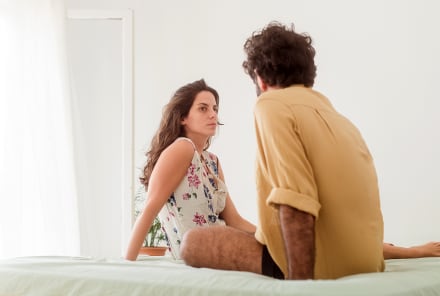
60% Of Relationship Problems Have This In Common, According To Experts
Jordan Dann, LP

It's Not Cheating, But Research Says This Action May Weaken Your Relationship
Sarah Regan
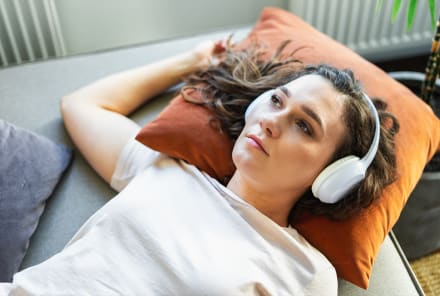
I'm A Couples' Therapist & This Is How I Know A Relationship Is Truly Over

Women Claim This Viral Sex Toy Brings Them To Record-Speed Orgasms
Farrah Daniel

I'm A Neuroscientist: Do This First Thing In The Morning For A Healthier Brain
Hannah Frye

Popular Stories

These Are The 12 Effects Of LSD To Expect During A Psychedelic Trip
- By Sam Woolfe
- November 12, 2021 March 11, 2024
- LSD LSD side effects psychedelics psychedelics side effects
- With 0 comments
The effects of LSD are many and varied. When taking LSD , the drug can lead to significant bodily, perceptual, emotional, and cognitive changes. One trip with LSD can also lead to many insights, which may lead to transformative, long-term changes in your life.
Before taking an LSD dosage , you should be aware of the most common effects to expect during your psychedelic journey. By being aware of the effects of LSD, you will understand that everything you experience is normal, which should make you feel more at ease during the trip.
RELATED : How Long Does LSD Last, And What Should You Expect During A Trip?
The Bodily Effects Of LSD
1. pupil dilation.
A universal physical effect of LSD you should expect, as with many other psychedelics , is pupil dilation. Your pupils will certainly appear larger than normal. So don’t be alarmed if someone you’re with notices this or you notice this when looking in the mirror. (Looking in the mirror on acid can be an intense experience, but if you do it, expect to notice pupil dilation.)
2. Physical Energy And Stimulation
LSD is known to be a physically stimulating drug. When you take it, you should expect to experience an increase in energy and a desire to move around. The effects of LSD are not sedating like psilocybin mushrooms . You may continue to experience the stimulating effects of LSD when the other effects subside. So, if you struggle to fall asleep at night because of this, don’t worry, it’s common.
3. Loss Of Appetite
It’s perfectly normal to lose your appetite after taking LSD. During the trip, you may not want to eat meals as you normally would, and there will probably be certain foods you have no interest in eating. You can find yourself fully engaged in the experience for the whole day without really thinking about the need to eat.
However, as typical as it is to lose your appetite due to the effects of LSD, it’s still important to eat at some point — before, during, or after the trip — in order to maintain your energy and positive mood. While tripping on LSD, many people like to stick to simple foods and snacks, like fruit and nuts.
RELATED : Candy Flipping: What Is It, And Is It Safe?
The Perceptual Effects Of LSD
4. changes to visual perception.
The perceptual effects of LSD can be strong and highly impressive. One way LSD changes your perception is in terms of how the outside world appears. You may experience the following.
- Color enhancement
- Objects appearing more vivid
- Objects morphing and “breathing”
- The appearance of geometric patterns on surfaces
- In high enough doses, visual hallucinations
5. Changes To Auditory Perception
LSD can change the way that things sound as well. When hearing music, other people’s voices, or noises in the outside world, you may experience the below.
- Reverberation
- Echo effects
- Changes in pitch
As well as these effects of LSD, in high enough doses, you can experience auditory hallucinations, like hearing music that isn’t being played.
6. Changes To Time Perception
Time distortion is a common effect of LSD. Many people will experience time dilation, where experiences seem to last much longer than usual. An hour can feel like several hours. With more significant changes to time perception, you may have the sense of eternity, with the present moment feeling eternal. You might also lose your sense of time completely, with the whole notion of time becoming meaningless.
For some, time dilation or the experience of timelessness can be unnerving. For others, it is a fascinating and enriching experience. At the very least, it’s a unique and unusual experience. When changes to time perception occur, it’s important to embrace it and “go with the flow”.
RELATED : How LSD Affects The Brain
The Emotional Effects Of LSD
7. intense positive emotions.
You can experience a range of positive emotions on LSD. Often, you will experience these emotions to an intensity that you haven’t felt before. You might also experience some of these emotions rarely in your normal, day-to-day life, which is why many people find the LSD experience to be enlightening and therapeutic. These positive emotions may include the following.
- Peacefulness
- Contentment
- Self-compassion
- Compassion for others
8. Intense Negative Emotions
You should be prepared for the possibility of experiencing negative emotions on LSD — and sometimes in an intense way. While many people may be afraid of experiencing these emotions, or would prefer to have a wholly positive trip, there can be great value in the negative side to our emotions.
They can teach you how to deal with challenging moments: through mindfulness, acceptance, and self-compassion. The negative emotions you might experience during your LSD trip include the following.
9. Swings In Emotions
One of the other common emotional effects of LSD is a swing in emotions. You might find yourself transitioning from an intense positive emotional state to a negative one, like feeling extreme joy and elation while listening to music in one moment, then feeling anxious and uncomfortable about something external or internal the next moment.
This is nothing to worry about. It’s a perfectly normal aspect of the experience. Embrace this aspect as part of the ride.
Often, your environment can play a role in these swings in emotions. Influential factors include the below.
- Changes to music
- Moving from one room to another
- Going from inside to outside (and vice versa)
- The people you’re tripping with
- The conversations you have
- Changes in the weather
- Going from an urban environment to somewhere in nature
- Going from somewhere loud and busy to somewhere quiet and peaceful
RELATED : Is LSD Legal – Everything You Need To Know
LSD Changes The Way You Think
10. introspection.
The LSD experience can be deeply introspective, which many people find to be meaningful and insightful. During your trip, you may find yourself closely examining your thoughts and feelings. You may come to a new understanding of yourself and your patterns of thinking and feeling.
Many people find that LSD has helped them to better understand what their personality is like and what their core values are, as well as how life events have shaped them into the person they are today.
During an LSD journey, you might also re-evaluate your assumptions and attitudes about yourself, others, society, and the world at large.
While the introspective nature of the LSD experience can be positive, it does have the potential to be challenging as well. It’s common for people to say that the acid mindset is prone to overthinking and overanalyzing.
If you find yourself thinking in this way and it’s making you uncomfortable, it’s important to let your thoughts arise and pass, without resisting them. The experience will pass, and you may even find it valuable, helping to shed light on how you get stuck in certain patterns of thought.
11. Enhanced Creativity
Many people find that microdosing LSD enhances their creativity. This can manifest in various ways, including the below.
- An increased desire to create art
- Drawing or painting in new and unusual ways
- Coming up with different solutions to a problem
- Thinking about ideas and concepts in a new way (e.g. comparing, contrasting, or combining separate ideas)
- Coming up with funny ideas, images, or scenarios
12. Changes To Your Philosophical Views
Finally, LSD has the potential to radically alter metaphysical beliefs in a person. This is especially the case in higher doses when you can experience things such as the following.
- A feeling of eternity
- Existing outside of space and time
- A sense of the sacred, holy, or divine, which may be interpreted as “God”
- Ego Death : the loss of your sense of personal identity
- The dissolution of boundaries between you and the outside world (which often accompanies ego loss)
- A feeling of oneness or interconnectedness (again, this is associated with ego loss)
- A feeling of confronting ultimate reality or gaining insights into the nature of reality
These sorts of experiences may change how you think about the below.
- The nature of space and time
- The existence of God or a supernatural reality
- The fundamental nature of reality (i.e. whether it is ultimately physical or mental)
- The nature of consciousness
- The nature of the self
- Existential questions relating to death, meaning, connection, and freedom
- Your place in the universe
It should also be stressed that LSD won’t necessarily help you arrive at any clear answers to these sorts of questions — or about anything, in fact. While it is true that many people find LSD provides clear insights about themselves, life, and reality, the experience can also create more questions than answers.
Two effects of LSD might be a mysterious feeling, or that there is so much more that you don’t know. This can be quite a humbling experience.
RELATED : What Causes Visuals In Psychedelic Trips?
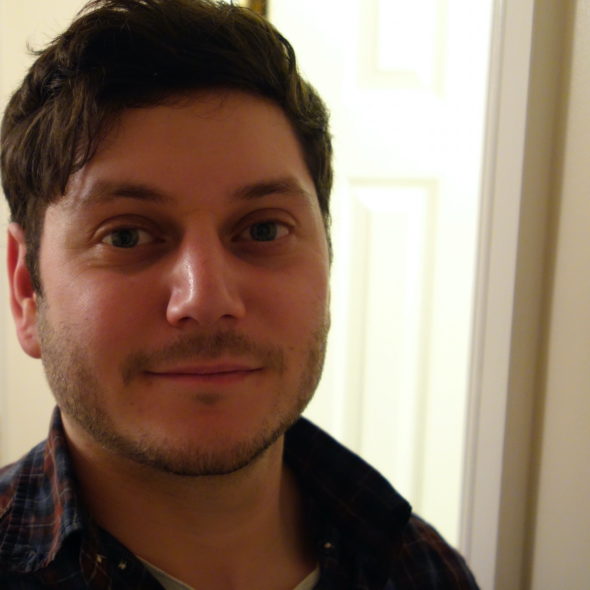
Sam Woolfe is a freelance writer based in London. His main areas of interest include mental health, mystical experiences, the history of psychedelics, and the philosophy of psychedelics. He first became fascinated by psychedelics after reading Aldous Huxley's description of the mescaline experience in The Doors of Perception. Since then, he has researched and written about psychedelics for various publications, covering the legality of psychedelics, drug policy reform, and psychedelic science.
Related Posts
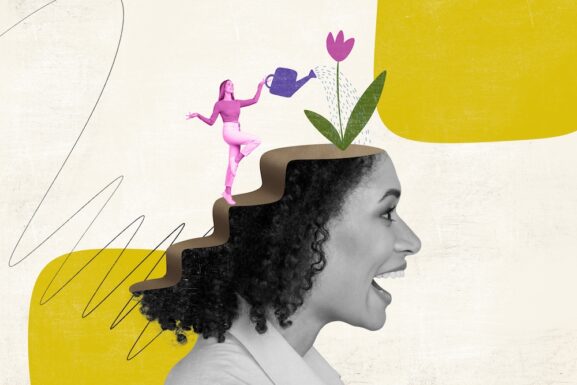
- July 17, 2024
Here’s What Psychedelic Integration Therapy Typically Costs
Integration therapy has proven to make psychedelic experiences more impactful. So how much does psychedelic integration therapy cost?

- July 9, 2024
Group of Prominent Scientists Write Letter Urging FDA to Approve MDMA-assisted Therapy
A group of prominent scientists have written a letter to the FDA, urging the approval of MDMA-therapy to treat PTSD.
Leave a Reply Cancel reply
Your email address will not be published. Required fields are marked *
Save my name, email, and website in this browser for the next time I comment.
This site is protected by reCAPTCHA and the Google Privacy Policy and Terms of Service apply.
Looking for Treatment?
We'll match you with the best clinic in your area.
- Name* (Required)
- Email (Required)
- ZIP Code (Required)
- See If You Qualify for Insurance Coverage
- If you are in the US, fill the following to check if you might be covered Which State Are You in? Alabama Alaska Arkansas Arizona California Colorado Connecticut Delaware Florida Georgia Hawaii Idaho Illinois Indiana Iowa Kansas Kentucky Louisiana Maine Maryland Massachusetts Michigan Minnesota Mississippi Missouri Montana Nebraska Nevada New Hampshire New Jersey New York New Mexico North Carolina North Dakota Ohio Oklahoma Oregon Pennsylvania Puerto Rico Rhode Island South Carolina South Dakota Tennessee Texas Utah Vermont Virginia Washington Washington, D.C. (District of Columbia) West Virginia Wisconsin Wyoming American Samoa Guam Northern Mariana Islands U.S. Virgin Islands
- Select your insurance provider in Alabama Select your insurance provider in Alabama Blue Cross and Blue Shield of Alabama Viva Health AllWays Health Partners Medicaid Medicare Other
- Select your insurance provider in Alaska Select your insurance provider in Alaska Premera Blue Cross Blue Shield of Alaska Moda Health UnitedHealthcare of Alaska Medicaid Medicare Other
- Select your insurance provider in Arkansas Select your insurance provider in Arkansas Arkansas Blue Cross Blue Shield QualChoice Health Insurance Ambetter from Arkansas Health & Wellness Medicaid Medicare Other
- Select your insurance provider in Arizona Select your insurance provider in Arizona Blue Cross Blue Shield of Arizona Health Net of Arizona Ambetter from Arizona Complete Health Medicaid Medicare Other
- Select your insurance provider in California Select your insurance provider in California Anthem Blue Cross Blue Shield of California Kaiser Permanente Medi-Cal Health Net CalChoice Medicaid Medicare Other
- Select your insurance provider in Colorado Select your insurance provider in Colorado Anthem Blue Cross Blue Shield of Colorado Kaiser Permanente Colorado Cigna Medicaid Medicare Other
- Select your insurance provider in Connecticut Select your insurance provider in Connecticut ConnectiCare Aetna Oxford Health Plans Medicaid Medicare Other
- Select your insurance provider in Delaware Select your insurance provider in Delaware Highmark Blue Cross Blue Shield Delaware Aetna UnitedHealthcare of Delaware Medicaid Medicare Other
- Select your insurance provider in Florida Select your insurance provider in Florida Florida Blue AvMed Molina Healthcare of Florida Medicaid Medicare Other
- Select your insurance provider in Georgia Select your insurance provider in Georgia Blue Cross Blue Shield of Georgia Kaiser Permanente Georgia Ambetter from Peach State Health Plan Medicaid Medicare Other
- Select your insurance provider in Guam Select your insurance provider in Guam TakeCare Insurance Company NetCare Life and Health Insurance Company StayWell Insurance Medicaid Medicare Other
- Select your insurance provider in Hawaii Select your insurance provider in Hawaii Hawaii Medical Service Association (HMSA) Kaiser Permanente Hawaii AlohaCare Medicaid Medicare Other
- Select your insurance provider in Idaho Select your insurance provider in Idaho Blue Cross of Idaho SelectHealth PacificSource Health Plans Medicaid Medicare Other
- Select your insurance provider in Illinois Select your insurance provider in Illinois Blue Cross Blue Shield of Illinois Cigna Aetna Medicaid Medicare Other
- Select your insurance provider in Indiana Select your insurance provider in Indiana Anthem Blue Cross Blue Shield of Indiana MDwise Managed Health Services (MHS) Medicaid Medicare Other
- Select your insurance provider in Iowa Select your insurance provider in Iowa Wellmark Blue Cross and Blue Shield of Iowa Coventry Health Care of Iowa Amerigroup Iowa Medicaid Other Medicare Other
- Select your insurance provider in Kansas Select your insurance provider in Kansas Blue Cross and Blue Shield of Kansas Sunflower State Health Plan Aetna Medicaid Medicare Other
- Select your insurance provider in Kentucky Select your insurance provider in Kentucky Anthem Blue Cross Blue Shield of Kentucky Kentucky Health Cooperative WellCare Health Plans of Kentucky Medicaid Medicare Other
- Select your insurance provider in Louisiana Select your insurance provider in Louisiana Blue Cross and Blue Shield of Louisiana Vantage Health Plan Louisiana Healthcare Connections Medicaid Medicare Other
- Select your insurance provider in Maine Select your insurance provider in Maine Anthem Blue Cross Blue Shield of Maine Harvard Pilgrim Health Care Martin's Point Health Care Medicaid Medicare Other
- Select your insurance provider in Maryland Select your insurance provider in Maryland CareFirst BlueCross BlueShield Kaiser Permanente UnitedHealthcare of the Mid-Atlantic Medicaid Medicare Other
- Select your insurance provider in Massachusetts Select your insurance provider in Massachusetts Blue Cross Blue Shield of Massachusetts Harvard Pilgrim Health Care Tufts Health Plan Medicaid Medicare Other
- Select your insurance provider in Michigan Select your insurance provider in Michigan Blue Cross Blue Shield of Michigan Priority Health McLaren Health Plan Medicaid Medicare Other
- Select your insurance provider in Minnesota Select your insurance provider in Minnesota Blue Cross and Blue Shield of Minnesota HealthPartners Medica Medicaid Medicare Other
- Select your insurance provider in Mississippi Select your insurance provider in Mississippi Blue Cross and Blue Shield of Mississippi Ambetter from Magnolia Health Molina Healthcare of Mississippi Medicaid Medicare Other
- Select your insurance provider in Missouri Select your insurance provider in Missouri Anthem Blue Cross Blue Shield of Missouri Centene Corporation (Missouri Care) CoxHealth Network Other
- Select your insurance provider in Montana Select your insurance provider in Montana Blue Cross and Blue Shield of Montana PacificSource Health Plans Montana Health CO-OP Medicaid Medicare Other
- Select your insurance provider in Nebraska Select your insurance provider in Nebraska Blue Cross and Blue Shield of Nebraska Medica UnitedHealthcare of the Midlands Medicaid Medicare Other
- Select your insurance provider in Nevada Select your insurance provider in Nevada Health Plan of Nevada (HPN) Prominence Health Plan SilverSummit Healthplan Medicaid Medicare Other
- Select your insurance provider in New Hampshire Select your insurance provider in New Hampshire Anthem Blue Cross Blue Shield of New Hampshire Harvard Pilgrim Health Care Ambetter from NH Healthy Families Medicaid Medicare Other
- Select your insurance provider in New Jersey Select your insurance provider in New Jersey Horizon Blue Cross Blue Shield of New Jersey AmeriHealth New Jersey Oscar Health Insurance Medicaid Medicare Other
- Select your insurance provider in New York Select your insurance provider in New York Empire BlueCross BlueShield Healthfirst Fidelis Care Medicaid Medicare Other
- Select your insurance provider in New Mexico Select your insurance provider in New Mexico Blue Cross and Blue Shield of New Mexico Presbyterian Health Plan Molina Healthcare of New Mexico Medicaid Medicare Other
- Select your insurance provider in North Carolina Select your insurance provider in North Carolina Blue Cross and Blue Shield of North Carolina UnitedHealthcare of North Carolina Ambetter from Carolina Complete Health Medicaid Medicare Other
- Select your insurance provider in North Dakota Select your insurance provider in North Dakota Blue Cross Blue Shield of North Dakota Sanford Health Plan Medica Medicaid Medicare Other
- Select your insurance provider in Ohio Select your insurance provider in Ohio Anthem Blue Cross Blue Shield of Ohio Medical Mutual of Ohio Molina Healthcare of Ohio Medicaid Medicare Other
- Select your insurance provider in Oklahoma Select your insurance provider in Oklahoma Blue Cross and Blue Shield of Oklahoma CommunityCare GlobalHealth Medicaid Medicare Other
- Select your insurance provider in Oregon Select your insurance provider in Oregon Regence BlueCross BlueShield of Oregon Kaiser Permanente Northwest Moda Health Medicaid Medicare Other
- Select your insurance provider in Pennsylvania Select your insurance provider in Pennsylvania Independence Blue Cross Highmark Blue Cross Blue Shield Pennsylvania UPMC Health Plan Medicaid Medicare Other
- Select your insurance provider in Puerto Rico Select your insurance provider in Puerto Rico Triple-S Salud MCS Healthcare Holdings First Medical Health Plan Medicaid Medicare Other
- Select your insurance provider in Rhode Island Select your insurance provider in Rhode Island Blue Cross and Blue Shield of Rhode Island Neighborhood Health Plan of Rhode Island UnitedHealthcare of New England Medicaid Medicare Other
- Select your insurance provider in South Carolina Select your insurance provider in South Carolina Blue Cross and Blue Shield of South Carolina Molina Healthcare of South Carolina Absolute Total Care Medicaid Medicare Other
- Select your insurance provider in South Dakota Select your insurance provider in South Dakota Wellmark Blue Cross and Blue Shield of South Dakota Avera Health Plans Sanford Health Plan Medicaid Medicare Other
- Select your insurance provider in Tennessee Select your insurance provider in Tennessee BlueCross BlueShield of Tennessee Cigna Amerigroup Tennessee Medicaid Medicare Other
- Select your insurance provider in Texas Select your insurance provider in Texas Blue Cross Blue Shield of Texas Cigna UnitedHealthcare of Texas Medicaid Medicare Other
- Select your insurance provider in Utah Select your insurance provider in Utah SelectHealth University of Utah Health Plans Molina Healthcare of Utah Medicaid Medicare Other
- Select your insurance provider in Vermont Select your insurance provider in Vermont Blue Cross and Blue Shield of Vermont MVP Health Care Vermont Health Connect Medicaid Medicare Other
- Select your insurance provider in Virginia Select your insurance provider in Virginia Anthem Blue Cross Blue Shield of Virginia Optima Health UnitedHealthcare of Virginia Medicaid Medicare Other
- Select your insurance provider in Washington Select your insurance provider in Washington Premera Blue Cross Kaiser Permanente Washington Molina Healthcare of Washington Medicaid Medicare Other
- Select your insurance provider in Washington, D.C. (District of Columbia) Select your insurance provider in Washington, D.C. (District of Columbia) CareFirst BlueCross BlueShield Kaiser Permanente Mid-Atlantic UnitedHealthcare of the Mid-Atlantic Medicaid Medicare Other
- Select your insurance provider in West Virginia Select your insurance provider in West Virginia Highmark Blue Cross Blue Shield West Virginia The Health Plan CareSource West Virginia Medicaid Medicare Other
- Select your insurance provider in Wisconsin Select your insurance provider in Wisconsin Anthem Blue Cross Blue Shield of Wisconsin Quartz WEA Trust Medicaid Medicare Other
- Select your insurance provider in Wyoming Select your insurance provider in Wyoming Blue Cross Blue Shield of Wyoming WINhealth Partners UnitedHealthcare of Wyoming Medicaid Medicare Other
- Select your insurance provider in American Samoa Select your insurance provider in American Samoa Medicaid Medicare Other
- Select your insurance provider in Northern Mariana Islands Select your insurance provider in Northern Mariana Islands Medicaid Medicare Other
- Select your insurance provider in U.S. Virgin Islands Select your insurance provider in U.S. Virgin Islands Viya Insurance Medicaid Medicare Other
- Other Insurance
By signing up, you agree to our Terms & Privacy Policy , which includes the handling of your information in compliance with HIPAA regulations.
- Consent (Required) I accept the terms and conditions (Required)
Explore Psychedelic Therapy Regions
Join the list.
Let’s Talk About Bad Trips: Separating Difficult from Traumatic
Bad trips are a polarizing concept in psychedelics. acknowledging that they exist - and knowing how to work with them - can be healing..
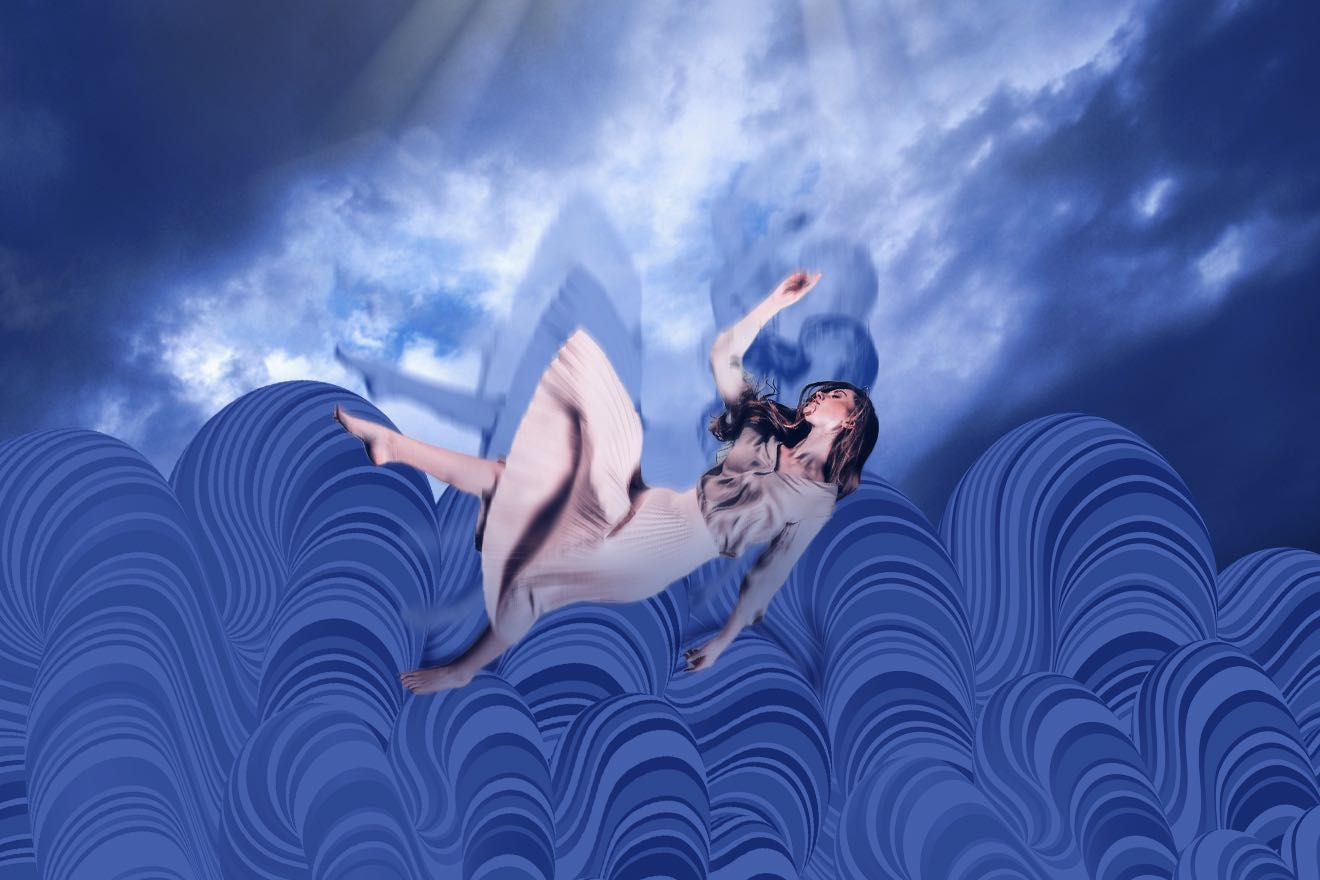
Want to start a war on social media? Post something like this: “Bad trips exist.”
As somebody who has worked in the psychedelic space for years now and has supported many, many people during their trips, it’s time to come out of the closet and say it: people can be harmed by psychedelics, and bad trips exist.
But allow me to define the term “ bad trip ,” because the vague phrase has become too polarized to be meaningful.
When I talk about bad trips, I’m not talking about the harrowing, painful journeys to the underworld from which we return raw and exhausted, with some important piece of our healing work having been catalyzed.
When I talk about bad trips, I mean the trips that register in the body as a trauma or injury to the nervous system. And that is not , in fact, the same thing as a difficult trip.
What happens when we deny this truth is that we inadvertently alienate those who have had traumatic or harmful experiences. These people have endured a trauma, and are now being told that they have not.
So let’s talk about traumatic trips: The psychedelic experiences that leave us injured. Thankfully, they are rare.
I’m not just speaking from my observations as a clinician, but also from personal experience: I had a traumatic psychedelic experience on ayahuasca many years ago. I was decidedly “not okay” afterwards and required much time and support to recover.
Despite the shock and injury to my nervous system, I eventually used psychedelics again. In fact, in the eight or so years that have passed since the traumatic trip, I have openly supported the legalization of psychedelics, and have built two businesses centered around empowering people to heal with psychedelics.
I have also taken sabbaticals from my practice to work in other countries as a psychedelic facilitator. I am now a lead educator in the country’s first training program for psilocybin facilitators to be licensed by Oregon’s Higher Education Coordinating Commission (HECC). I’m a ketamine prescriber, and I train other prescribers in the use of ketamine for treating chronic pain and mood disorders. I lead and run intensive healing retreats. I’ve also taken my own fair share of mind altering substances in a variety of sets, settings, and time zones.
All of which is to say: I am no newcomer to the world of psychedelics.
And yet I cannot swallow the field’s echo-chamber-like mantra that “there is no such thing as a bad trip .” In fact, I find the rabidity with which some of my fellow cosmonauts deny the existence of bad trips to be rather disconcerting. In the more-than-one heated debate I’ve had about this topic, I’ve noticed certain patterns – or myths, if you will – around the topic of traumatic trips. I address each one here.
Myth: Bad Trips Only Happen When the Set and Setting Are Improper
If the word “only” didn’t appear in the above sentence, it would be true. In my experience in working with hundreds of patients who have used psychedelics – and in administering psychedelics myself – I’ll say that the vast majority of traumatic trips happen when the environment is not safe, calm, and supportive.
When we talk about set and setting in psychedelic harm reduction , we mean two things: (1) the person’s mindset when they took the drug, and (2) their physical environment. If somebody had just had an argument with their spouse before taking LSD, for example, that’s their set. If they were at a noisy, crowded music festival, that’s the setting. Perhaps unsurprisingly, the majority of bad trips happen when individuals on drugs feel overwhelmed in a noisy, chaotic setting like that of a concert or party. Drug-drug interactions are also often at play during difficult trips, for example, when people combine alcohol with psychedelics.
When people insist a little too strongly that, “There’s no such thing as a bad trip, if the set and setting are right,” I feel uneasy. It’s perhaps like asking a rape survivor, “Yeah, but what were you wearing?” (If you think the analogy of a bad trip and rape is too far of a reach, you luckily have never had a traumatic trip.)
There are other factors in psychedelic harm reduction that influence the outcomes. These include the substance being used, the dosage taken, and the people you’re with.
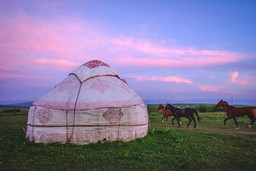
The night of my traumatic trip was the third of a three-night ayahuasca ceremony. I was there with my then-partner. I liked the other people attending. I trusted the facilitators completely and knew they were well trained and highly esteemed by their colleagues. The medicine was pure. The environment was soothing and well contained. The music was beautiful. The first half of the third ceremony was trippy, strange, and lovely.
After I drank my second dose of the brew, however, I was decidedly NOT OKAY. I will not describe the experience here, but I will say two things about it: (1) I felt like my nervous system was being gang raped, repeatedly, and (2) I can now absolutely understand why people with psychosis sometimes choose to die by suicide.
The facilitators of the circle took care of me, pulling me out of the ceremony space and letting me try to calm down outside. Somebody stayed with me at all times until I vomited up the salt water they gave me to drink.
There’s one factor of harm reduction we don’t discuss enough: dose. It’s possible that the second cup of ayahuasca I drank that night contained more voltage than my nervous system could handle – that it was too much, too fast, and too hard for me.
The Influence of Neuroticism
Aside from the environment, another factor that can predict bad trip potential is neuroticism. Neuroticism is one of the “Big Five” traits thought to collectively form the full picture of personality.
People who score high on neuroticism tend to overthink things, typically have a hard time relaxing, and may feel irritated in noisy settings or stressful situations. These folks are often described as “high strung.”
At least two studies have shown that people who score high on neuroticism scales are more likely to have a challenging psychedelic trip than those who score lower. [1] , [2] The theory behind this is that if a neurotic’s negative thoughts or feelings arise during a psychedelic trip, the person might get pulled into an amplification spiral of their own negativity.
But does that mean it’s somebody’s fault that if they tend towards neurosis and they have a bad trip? Aren’t psychedelics supposed to help heal negativity? What does it mean that the same drugs that help soothe negative thoughts and feelings can also make us feel worse? (Let a neurotic chew on that one.)
Once again, we could very easily slip into the territory of victim blaming if we are not mindful.
While writing this article, I took the Big Five Personality Test online. I scored in a higher-than-average percentile for negative emotionality (neuroticism). That may explain why grumpy cat is one of my heroes and why my friend Greg refers to me as “a female Larry David.” It could also explain why I’m one of the unlucky few who have had a traumatic psychedelic trip. (Side note: I also scored pretty high on open mindedness, so that could explain why got into psychedelics in the first place.)
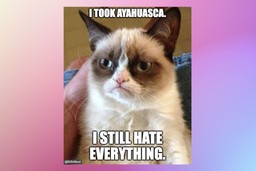
Myth: Bad Trips Are Actually Just Difficult Experiences That Haven’t Been Integrated
I continue to stay in this field because traumatic trips are, indeed, exceedingly rare, and because the healing gains people typically experience from psychedelics are unparalleled by any other intervention I’ve found.
Working regularly with patients in non-ordinary states of consciousness, I see that the most challenging experiences are often the most rewarding. Drawing from my previous experiences in volunteering with the Zendo Project and White Bird , I teach my students the tenants of “trip sitting.”
As one of the Zendo principles states: difficult is not necessarily bad. Note that the phrase is not “difficult is not bad,” but rather, “ difficult is not necessarily bad. ” In other words, difficult can sometimes be bad.
Another layer to this argument is that if you wait long enough, the bad experience will prove itself to be good. This does, indeed, happen to many people after their challenging journeys. Yet there is a difference between suggesting this to a bad trip survivor and insisting that “everyone gets the trip they need.”
Many of my new-age peers have become allergic to the word “bad,” especially within the context of bad trips. “Is anything really bad?” I’m often asked. The argument here, as I understand it, is that with every cloud there comes a silver lining, and that silver lining might just hold a very valuable teaching for us.
I admit that my own traumatic trip gave me a lesson: It taught me that there is indeed such a thing as a bad trip. Another gift was that my bad trip helped me to better understand, validate, and support others who have been harmed by psychedelics. Another lesson was this: my bad trip was an amplifier of the toxic positivity that I see running rampant in the psychedelic field.
In fact, a patient once confessed to me, “I’m just so mad at her” – her being ayahuasca – “but everyone in the group is so in love with Great Grandmother that if I say one bad thing about her, it’ll be like heresy.” I noticed that he was clenching his jaw and only breathing into the upper part of his chest. I leaned forward, looked him in the eye, and said: “Tell me exactly what you think about that bitch – you won’t offend me.”
By the end of the hour, he had raged, wept, and laughed. His breath was reaching his abdomen and his jaw was relaxed. The client messaged me some days later, saying, “That was so healing for me just to be heard, to be able to say mean things without being afraid somebody would cancel me. Thank you.”
Perhaps for this client, “the medicine” was to be heard without anybody trying to stop him from expressing anger. Maybe the bad trip was just part of the arc that took him to that finale. I don’t know.
Myth: There’s No Such Thing as Bad
There’s that old story about the Zen master, whose son got a new horse. “What good luck!” The neighbors said. “We’ll see,” said the master. One day the son was thrown from the horse and broke his leg. “How terrible!” Said the neighbors. “We’ll see,” said the master. Then the country went to war, and the army came to recruit soldiers. Because the young man’s leg was broken, they army didn’t take him to battle. “How good!” said the neighbors. “We’ll see,” said the Zen master. Perhaps there is no good or bad.
What I’ve always found lacking in this story about the Zen master was the voice of his son – the one who actually fell from the horse.
Is a bad trip like falling from a horse? It absolutely can be. Yet something about the “you just haven’t integrated it yet, there’s gold there” argument feels like a dismissive bypass. Let us consider other situations in which we could apply such a statement:
- After getting food poisoning and vomiting for hours
- After taking penicillin and breaking out in a full body rash
- After going on a horrible date
- After surviving a sexual assault
- After your child has been diagnosed with a life-threatening illness
- After losing a loved one to cancer
- After surviving a terrible accident that has resulted in disability
- After your cat has been run over by a car
- After losing a house to foreclosure
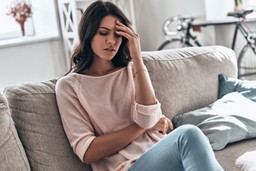
Would we really tell the people in the above hypothetical situations that there was no such thing as bad shellfish? No such thing as a bad drug reaction or a bad date? No such thing as rape? No such thing as a bad diagnosis, a bad prognosis? Or how about just a bad day? Or something as non-threatening as a bad movie, a bad haircut, or a bad parking job? Would we really tell somebody whose child just died to avoid using the word “bad” to describe her condition?
Perhaps it is true that none of these things are bad, and that all of them are blessings in disguise. But would we really get righteous about it on social media, the way some of us do about denying bad trips?
And what’s so bad about saying “bad,” anyway? Must everything truly be a blessing? (The neurotic writing this article needs to know.)
I’d also like to share the story of Becks. Becks was a 24-year-old female patient of mine with anorexia nervosa who did MDMA-assisted psychotherapy to heal from PTSD (post-traumatic stress disorder) rooted in childhood sexual abuse.
In a follow-up visit, Becks told me that the MDMA-assisted therapy session (done with an underground provider) had done wonders for her. She was getting much more mileage out of her weekly therapy sessions. She was now remembering things she had repressed previously, and she was able to stay present when the memories arose.
Becks had also forgiven herself. She explained that without realizing it, she had blamed herself for what happened to her when she was a child, punishing herself through self-denigrating thoughts, food restriction, and high-risk drinking. Her MDMA-assisted therapy session helped her identify this pattern and realize that she didn’t deserve the blame or the punishment. Having forgiven herself, Becks was now sleeping better at night, eating when she was hungry, and avoiding alcohol. Clearly, much healing had occurred for her.
Yet Becks felt discouraged and worried. “I don’t think I’m doing it right,” she told me while pulling at the rings on her fingers.
“Why’s that?” I asked.
“Well,” she explained, “I know I’m supposed to get to this place where I feel like the trauma was a blessing – and that hasn’t happened.”
“You think you’re supposed to get to a place where you think that being repeatedly molested as a child is a blessing? ” I asked her.
“Yes,” she said with a defeated sigh as she looked at her shoes.
“Where’d you get that idea?”
Her head snapped up to look at me, breathless, huge-eyed. And then she burst out laughing. The laughter turned to tears. She sobbed and babbled something about a podcast she’d heard. Then she laughed some more. Her face lit up and the color returned to her cheeks.
“Becks, was being molested by your stepbrother every night a blessing?” I asked her.
“No, it was a fucking horrible nightmare that I wouldn’t wish on my worst enemy,” she declared.
“Okay,” I said, “and is it possible that it was a fucking horrible nightmare and that you still get to heal and have a happy adult life starting right now?” I asked.
“ Fuck yeah,” she said. And the look on her face told me she believed it.
(This, by the way, is what happens when you go to a doctor who scores high on neuroticism scales: We acknowledge and celebrate that life might be a fucked up mess sometimes, and that we can still heal even if we don’t buy into toxic positivity.)
(Also: I do have patients who come to see their traumas as gifts. It truly is a powerful and important step in their healing. But let’s not assume that healing cannot happen in other forms. Everyone’s path is different and valid.)
Myth: Talking About Bad Trips Is Going to Harm the Psychedelic Movement
On the day I graduated from medical school, I took an oath to First, Do No Harm . Sometimes, First, Do No Harm means doing the uncomfortable thing or saying what others don’t want to hear. In this case, it means acknowledging that there are risks to using psychedelic substances, and a traumatic trip is one of those risks.
Every therapy, every medicine, every experience comes with risks and benefits. One risk of taking vitamin C is that too much can cause diarrhea. One risk of antibiotics is that they can lead to vaginal yeast infections. One risk of using acetaminophen (paracetamol) is that it’s hard on the liver. One risk of eating a vegan diet is that it can deplete vitamin B12 stores and subsequently trigger depression. One risk of a life-saving surgery is that it can result in a lethal infection. And so forth.
Psychedelic medicines also come with their risks, and the risk of a traumatic trip should be on that list. Admittedly, it should be in small letters, towards the bottom of the list, next to the words “very rare when used in therapeutic contexts.” But traumatic trips are, in fact, “a thing.” They’re part of the fine print.
As far as I know, bad trips have not been reported in any of the clinical trials on psychedelics – but keep in mind that we haven’t had too many people go through the clinical trials as compared to the number of folks doing psychedelics “in the wild.” Bad trips may have also been down-played in the trials as “dysphoria” or “agitation” by the researchers.
Are the possible risks of psychedelic medicines worth wagering for the potential benefits? The answer to that question can only be answered on a case-by-case basis – as with any intervention.
For me personally: The healing engendered by psychedelics has far outweighed and more than redeemed the harm I’ve endured. Every time I take a psychedelic medicine now, I understand that I am taking a risk, and I make the clear, informed decision to proceed – or not to proceed, depending on the circumstance.
When I advocate for the destigmatization and legalization of psychedelics, furthermore, I don’t just act out of love for the movement: I act out of love for my patients.
What’s going to injure the psychedelic movement even more than a level-headed discussion about traumatic trips is the harm that may be caused by denying them.
How to Talk to a Bad Trip Survivor
So, what should we say to a survivor of a traumatic trip? Anything but: “There’s no such thing as a bad trip.”
If somebody tells you they’ve endured a bad trip, treat them as if they’d just told you that they survived an accident, an assault, or another kind of shock. Offer them comfort and support. Listen. Don’t ask them to prove the truth of what they say happened.
Essentially: treat them as you would treat the survivor of any kind of experience that was too much, too hard, and/or too fast for their mind, body, or spirit.
Remember that the word “trauma” does not refer to the distressing event itself, but rather to the resulting emotional and neurological response. Trauma can harm a person’s sense of Self, their sense of safety, their ability to navigate relationships, and their ability to regulate their emotions. Trauma, in other words, is injury to the nervous system that ripples outward. (To be clear: Trauma does not mean simply feeling uncomfortable or offended, as some people mistakenly use it.)
Even if integration of the experience would be helpful for the survivor – and might even help them stop using the term “bad trip” to describe it – that cannot happen at the beginning. The first thing the bad trip survivor likely needs is to know that they are safe now . The nightmare has ended, and they are loved and supported by trustworthy people who care.
How can we help others feel safe? By our presence. By regulating our own breath. By listening. By letting them know that we believe them. By showing empathy. By making them soup, gifting them a massage, or offering to pick their kids up from school. By being kind.
Even if the traumatic trip was the result of poor planning, improper set and setting, or other user error, hold your tongue for now. Think of how you might react if a friend was in a terrible car accident that resulted from driving when they were overly tired.
Think of how you might respond if a child dragged a chair to the kitchen counter and climbed atop it to try and reach the off-limits cookie jar sitting high up on a shelf – only to tumble backwards and slam onto the floor. Would you shout, “Well, that’s what you get for climbing on the chair!” while the poor kiddo cried on the linoleum? I hope not. I hope you would sit by their side, hug them, and stroke their hair. Once you felt their breathing return to normal and the smile return to their face – and not a second sooner – might you ask, “Honey, remember what we said about climbing on the furniture?”
Healing From My Bad Trip
It took me almost eight years to feel like I had fully integrated my bad trip. Curiously, what helped me complete the arc from wound to health was a peyote ceremony.
What prolonged my healing was people insisting that there was no such thing as a bad trip. I heard this line in my ayahuasca circle, at psychedelic conferences, on social media, on podcasts, and in books. The experience-denying and victim-blaming made me feel angry and alone.
Another factor that delayed my full recovery was peer pressure. Buckling to the well-intentioned insistence of friends, I returned to the ayahuasca circle (and other psychedelic circles) sooner than I truly wanted to. This meant that I was taking medicines with a mindset of doubt and fear, which resulted in several dysphoric, confusing, and terrifying journeys that only compounded the injury.
I was fortunate to find a healer who believed in bad trips and who confirmed that I was not fully in my body. Through regular sessions, I was able to return. While my therapist hadn’t had much psychedelic experience herself, she at least believed me. That allowed us to start from a place of trust and not from a place of defensiveness. I also took a break from psychedelics and instead cultivated gentler, more predictable health-affirming practices like singing and going to the gym.
Years after the experience, I read about the concept of “too much, too hard, too fast” in a book about psychedelic facilitation. I felt a surge of heat rush to my face as I read the words; hot tears filled my eyes. I hadn’t made it up. It had happened to me. I wasn’t weak, or stupid, or crazy. But why was the truth so hard for other people to accept?
I’m grateful to my own stubborn will to get better – to that spark within me that keeps me seeking out people, places, and things that can help me heal, grow, and learn.
There was, indeed, some good that came from my bad trip on ayahuasca all those years ago. The seams of that horrific shroud were sewn with golden thread. I am grateful for the blessings gleaned.
I am also grateful to my unconditionally supportive family, friends, and partner, and to Grandfather Peyote for helping me weave the blessings into my life and pull back the heavy curtain.
I had a bad trip, and that’s okay.
And you know? Considering that I’m a neurotic, I’m pretty proud of myself for saying so.
Follow your Curiosity
[1] Barrett FS, Johnson MW, Griffiths RR. Neuroticism is associated with challenging experiences with psilocybin mushrooms. Pers Individ Dif. 2017 Oct 15;117:155-160. doi: 10.1016/j.paid.2017.06.004 .
[2] Petter Grahl Johnstad (2021) The Psychedelic Personality: Personality Structure and Associations in a Sample of Psychedelics Users, Journal of Psychoactive Drugs, 53:2, 97-103, DOI: 10.1080/02791072.2020.1842569
You may also be interested in:

Harm Reduction
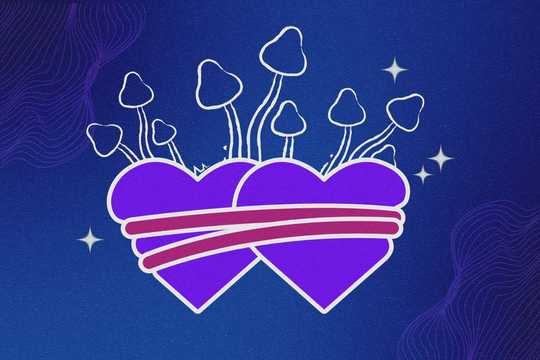
Self-Discovery
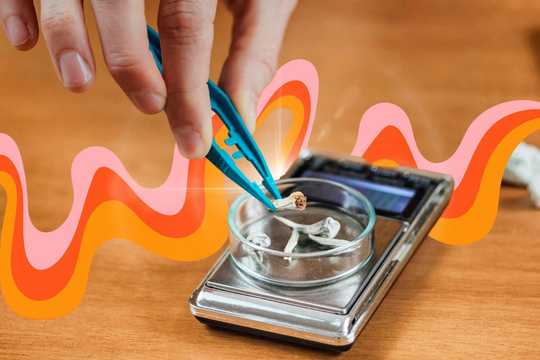
Integration

Datura: Risks, Experience & Trip Reports
“A 72-hour psychedelic nightmare from which you may never recover.”
Is Datura Psychedelic?
Datura specs & technical details, the physical effects of datura, the psychological effects of datura, traditional uses of datura, how long does datura last, is datura legal, how datura works, datura & ayahuasca, 1. can you smoke datura, 2. what are the effects of microdosing datura, final thoughts: what is datura, subscribe to the tripsitter newsletter.
Before we get into what datura is and how it works, it’s important to mention straight away that datura is not a safe plant .
There are many cases of people becoming permanently injured both mentally and physically from the effects of this plant.
Datura is no joke.
With that out of the way, let’s explore the datura plant in more detail.
What is Datura?
Datura is a plant in the nightshade family ( Solanaceae ). It contains a series of tropane alkaloids that interrupt the parasympathetic nervous system of mammals.
There are 12 separate species in the Datura genus, but the most common is Datura stramonium .
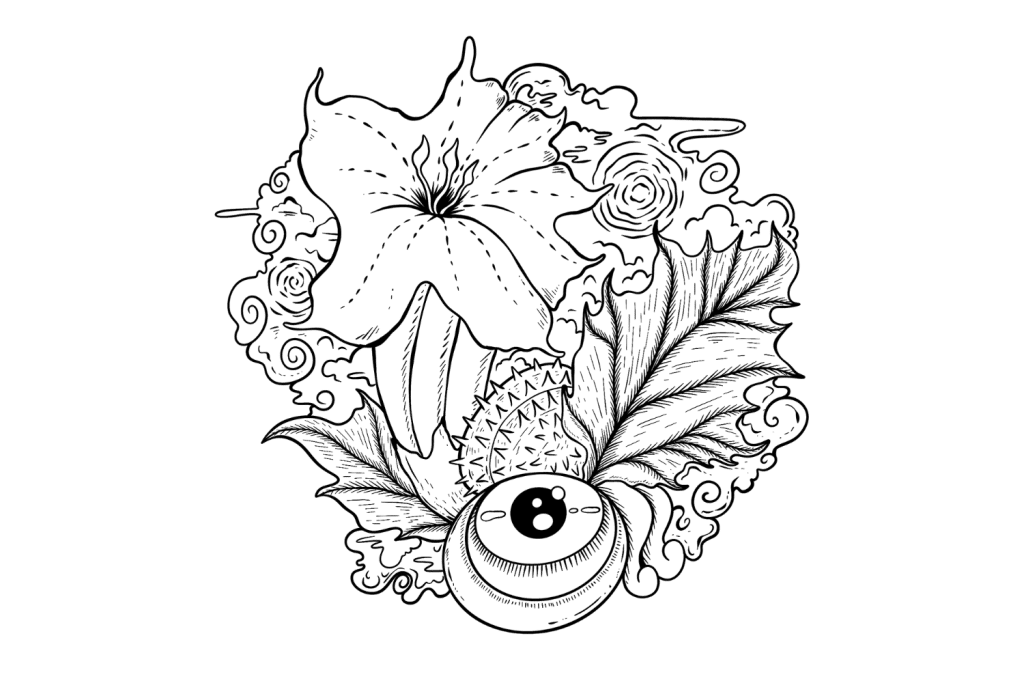
Other common names for this plant include Jimsonweed, Thornapple, Devil’s Flower, Hells Bells, and Moonflower.
List of Datura Species:
- Datura arborea
- Datura candida
- Datura ceratocaula
- Datura discolor
- Datura ferox
- Datura inoxia
- Datura metel
- Datura quercifolia
- Datura reburra
- Datura stramonium
- Datura suaveolens
- Datura wrightii
Yes, extremely — it’s quite possibly one of the most psychoactive species on earth. But most people who actually use this plant for its psychoactive effects are those that don’t know anything about it.
People who have tried it rarely do it a second time.
The best summary of the datura experience is this:
“Datura is a 72-hour psychedelic nightmare from which you may never recover.”
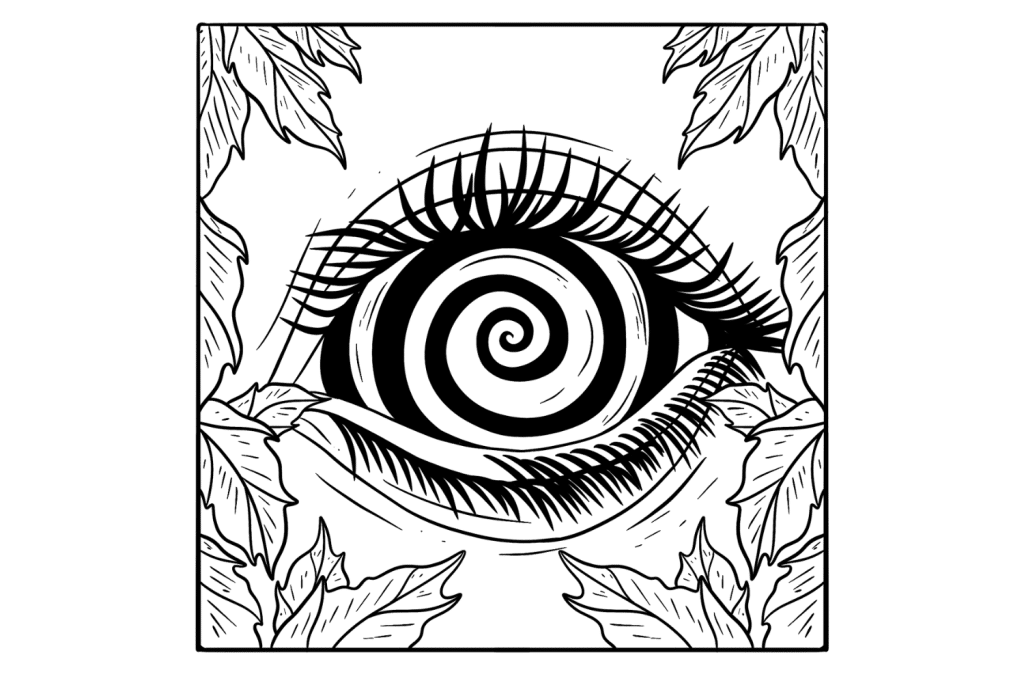
This plant is considered a deliriant — which means it induces a state of delirium. It alters your perception of reality — making you see things that aren’t really there. These hallucinations are completely indistinguishable from reality. Some of what you see is real, some of it is not — and there’s no way of knowing which is which.
Other common deliriants include:
- Amanita muscaria
The active ingredients are a group of compounds that act as anticholinergics (more on what this means later). These chemicals are strong enough to cause permanent damage if taken in high enough doses.
While there are always some exceptions, most people who submit their experience with datura have a strong negative sentiment. The hallucinations it produces are dark, violent, and entirely detached from reality.
Despite how horrifying this plant actually is, it’s completely legal in most parts of the world and is a fairly common garden variety — well-loved for its attractive flowers. There hasn’t been much pushback against the use of datura because it’s not a substance people tend to recommend or ever take for a second time.
What Does Datura Feel Like?
Datura’s effects can be broken into two categories — its effects on the body and its effects on the mind. Neither are very desirable, and both can result in long-term trauma and damage.
Datura can damage the mind (causes psychosis) and the body due to dehydration, heat exhaustion, organ failure, or accidental injury.
The first effects you feel are physical. Your mouth and throat feel dry, and you feel hot. Pupils dilate so much it becomes difficult to focus on anything. Vision becomes blurry or hazy.
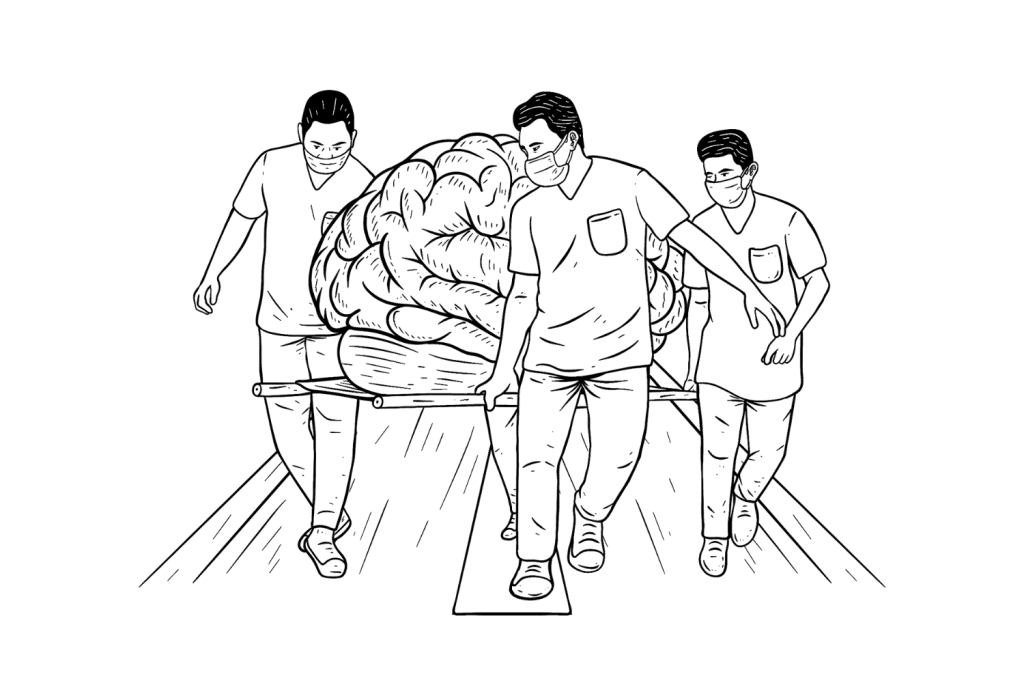
Shortly after this, the psychological effects start to kick in. Strange and chaotic visions appear and don’t go away for several hours or days.
Even when the experience is over, people often feel persistent “weirdness” or lapses in memory.
The physical effects of datura are predictable and follow the same path as all other anticholinergics (such as belladonna or mandrake root ).
There’s even a little rhyme that describes the effects:
Blind as a bat (blurry vision) Dry as a bone (dehydrated) Full as a flask (can’t urinate) Hot as hell (feverish) Red as a beet (flushing) Mad as a hatter (delirium) Tacky as a leisure suit (tachycardia)

All of these effects are the direct result of the anticholinergic action of compounds in datura, including atropine, scopolamine, and hyoscine. By blocking acetylcholine, datura effectively inhibits the parasympathetic nervous system (PNS) — which is responsible for the function of rest and digest.
The PNS is responsible for digestion, immune function, temperature regulation, pupil constriction, relaxation, bladder control, and more. Blocking this system causes side effects that are the result of a total lack of PNS activity.
The key physical side effects include:
- Dehydration
- Hyperthermia
- Sedation & fatigue
- Intense hallucinations
- Inability to urinate
- Heart arrhythmias
- Dilated pupils
- Blurry vision
- Muscle stiffness
Datura is poisonous and can be lethal. The psychoactive dose isn’t far-off from the lethal dose. It’s not uncommon for people to overdose and die from datura.
Datura is very reliable for inducing hallucinations. These hallucinations are different from that of LSD , magic mushrooms , DMT , or even salvia . These substances change the way we perceive visual and auditory sensory information.
Datura seems to invent entirely new information, which is seamlessly combined with reality.
More technically, datura is considered a deliriant — which means the type of hallucinations they produce fall into the category of delirium.
Delirium is defined as a reduced awareness and ability to interpret the environment.
Hallucinations are so strong and so realistic — it’s impossible for those affected to be able to tell the difference between what they’re imagining and what’s happening in real life.
The most unfortunate part about this is that with datura, these alternate realities are almost always nightmarish and disturbing.
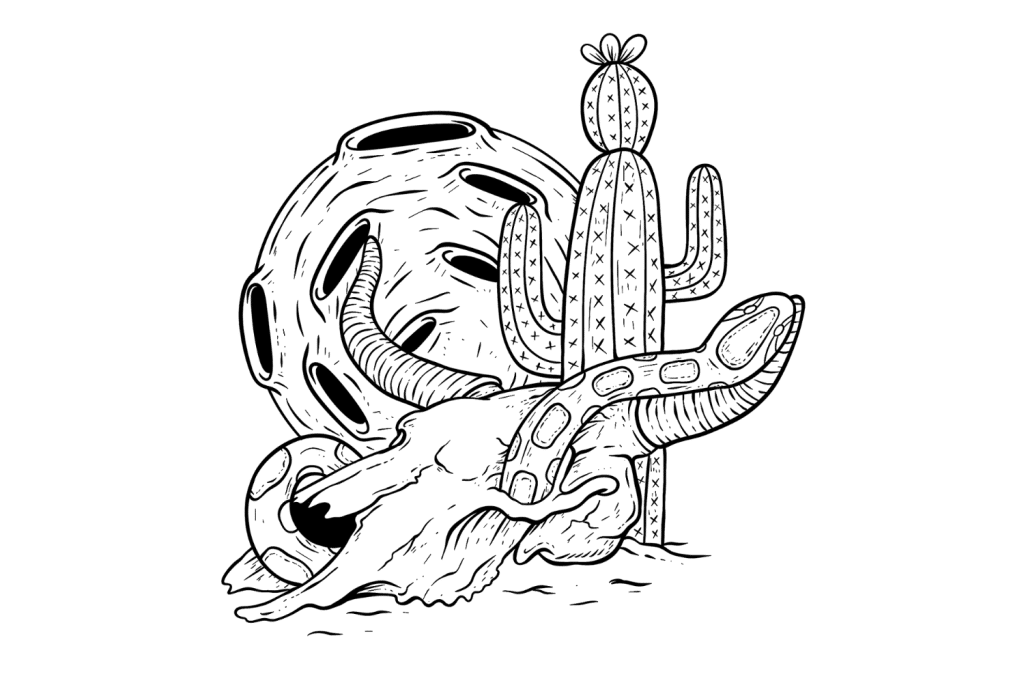
For some context, here are some simplified examples of the types of hallucinations people have reported in the /r/datura forum on Reddit:
- /u/remarkable-tea3717 — I was in bed when I woke up in another dimension; I saw thousands upon thousands of dead bodies stacked up on one and another going through into the sky. Screaming lots of screaming bloody screams, and blood was stained onto the walls of brownness. And that’s really all I recall until I woke up with a horrible headache and the doctors telling me I’ll be okay.
- /u/someones-alt123 — I remember watching tv. I don’t remember the show, but there are bugs all over the walls. The man in the corner won’t stop staring at me. I’m hearing whispers from the kitchen. I try to sleep. I can’t relax over the breathing coming from the foot of my bed. I can feel its breath. Itching. Lots of itching. Can’t sleep. I’m dying. I’ve died multiple times already and I’m going to die again. I hope this is the last time. I walk outside. It’s daytime. There’s a girl talking to me. She looks dead. She tells me I’m next. I snap out of it. Back in my room. She’s standing in front of me. Huge bugs everywhere. None of this seems to bother me anymore. I have multiple more strange occurrences like this but I don’t remember them.
- /u/adamole123 — I find the memory effects that happens when you are on this plant seem to misplace me in the reality that everyone else is living and getting along in. It is not a nice feeling. I feel totally separate from people and the memory flashbacks are overwhelming, not letting me get on with present-day life. It’s crazy. If you want advice beware of how many times you actually use [datura] and remember that the unwanted side effects are always there. Like memory time travel.
- Terence McKenna Datura Trip Report
The effects of datura aren’t always disturbing. Some people report milder experiences like seeing and talking to people they knew that weren’t there flying cars or other strange, but not necessarily sinister , hallucinations. Some people don’t know they’re hallucinating until after the experience when they realize some of the events that took place were completely imagined.
With that said, the prevalence of a dark and disturbing experience is far more common than mild experiences.
Some common experiences reported with datura:
- Smoking phantom cigarettes or eating phantom food
- Seeing people or entities they know
- Blood oozing out of cracks or creases
- Insects or parasites
- Feeling like your brain or other organs are going to fall out of your body
Sometimes, when people come back from a datura trip, they remain unsure about what’s real and what isn’t. They question existence and often suffer damages from what’s known as “ontological shock.” These effects can lead to clinical depression, anxiety, or post-traumatic stress disorder (PTSD).
The video below was reported to be “found footage” about someone who took an unknown substance and has had lasting effects. From the way this user describes how he’s feeling, it’s likely the substance he took was either mandrake or datura.
The origin of this video is unknown, and it isn’t clear what the outcome was for this individual.
It’s not uncommon for people who have used datura to exhibit lasting hallucinations. This can happen with other psychedelics as well through a condition known as hallucinogen-persisting perception disorder (HPPD) — which can last anywhere from a few weeks to several years.
Datura is a common weed throughout the Americas, Europe, and Asia. As such, there’s a fair bit of traditional use for datura.
A recent research article explored the historical use of datura , which found the most common traditional applications were for treating pain (topical application) and asthma (very small doses).
In Europe, the herb was used for religious and visionary purposes, as well as in witchcraft .
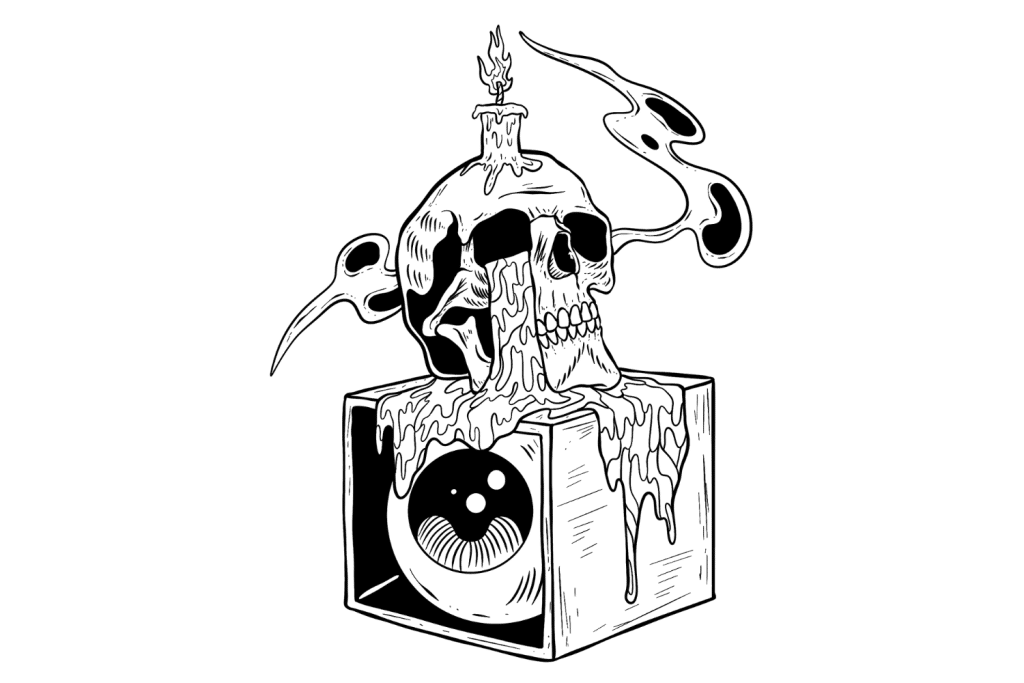
Culpepper, the famous European herbalist, wrote this about datura:
“The juice pressed out of the fresh plant, and inspissated to an extract, has been taken in doses from half a grain to a dram, in twenty-four hours, in epileptic disorders, convulsions, and madness. An ointment made of the leaves is cooling and repelling.”
In India, it’s believed the deity Shiva would frequently smoke cannabis and datura. Datura is still routinely placed at the base of Shiva statues and in temples as an offering.
In parts of Northern Mexico Southern United States, Datura was used by local shamans and medicine men for its ability to cross the barrier between life and death. It was respected as a powerful visionary plant teacher in a similar capacity to tobacco (a close relative).
Related Reading: Shamanism: Harnessing The Power of Consciousness .
Datura is very long-lasting. Most users report the experience lasts around 12 to 24 hours — but it’s been known to last for up to three days in some cases as well.
People who overdose on datura can experience lasting hallucinations for up to 9 months.
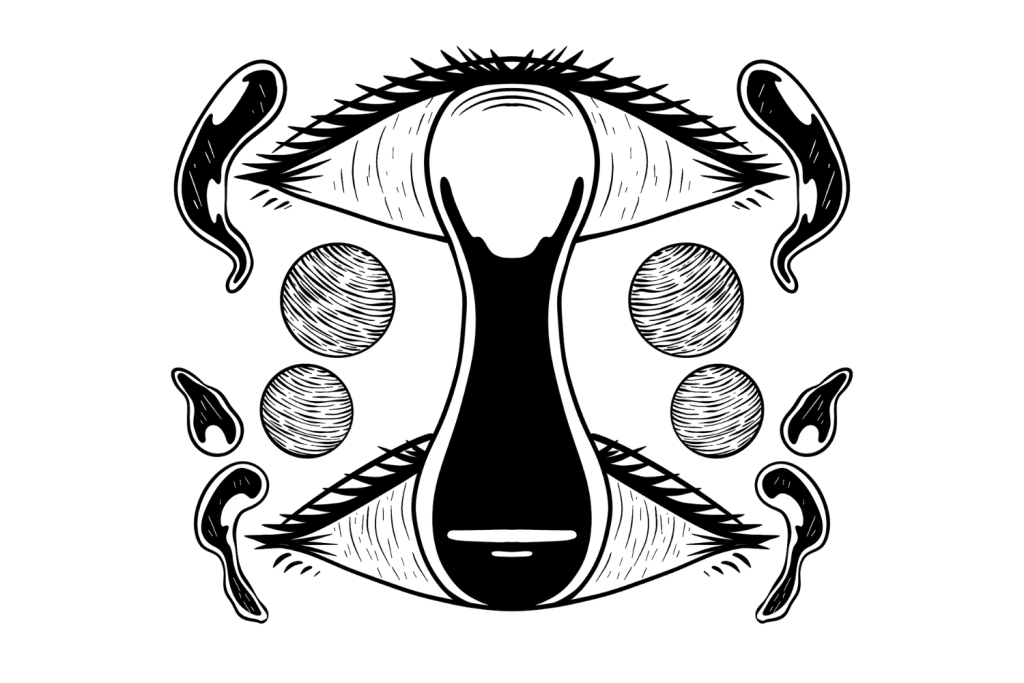
Datura is entirely legal in most parts of the world, including Canada , The United States , and most of Europe — except for the United Kingdom .
Datura is also banned as a Schedule I poison in Australia .
Related : List of all legal psychedelics .
The active ingredients in datura are a group of compounds called tropane alkaloids . The main three are scopolamine, atropine, and hyoscine — all three of which are collectively responsible for the psychoactive effects of the plant.
Tropane alkaloids bind and block the muscarinic receptors M1 and M2. This effect inhibits a neurotransmitter called acetylcholine, which causes the characteristic effects — including delirium, sedation, muscle weakness, pain, malaise, and hallucinations.
How blocking acetylcholine causes all of these effects are not well understood — but other compounds that block acetylcholine have been known to do the same. Sarin gas, organophosphates, and other herbs like the borrachero tree and mandrake all cause similar physical and psychological side effects.
Sometimes, the closely-related plant, the borrachero tree, which grows throughout tropical regions of South America, is added to ayahuasca — where it’s known as toé.
This isn’t a new practice; it’s something that’s been done in certain Amazonian tribes for centuries to add to the visionary experience.
However, because of the potential risk from this group of plants, it’s recommended you avoid participating in ceremonies that use toé in the brew.
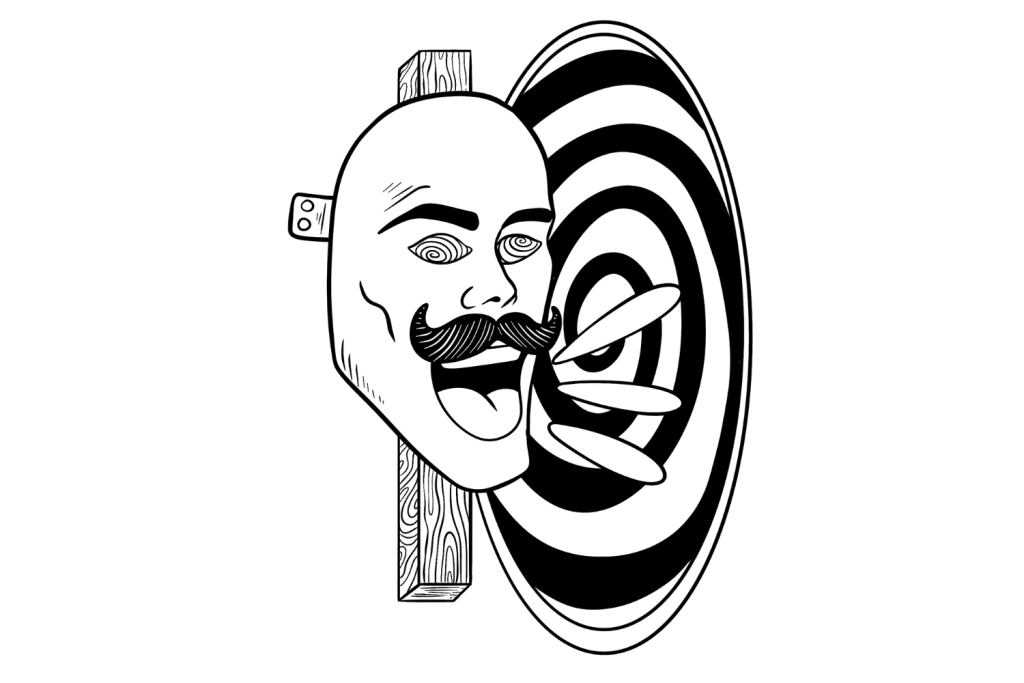
Unfortunately, it can be hard to know what went into the ayahuasca you’re using, and there are a lot of unethical shamans or pseudo-shamans trying to cash in on the drug tourism surrounding ayahuasca use in the rainforest. Some people are mixing brews that contain mostly datura or other hallucinogenic plants — rather than the two herbs traditionally used to make ayahuasca.
The popularity of ayahuasca these days can make it difficult and more expensive to get ahold of the raw ingredients to make the preparation — so to save money and guarantee a “profound experience,” datura is sometimes used instead.
Datura FAQs
The world of datura runs deep, here are some of our most commonly-asked questions — answered.
Yes, datura can be smoked and has been for hundreds, if not thousands, of years.
Most cultures smoked the leaves of the plant — which produce much more subtle effects and appear far less dangerous than the seeds (needs more research).
Smoking the seeds can be very dangerous as the difference between an active psychoactive dose and a lethal dose are relatively close together.
A microdose , by definition, is a dose that’s too low to notice the direct influence of a substance. This means if you’ve done it correctly, you shouldn’t feel much of anything.
However, just because there are no psychoactive effects, doesn’t mean microdosing doesn’t do anything.
Microdosing datura often leads to what we might call “ strange occurrences .” This might involve phenomena like deja vu, altered perception of time, or unusual coincidences.
The physical effects that may occur from the anticholinergic action may include increased thirst, increased urination, feeling hotter than usual, some blurriness on the periphery of your vision, and feelings of malaise or anxiousness.
Microdosing can also cause extremely vivid dreams, lasting several nights after taking it. These dreams are often uncomfortable and undesirable.
Most people who have tried microdosing datura for dreams don’t recommend it. Check out our list of dream herbs to try instead.
Datura is a powerful psychedelic plant. Just a few seeds are enough to give users the strongest hallucinogenic experience of their life.
But before you psychonauts seek out this plant, you need to be well aware of the risks.
First of all, datura is very poisonous. Many people have died from the physical side effects of this plant, and it doesn’t take much to go from a psychedelic dose to a lethal dose.
Secondly, datura can be extremely damaging from a psychological perspective. There’s always a chance the datura experience can be enjoyable or enlightening (as noted in some trip reports online) — but chances are very slim. More likely, datura will take you through a complete psychedelic hell, often lasting two or three days. When it finally spits you out the other side, you’re left questioning what’s real and what isn’t and may even experience lasting “glitches” in the framework of reality.
Datura is no joke. There’s no evidence it provides any medicinal value (aside from being a topical analgesic), and is in a completely separate class from most of the other psychedelics we’ve covered. Instead of treating anxiety, depression, or PTSD, datura causes it.
The hallucinations experienced on this herb are so realistic most people don’t actually know they’re hallucinating until after the experience.
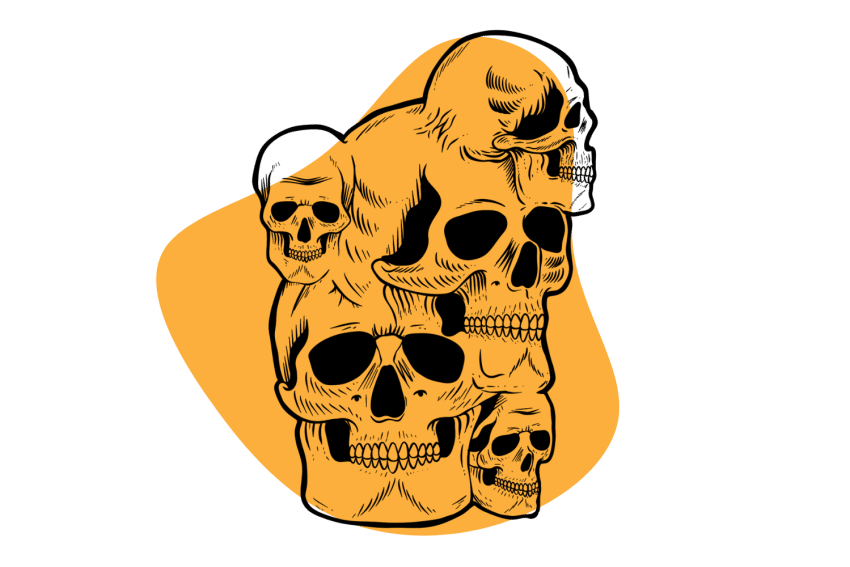
What Are N-Bombs? (25-I-NBOMe) — Avoid This Psychedelic
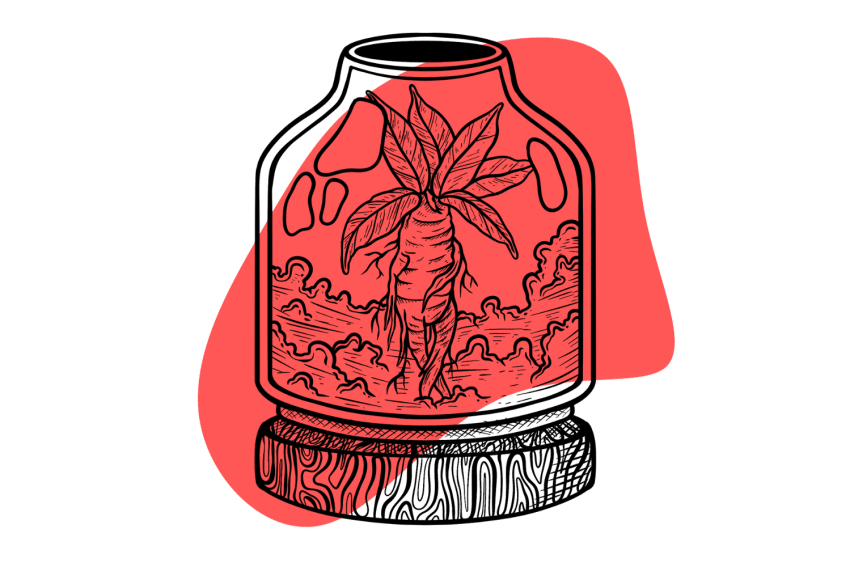
Mandrake Root: “Murderous & Psychotic Delirium”
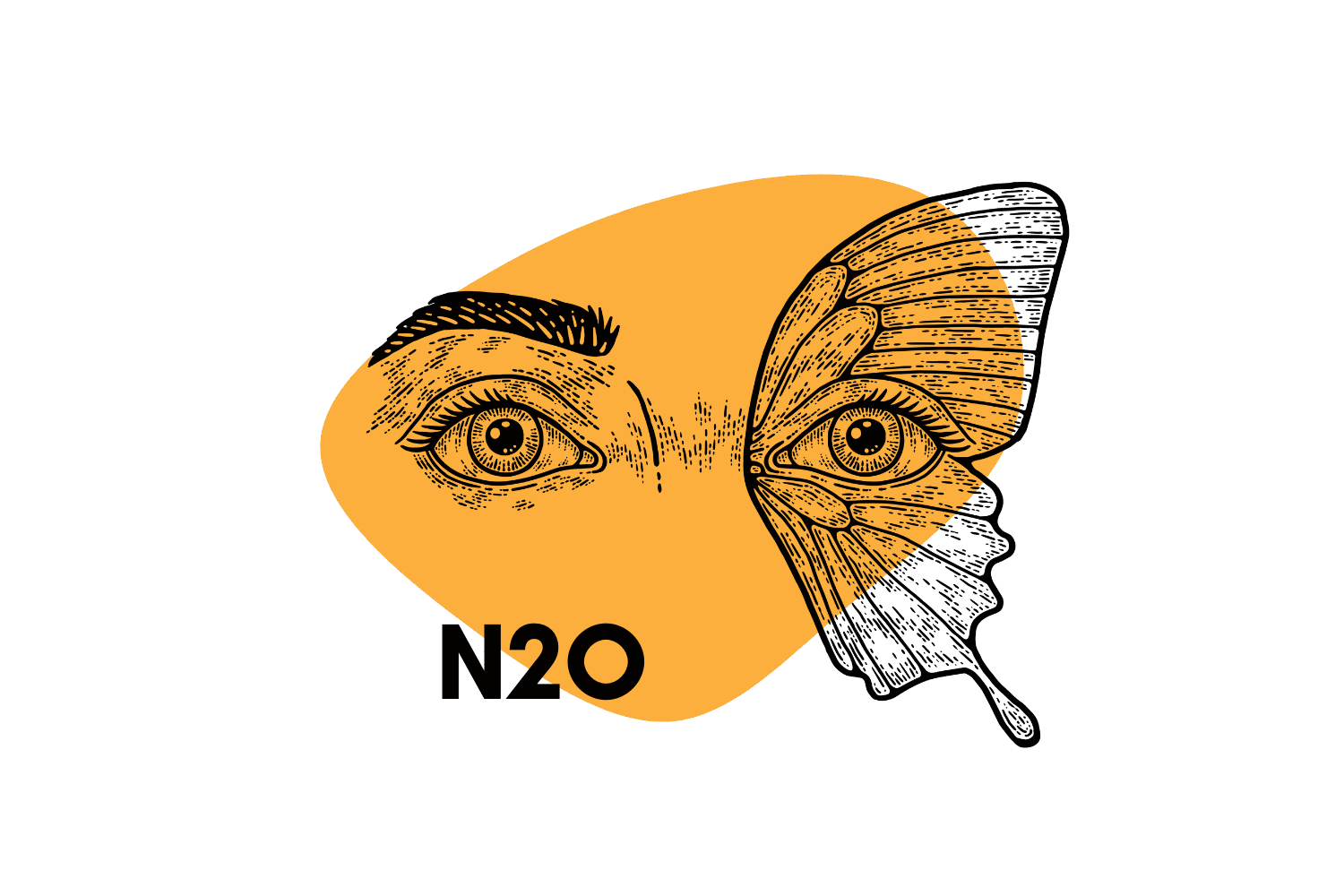
N2O: Nitrous Oxide
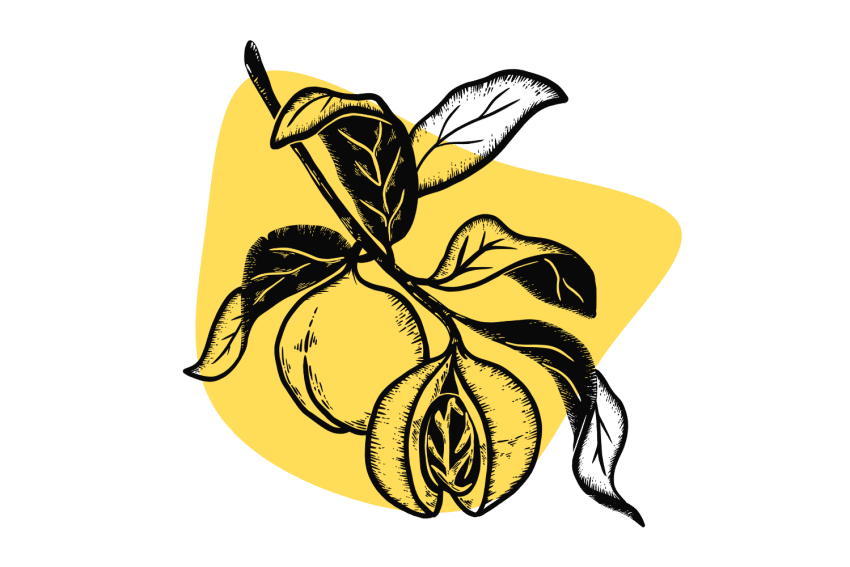
Nutmeg: The Psychedelic Spice With A Dark Side
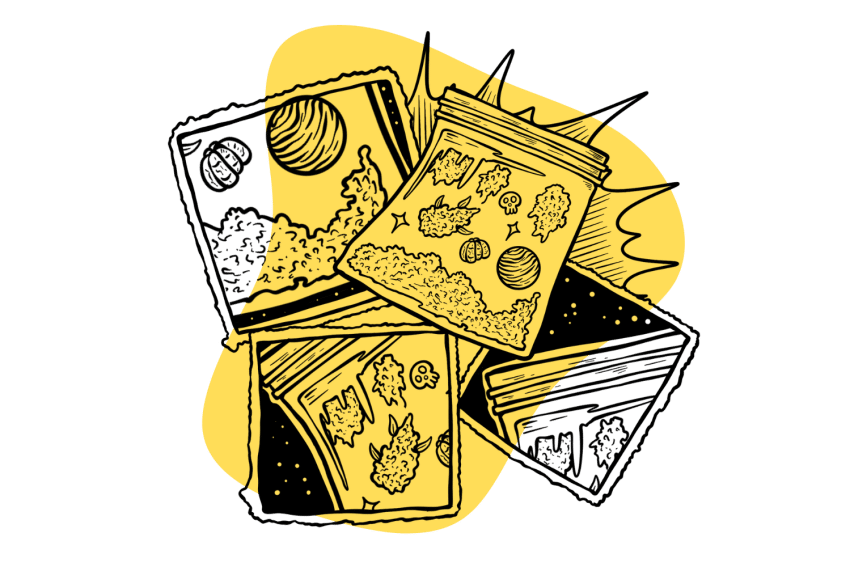
Tusi (Pink cocaine)
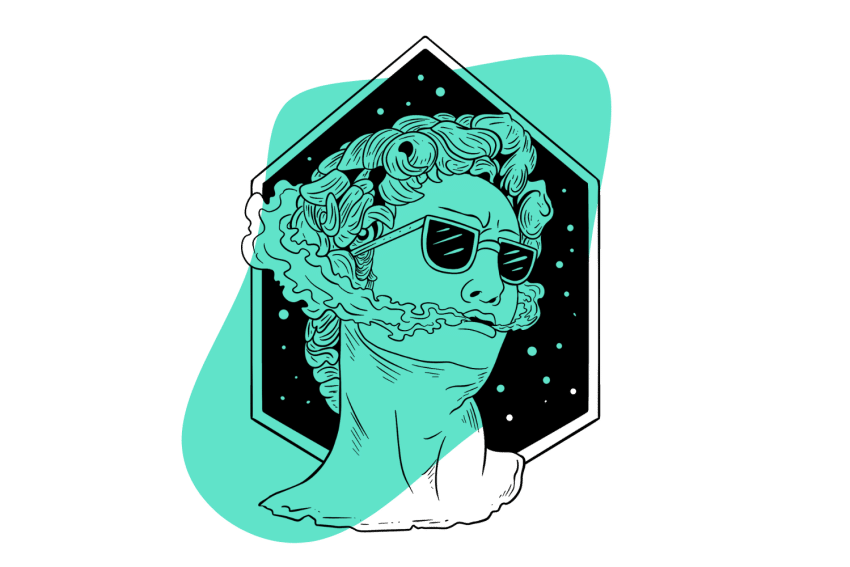
[Xe] | Tripping On Xenon
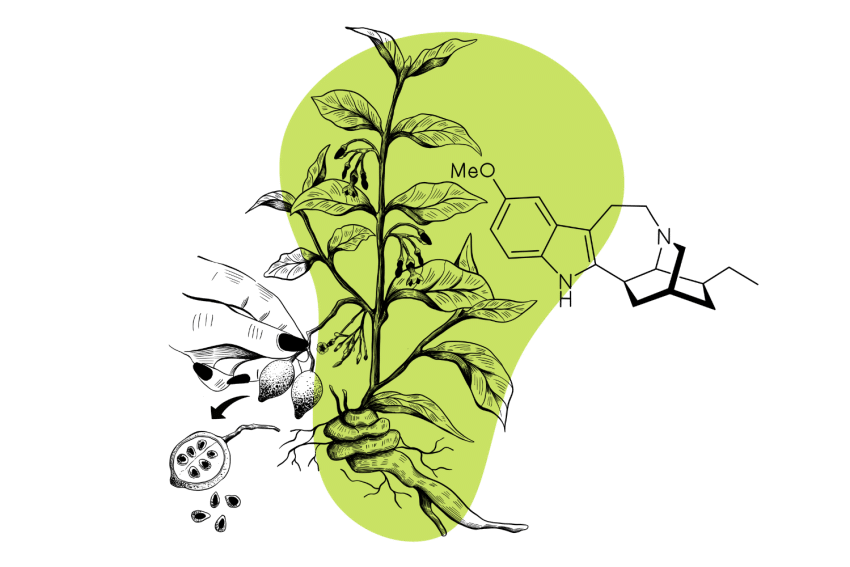
Ibogaine: A Powerful Anti-Addictive Psychedelic
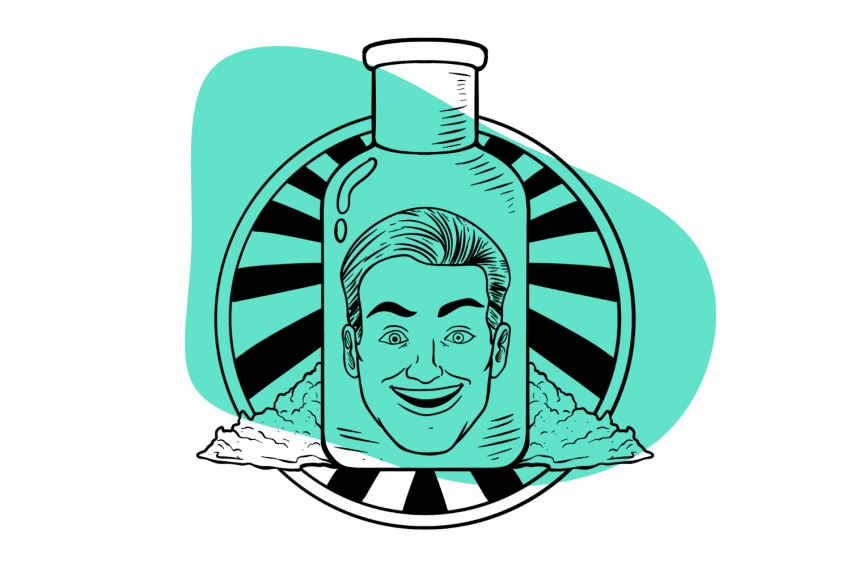

GHB: A Definitive Guide and Safety Information
Subscribe for more psychedelics 🍄🌵.
This will close in 20 seconds
- Top things to do in london in 3 days
- 12 things to do in Amsterdam in 2 days
- Top 12 things to do in Berlin in 3 Days
- Top 10 things to do in Rome in 2 days. Backpacker’s Itinerary
- Top 12 things to do in Madrid in 3 days
- Top Things to Do in Paris. The Ultimate 3-Day Guide
- Interrailing Tips
- Solo Travel Guides
- Best Travel Apps
- Hostel Tips
- Budget Travel Tips
- Best Hostels Amsterdam
- Best Hostels Barcelona
- Best Hostels Belfast
- Best Hostels Berlin
- Best Hostels Dublin
- Best Hostels Edinburgh
- Best Hostels Lisbon
- Best Hostels London
- Best Hostels Malta
- Best Hostels Milan
- Best Hostels Naples
- Best Hostels Nice
- Best Hostels Paris
- Best Hostels Prague
- Best Hostels Seville
- Best Hostels Split
- Best Hostels Valencia
- Best Hostels Auckland
- Best Hostels Brisbane
- Best Hostels Cairns
- Best Hostels Christchurch
- Best Hostels Goa
- Best Hostels Hanoi
- Best Hostels Hong Kong
- Best Hostels Koh Phi Phi
- Best Hostels Koh Samui
- Best Hostels Marrakech
- Best Hostels Perth
- Best Hostels Singapore
- Best Hostels Cartagena
- Best Hostels Chicago
- Best Hostels Havana
- Best Hostels LA
- Best Hostels Medellin
- Best Hostels Mexico City
- Best Hostels New York
- Best Hostels Rio de Janeiro
- Best Hostels San Diego
- Best Hostels San Francisco
- Best Hostels Toronto
- Best Hostels Tulum
- Make a Booking
The 10 inevitable emotions you experience on every trip
Hostelworld Blog | Posted on May 6, 2014 |
Brenna Holeman blogs at This Battered Suitcase
No matter what kind of trip you take, you often go through a myriad of emotions before, during and after your adventure.
Whether it’s a week-long beach holiday or a round-the-world trip, here are a few feelings you may experience. I’ve certainly experienced all of them; no matter how many times I travel, I inevitably go through these ten emotions.
1. Excitement
That little seed of wanderlust grew and grew until you decided to take the plunge and finally buy the airplane ticket. There’s no turning back now; your dates are set, and you eagerly await the arrival of the big day.

Sshh!... This is a secret
Sign up to discover the "Next 🔥 Backpacker Destination" this 2024, discount travel deals and future secret travel guides.
Just so you know, we will be able to see if you open our emails to help us monitor the success of our marketing campaigns. You will find further details in our data protection notice.
2. Anticipation
Anticipation can be both a good thing and a bad thing. While you often find yourself daydreaming about all the great things that will happen to you while you’re away, you sometimes begin to feel the onset of nerves, too. Lying in bed at night, unable to sleep, you start to list all the things you need to do before your trip: find a good pair of hiking boots, get all your immunisations, exchange money, pack, and so much more.

And what about everything you’re leaving at home: work, family, friends, your flat? Will everything be okay? No matter how excited I am, I spend the night before every big trip fretting about all the little things I wouldn’t be able to remedy by then anyway. I don’t think I slept a wink in the week before I left on a year’s trip around Central and South America.
3. Amazement
You left all of those worries behind, because you just arrived at your destination. Maybe it’s a bustling city, maybe it’s a tranquil lake, maybe you’re about to get lost in the mountains for a few months.

Wherever you are, you are probably blown away by how incredible it is, whether it’s incredibly beautiful or incredibly different or incredibly overwhelming. You are taken aback by everything you see in front of you, and you can’t believe you’re finally here. I firmly believe that if I ever lose this sense of amazement, that if I ever become so jaded that a new place doesn’t take my breath away, that I should consider hanging up my backpack for good.
You chose this place for a reason. Something about it drew you here: the culture, the food, the architecture, the nature, the people. Maybe you’re seeing it for the first time, maybe for the tenth time; either way, it brings you immense happiness to be here.

You’re full of joy for having the opportunity to see this part of the world. You worked hard to be here, and you’re living each day to the fullest. For me, joy comes in speaking to new people and making new friends. If that’s done on a beautiful beach with a plate of fresh fruit in front of me, all the better.
5. Belonging
Maybe you’ve been here for a few days, maybe you’ve already stayed for a few months. You quickly found your groove in this place, though, discovered your favourite café, the best art museum, or the most serene spot to sit and think.

The guy at the local shop nods and waves when you pass by. Maybe you could live here. Maybe this sense of belonging could last forever. I always know I’ve reached this point when the vendors at the local market know what I’m going to order before I’ve even ordered it.
6. Frustration
Even the calmest traveller sometimes reaches her boiling point. Everything has been going smoothly, but one bad day can really play with your mind. You got mugged, or you got lost, or nobody would help you at the train station. It’s easy to get frustrated when you’re tired, hungry, sick, or lonely.

Sometimes, without meaning to, you take out your frustration on the place you’re in, whether it deserves it or not. I was once ready to blame Bangkok for my terrible mood, but it wasn’t the city at all; I had a lung infection, my room’s fan didn’t work, and my credit card had been frozen. I’ve since been back many times (with healthy lungs, air conditioning, and a working credit card) and I love it.
7. Acceptance
That bad day is behind you, and you fall in love again. Maybe it was a visit to a new restaurant that did it, or a smile from a stranger. Not every trip will go perfectly, of course, and you accept that whatever happened was probably not the fault of the country itself, but the acceptance that life, no matter where on the planet you’re living it, has its ups and downs.

I’ve had great days all of the world. I’ve also had terrible days all over the world. I’m human.
It seems like only yesterday that you were worried about starting your trip, and now you’re absolutely dreading going home. Whether you only had a few days or have been gone for years, it feels that your time abroad went far too quickly.

As nice as it will be to see your friends and family and sleep in your own bed, you just don’t want to leave. Without fail, at the end of every trip, I’ve always thought to myself, “But I just got here.”
You’re home now, and have unpacked. The souvenirs you bought on your trip are already sitting on your shelves, and you look at them every chance you get. Maybe you post an album on Facebook of the highlights of your time away. And even though you had an amazing time, you can’t help but feel the post-holiday blues.

All of that build-up led to one of the best times of your life, and now it’s over. “Don’t cry because it’s over, smile because it happened,” they say, but right now all you’d rather do is be back in that museum with the groundbreaking art, or laughing with your travel friends over a few beers, or feeling your adrenaline soar as you climb the final steps of a hike. When I returned home after nearly two solid years of backpacking, it took me months to get over my post-travelling blues. Sometimes I wonder if I’ll ever get over them.
10. Appreciation
Your initial sadness of being at home again has waned, and you are starting to think about your trip with a clearer mind. Obviously, you’d love to go back, but now you can fully appreciate how fortunate you are to have experienced that time abroad.

You share memories with your friends and laugh at all the amazing stories you accumulated. You look at your photos and get the biggest grin on your face. You reflect on how much the trip taught you and even how much it shaped who you are today. And then, you start to get another little seed of wanderlust, and you do it all again. Have I told you about my trip to Albania this summer yet?
Leave a Reply Cancel reply
You must be logged in to post a comment.
What To Expect On A Psilocybin Mushroom Trip

Elena Schmidt holds a journalism degree and is a freelance writer and content strategist in Austin, Texas. She has found her passion in subjects that drive self-actualization, including plant medicine, yoga, and meditation.

Disclaimer: Psilocybin mushrooms are potentially illegal substances, and we do not encourage or condone the use of this substance where it is against the law. However, we accept that illegal drug use occurs, and believe that offering responsible harm reduction information is imperative to keeping people safe. For that reason, this guide is designed to ensure the safety of those who decide to use the substance. We do not encourage using this drug outside of a legal or traditional context. For this reason, if you’re interested in legally consuming psilocybin, you may join our trusted partner Synthesis for legal psilocybin retreats in Amsterdam .
This article has been medically reviewed by Katrina Oliveros, MSN-ED, BSN
Maria Katrina is a trauma-informed Wellness Educator and Psychedelic Harm Reduction Consultant. Beyond nursing, she supports health & wellness teams through medical aid, psychedelic harm reduction, and integration services.
Describing the nature and content of a psilocybin mushroom (or any psychedelic) experience can be notoriously challenging. Not only are they extremely subjective, they’re also highly personal. As a result, you’re often left with overall feelings and sets of specific observations , more than you are a clear sense of exactly what happened.
Psychedelic researcher and microdosing pioneer James Fadiman refers to a quote by William James, an American psychologist, to qualify this phenomenon: “Our normal waking consciousness, rational consciousness as we call it, is but one special type of consciousness. Whilst all about it, parted from it by the flimsiest of screens, there lie potential forms of consciousness entirely different.”
This guide will attempt to familiarize you with this as it pertains to the nature of a psilocybin mushroom trip.
Read our guide to growing your own mushrooms.
There’s a reason psychedelic trips are referred to as “journeys” or “trips.” They’re expansive. And for this reason, it’s important to be ready for anything. Give yourself permission to go with the flow — to surrender to an experience that could include confusion, anxiety, discomfort, hysterical laughing fits, awe, and any number of profound insights.
The truth is, no amount of mental preparation can compare to the actual experience. It’s one thing to convince yourself you’re ready for anything before tripping, but it’s another thing entirely to be in it.
From a deeply peaceful sense of oneness with something much bigger than yourself, to an inexplicable, yet certain feeling that the setting sun will bring sinister spirits into the world, these are all potential components of a psychedelic journey. And, they’re all beautiful. Seriously. There is intense profundity in this particular sort of contrast.
Recognizing, and accepting, that anything can happen over the course of a psilocybin mushroom trip will make you feel more comfortable as you begin to feel the effects of the compound. An open, calm mindset will help you remember — if things become uncomfortable — that the whole experience is temporary, typically between four and six hours. Your sense of helplessness will subside.
By acknowledging the transience of your trip, you’ll be more prepared to handle the darkness, and the light.
Safely Dosing
Accurately dosing psilocybin mushrooms is key to having an safe and effective mushroom experience.
Watch the video below to explore the different dosage levels for the safe use of psilocybin mushrooms, including a microdose, mini-dose, museum dose, moderate dose, and macrodose.
People and Places
In the words of James Fadiman , “much about our reactions to any stimulus depends on the actual context and the way we perceive it.” Another way to put this, set and setting matter.
Psychonautic pioneer and co-founder and arbiter of the Harvard Psilocybin Project , Timothy Leary, defined set as the mental state a person brings to a psychedelic experience. That is, thoughts, feelings, mood, and desires. Setting he described as the physical and social environment in which a psychedelic experience takes place.
People and places can have a large impact on your journey. When preparing for a psychedelic mushroom trip, it’s important to treat yourself, and your environment with care. Set yourself up so that if you do wander into a challenging state of consciousness, you’ll be surrounded by people and things (trees, blankets, whatever you think you may need) that are comforting.
One way to do this is to go out into nature. Find a quiet, open, natural space that is secluded from strangers and authority or security figures. Then, surround yourself with good people, or a good person. Someone you know and trust. Tripping alone for the first time can be very challenging, and potentially frightening. The safest way to approach this is to be with someone who has had experience tripping before, and who chooses to stay sober to support those who are tripping if need be.
You can learn more about setting up a safe and comfortable environment for your trip here .
Paul Austin, founder of Third Wave recalls the value of this sort of support:
Once, I was tripping in the backseat of a car with my friends. Some trivial thought freaked me out and sent me into a deep existential crisis. I don’t remember what, but I was stuck in a spiral of worry, and I couldn’t get myself out. I stopped my giggling and babbling and said something about not knowing anymore. Then I grew quiet and withdrawn. My good friend in the front seat turned around to me and casually said, “Hey, it’s fine.You’re here to have fun.” That simple sentence calmed me down, and from there my whole trip turned around. I thought I was facing some impossible struggle, but my friend straightened me out with just a few words.
Find a comforting place, and be with people you trust and feel comfortable around.
After your preparations, all you have to do is ingest the mushrooms. This can be done by eating them directly, by brewing them in a tea , or by baking them into chocolate or some kind of pastry. Everybody responds to the taste differently; they’re very chewy, and quite earthy.
Depending on the amount of food in your stomach and method of consumption, you may start to feel nauseated around 30 minutes to an hour after ingestion. Your hands may get clammy. This is largely due to your body’s response to the chemicals in the mushrooms; to ingesting a powerful and novel substance.
A strange, and common phenomenon as the mushrooms begin to take hold, is an anxiety about whether or not the trip is occurring. People often make comments about not quite feeling it yet, about “kind of” noticing some effects, but still downplaying them.
This can lead you astray. As mentioned earlier, relaxation and surrender are important approaches to any sort of psychedelic experience, and micromanaging your psilocybin trip won’t help you get there.
Your best bet is to eat the mushrooms, sit back, and allow them to do their work.
After the queasiness and discomfort subsides, you will begin to notice the onset of effects. Since changes in thought are more subtle and difficult to observe, you’ll probably realize you’re tripping by just looking around.
Colors will be more vibrant, they may even seem to glow. You’ll notice surfaces glittering and an increased richness in texture of (all) things. You may find yourself smiling uncontrollably, or feeling especially giggly.
And then, suddenly… you will be tripping.
Away we go!
Sometimes, a mushroom trip will feel like a whirlwind. One in which you’ll just have to hold on tight and go along for the ride. Other times, you will have a lot more control. You’ll feel like you can navigate through a totally new mindset.
If you have a trip like this, it’s a good time to explore yourself or turn inwards. Consider examining your personal problems, relationships, goals, ideas, beliefs, and fears.
Your sense of time and space perception will be warped. The d istortion manifests itself in beautiful ways — like staring at a flower for twenty minutes without even noticing how much time has elapsed.
However, if you’re experiencing distress, thirty seconds of thought may feel like a deep, anxious struggle that goes on for a half hour. Take a deep breath. Exercise your power of thought here. Give your attention to something else. There’s no point in keeping yourself in a state of discomfort.
Remember your reasons for embarking on your trip.
It’s nobody’s place but your own to say what you should or should not do during a trip. You are about to experience a complete change in your thinking and perception of the world.
Everything else is up to you.
The Comedown
Honestly, calling it a “comedown” is a bit misleading. The tail end of a psilocybin trip is often gentle and comforting, like dipping into a pool of warm water.
Contrary to the deep regret and discomfort that usually follows a long night of hard, substance-fueled partying, the comedown of a psilocybin mushroom trip tends to be mellow, introspective, and life-affirming.
In Paul’s words:
To me, going on a psilocybin mushroom trip feels like losing my mind. I forget a lot of things that I usually take for granted— simple things, basic concepts. Once, I forgot the concept of gender during a trip. Another time I forgot the concept of purchasing. I once forgot so much that I figured the only thing I knew how to do was give a smile. So, for the next hour or so, I just smiled at everyone until they returned one.
Coming back from a place so far removed from “normal” thinking can be therapeutic. For one, there’s the relief and appreciation of getting all your thoughts back. You start to find the right words for things; you start to recognize more complicated concepts. It’s very exciting.
On top of that, you may begin to notice how imaginary our lives are. During the trip, you’ll be put on a plane of raw existence. You’ll be stripped of that little voice in the back of your head, the one that’s endlessly analyzing and ascribing meaning to everything.
Then, when you come back, you’re likely to notice that that voice is not real. You’ll begin to see how those judgments and fears are artificial and entirely contrived, which can be enormously freeing.
Psilocybin mushrooms will help you feel, think, and perceive new things .
Whatever insights you may have encountered on your trip, keep them in mind over the next few days, write them down.
The mushrooms themselves won’t automatically change your life, but if you treat the trip as an educative experience, if you don’t disregard it as just silly fun, you will find that your life will be positively affected .
The trip may become a catalyst for a host of positive changes that were simply waiting in the wings .
Note: As with most aspects of pharmacology, how you respond to psilocybin as an individual depends on your genetics, neurobiology, age, weight, and numerous other factors. Halugen’s psychedelic pre-screening platform offers a comprehensive solution to identify inter-individual variations to psychedelic drug effects, highlight short- and long-term genetic risk profiles as well as categorize personal and familial risk. See this article on risks for more information .
Leave a comment Cancel reply
Your email address will not be published. Required fields are marked *
Save my name, email, and website in this browser for the next time I comment.
Wow I really agreed with what was said. Just wondering if anyone else has felt like walking around on a mushroom trip was similar to astral projection. It was so hard at times to get around physically, mentally it was the most amazing thing ever! My body was slightly hello like and I really had to concentrate to move it correctly. Thanks again for your experience.
I love being a hippie, now I know drugs can be a good thing in life like love drugs and even benefit you in your life. I really agree with you too and this amazing just stupendous article.
Been wanting to try shrooms for quite some time now but never knew where to get them. I have the chance to do them this upcoming weekend and reading this article was much needed. Thanks for your insight, it was extremely helpful in preparing me for the experience.
I like to mix LDS, Nushrooms, eNscaline and Balcohol all at the same time. The trip lasted for days and was unbelievable. I wennt to places I’ve never ebeen or seen. Hiighly recommened.
“I went to places I’ve never been or seen ..”.
Went there yes, but key question…Did you come back?
I say this from a perspective of someone who still sees visual disturbances 40 years down the road. It’s why I stopped taking alleged psychedelics all those years ago.
Mixing all that stuff is a big even if everything were perfectly chemically pure and as labelled. Substances perported to be one thing often are or contain other shit and taking more than one at a time seems to me to increase the chances you are taking something whose ingredients are unknown.
Not highly redommended ( by me).
That’s why it’s wise to buy a testing kit. They are very affordable and reliable. Psychedelics aren’t for everybody, but there are those of us who function just fine within society that partake in regular trips. I’ve tripped close to 100 times throughout my 37 years and the only after effects I’ve had are trails on everything. I see trails on everything and have since I was 18. Not really that much of a problem. It doesn’t interfere with my life, but this is just from my own experiences. Every one reacts differently and every trip for myself anyways has always been different. Haven’t tried psilocybin but regularly use LSD which I do test every time.
Brad Ayers, I’m a fellow reader of this article here, I’d like to speak with you if and when you have some time!
Bro are you okay
How do you figure how many grams for a 1st trip…at 325 lbs…how many grams should i take?
Also…how long does a trip last??
Where can I order? I loved this article and I live in Maryland. Can I legally have them shipped to me? I’m a first timer so how does this work?
Due to the fact that psilocybin mushrooms are still illegal in many countries, unfortunately, acquiring them is not as easy as ordering them online. We do have an article on how to grow your own mushrooms through legally-purchased spores that you might like to read here . You can also read more about the legality of psilocybin mushrooms on our page here .
We wish you best of luck on your journey! Let me know if you have any more questions and I’ll do my best to help out.
– Britt at The Third Wave
Great write-up. I plan on taking shrooms for the first time soon. What I’m hoping for is a proper “ego-death” experience. Would love for you guys to write an article on that subject.
Did you have it yet?
I once had an ego death experience and let me tell you nothing can prepare you for this….its terrifying…i mean really.dose used was 3.5g dried cubensis.if you are sensitive to drug in general i would start with a low dose.i saw my friend lying on the floor for 4 full hour with 1g dried.tripping so much could not even open his eye…anyway if you want to experience this maybe you wont like magic mushroom anymore.
Wow that pretty much sums it all up.having done this on many occassion the one thing ive realized is that each trip is just that…a Unique, terrifying, fun, and insane experience.there is no single definition to it. It is unique in its own way. Like mother earth intended.
Spot on! Awesome to read
That was pretty solid & on point in comparison to my own experience. Thanks for this. I would love to hear more research on findings.
I had my first trip yesterday and as soon as it came on I just saw the wall moving back and forth and changing colors. Later I walk into the bathroom and the wood grain on the wall is morphing in and out. Later on in the trip I walk in the living room were my mom is and she is watching tv and it is a some kind of drug commercial and it is going thro the side effect list and the sound starts looping and it kinda sounds like Russian or something it kinda freaked me out but other than that it was an amazing trip.
I did shrooms for the first time a couple weeks ago and I love, love, love this explanation. I would love to hear more!
I was on shrooms once. And I burned down a School. Don’t do drugs folks.
i think that post is false i honestly dont think that is possible or will ever happen from shrooms
If you burned a school you are just as ass, mushrooms or no mushrooms. They don’t make you do that.
Ahahhah thats a good explanation ,i did golden teachers once ,it was one of the best experience i ever had
The Pyro tendencies is locked in the dark corners of your mind where your fear comes from you don’t need mushrooms need counseling and anger management
This is a great article, everyone should read this concise and down-to-earth message about an out-of-this-world ride.
plan b messes with your hormones, unfortunately
Tiffany, I think you need to use your own brain to figure out things like that.
I recently had a very bad experience. Don’t get me wrong the trip was amazing but it was not worth the price. I had taken plan b earlier in the day and later decided to trip so I made some shroomaid only using about an 8th. I have tripped 3 times prior and had felt like I knew what I was doing. But the whole time after consumption was not very good. I think that there should a warning on here to help out woman and prevent them from combining plan b with shrooms because my body overdosed on serotonin, if my boyfriend wasn’t a CNA I could have died.
Can you go more in depth about an “inexplicable yet sure feeling that the sun setting will bring sinister spirits into the world”
Not speaking for Paul, but from personal experience when under the effects of mushrooms lighting changes can have profound effects on your mood or direction of the trip. Almost every time I have tripped outside I have been able to perceive even minute fluctuations in light, such as a thin cloud passing over the sun. This change in lighting usually corresponds to a change in my thought patterns, it doesn’t necessarily mean you will always think sinister spirits are coming with nightfall. I think he was throwing out a possible example of what could occur in your mind state with something as ordinarily trivial as the setting sun.
I HAVE HAD MANY DOZENS OF EXPERIENCES WITH SHROOMS, AND NEVER HAD A “BAD TRIP” PER SE, BUT UNDOUBTEDLY SOME WERE “WAY MO’ BETTA” THAN OTHERS. THE ABSOLUTE BEST TRIPS HAVE BEEN WITH A GIRLFRIEND OR MY WIFE, DEFINITE PRE-AGREED UPON PLANS FOR SEXUAL EXPLORATIONS WITHOUT EXPECTATIONS, JUST CALM & CLEAR COMMUNICATIONS. WOWEE! WOWEE! WOWEEEEEEE!!! IS THE BEST WAY I CAN DESCRIBE THOSE TRIPS. TRY IT AND SEE IF WHAT I’M SAYING ISNT THE TRUTH…YOU CAN THANK ME LATER..
ive been veen using the internet for over 20 years, and this is the first time ive ever bothered to leave a comment….but intentional or otherwise…i love the combo of your username and comment
20 years of lurking! but you are right, the combo is quite fun !
I did psychedelics, (LSD, psilocybin, mescaline, and peyote) for the first time in 1968. I probably did psychedelics close to two hundred trips, the very last time being psilocybin a couple times in the mid-eighties. Well now that I’m a senior citizen a have a friend that has started growing some shrooms and I can’t wait to try some. FYI, I don’t drink, and had to quit smoking pot several years ago because of Afib, I can’t find any info about psilocybin and Afib, but at this stage of my life I’d love to do psychedelics one more time……………..
I enjoyed many experience in college such as the ones you listed, Scott. I had many “conservative” years following that in the Navy, then I had aortic valve surgery which scares me to do anything that may harm my health.
I have always wanted to try a mushroom high, now I have access to a farm and have seen a few cubensis mushrooms around the pastures. Point being I’m not sure if this trip would be risky considering my past heart surgery. I’m in great shape with no real issues to speak of, but just a bit shy of any potential health risks.
The Third Wave has written an article addressing psychedelics and heart risk
From the little we know, due to limited research available, psychedelics activate the 5-HT2B receptor. Other drugs that activate that specific receptor (ex; weight loss drug called fenfluramine) have lead to the development of heart diseases. It is speculated that LSD and MDMA affect the 5-HT2B receptor more strongly than psilocybin, however, due to limited scientific evidence, this information must be taken with a grain of salt.
As always, it is best to consult with a medical professional to see how taking anything that activates the 5-HT2B receptor will interact with your existing condition.
I hope you find this information helpful and please do not hesitate to contact us with any further questions!
I am going to need aortic operation. I am 62 and hope to put it off until I reach 65 and can draw from my 401k. I average 27 miles/week walking and hiking in hilly woods. I am a mushroom club member. Have seen a few magic mushrooms growing in the environmentally sustainable parking lot in town. I am looking forward to there reappearance this year.
Well said, i think everybody should read this.
Not my reaction at all…I tried a relatively small dose and spent the first 90 minutes or so throwing up even though my stomach was quite empty…after that I drifted in and out of a somewhat calm but dizzy mental state where I felt something was talking to me and almost taunting me that it was “testing” me to see if I was ready for a stronger experience…it was quite scary
very good article – I went to Amsterdam yday to try and it was without doubt the craziest thing thats ever happened to me. Wish I bloody read this before trying them so I could comprehend what the fuck was going on.
I never experienced fear on mushrooms, only good feelings, love, playfulness plus I see a backgound of comedy and ridiculosuness in everything. Even when having deep visual hallucinations and color storms (which I find distracting), I’m still waiting for a bad trip. I never forget things either, I have the subjective feeling that I can think very clearly. I guess everyone is different.
I have gone shrooming several times and each time was a positive experience. I’m a senior citizen (70) and have a demon I want to excise from my soul. You see I suffer from rage, on the outside I appear calm, cool and collected; inside, I’m on a slow burn about everything. What I want to do is set the stage for positive afformations to change my character from negative to positive. I believe such a transformation is possible, doesn’t anyone have any recommendations, cautions or suggestions to assist me on my trip?
Robert, transformation is definitely possible. Psilocybin gives us the ability to heal ourselves. Take the mushrooms in a safe space. Settle in with eyeshades, put relaxing music in your headphones, and follow the path that your mind provides. Be prepared to face the demon and pay attention to the images you see. If it feels weird or scary, keep going, push through the bad stuff and it will become easier. Later, when you come down, talk it through, write it all down, and consider what your mind was telling you.
I recently took shrooms in Joshua Tree, inside of a tipi. I got stuck in this mind loop that we never actually die and just relive the same life over and over again. I couldn’t let it go and needed my brother to understand this fact. He couldn’t, so I walked in to the mountains moses style expecting to talk to god and have my beard turn white. I now have a renewed curiosity in God.
Thanks for this article, and thanks to those who shared their experiences. I am going to embark on my first psilocybin journey in the very near future. I look forward to the experience!
I live in NYC. I want to have a guided trip with psilocybin. I would like to contact a compitant and experienced person to be with me when I trip. Does anyone have a person to recommend? Thank you.
Hello, due to the legal status of psilocybin in the US we cannot provide you with that information.
There are many retreats around the world that allow people to experiment with psilocybin in safe, legal, controlled environments. Paul Austin has recently started a psilocybin retreat in Amsterdam called Synthesis .
The Third Wave published an article with a list of countries in which psilocybin is legal:
https://thethirdwave.co/legality-psilocybin-mushrooms/
Well if you live near Canada then you can order through Origin Mushrooms which is a Canadian mushroom dispensary that sells Psilocybin Mushrooms, magic mushrooms & other kinds of mushrooms online.
Thank you so much! I am in a play and my character accidentally eats “magic mushrooms” and I wanted to know how it felt like so that I could accurately play the role better. This is a great article, it is very informative and it is well written.
I’ve done shrooms about five times now, and even though I find myself taking about the same dose each time, each trip has varying intensities. My first trip was extremely mental; with barley any hallucinations, and this was about a month and a half ago. My last trip, which was two days ago was my best trip yet: moderate hallucation with wall warping, colorful aztec like patterns, and this weird static like movement and color to everything that I wasn’t focused on. for example, me and my best friend who was also tripping walked into the woods and while I was looking at him, the trees around him were moving in a static like manor with small dashes of color thrown in. Mentally, I felt childlike, giggly and happy with a sudden understanding for the unhealthy behavior patterns in my life. I felt intense love for the nature around me, and the people in my life. This trip helped me to realize how important it is to give love to the people that you incounter, because love is beautiful and everyone deserves it, so why aren’t you the one spreading it. That’s like one of the hundred lessons that I learned on this trip.
I have first tried mushrooms a year ago. For me, it was one of my best trips in my life – have tried ketamine ( meet God twice, was transcending ) and ectasy.
As a mind-expanding drug, I saw a lot of things on shrooms: spirits, aliens, and a sense that everything is connected by same conscience – everybody is God, but on different levels….
It changes the way I look at existence, death, life…
Never had a bad trip on shrooms – only with K: first time was a little scared, but now I can have control and can jump out
Mushrooms show me that this existence is just one of infinite existences
I’ve always wanted to try that out. Although, as crazy as it sounds, Psilocybin mushrooms are illegal in the Philippines. A lot of my friends had done it and they all said it was good. Although the trip may vary on the way you carry yourself. I’m not entirely convinced that it would give you a bad experience if you’re too “wary” about what’s going to happen. I believe it’s on the way you treat the experience that you are going to have. I’m not sure. Like I said, I have never done it yet.
A lot of people that I know, though they really exerted a lot of effort to hunt (not grow) shrooms, are people who basically think taking drugs is cool and not for something spiritual nor for expanding the knowledge about them. I do need a good person that could handle me should I have a bad trip.
Thanks for sharing this, by the way. Really learned a lot. I think if my experimentation will be successful, if I can successfully grow my own shrooms, I’ll be happy to get back here and share my experience. Wish me luck. Thanks.
Just tripped on more mushrooms than I ever have before, probably about an eighth, and it was the most amazing experience. I was utterly consumed by the universe. My body was pretty much incapacitated, my mouth agape, and my pupils were the size of olives.
Totally agree with the realization that this world is imaginary. Literally all that matters is love. All there is, is love. God is love. I felt this unity with God. I felt like Adam in the Garden, the first human created in God’s likeness, only to be cast out.
I had a newfound appreciation for my body, my hands, my arms, my head, the wonder of it all. My eyes were open to the vastness of the universe, as my soul expanded out into the universe, intertwining with everything else, all the energy.
It’s an ancient state, a primal state. I honestly felt like I died and was reborn as I came back into my body. Realizing my soul has done this countless times. Its overwhelming but actually really comforting.
Music was a huge part of it. Listened to Bob Marley on the come up, Beatles during the peak (the Love album, highly recommend), some personal favorites and then Glass Animals on the come down. Music really speaks to the soul while you’re in that state. But I’m thinking next time I might go out into the woods with no music next time I take this much (or more), and see what that experience is like, if I’m able to navigate thought a little more.
Okay rant over, just needed to get my experience out there.
I recently found some psilocybin cubensis and mexicana growing in the field next to my parents house. I must say, this explanation is great, don’t forget though that mushrooms seem to be some sort of entity that can guide you through your mind in very great ways. The last time I had some I felt like the presence of a wise old man, who made me laugh at the absurdities of life. Now I have the spores, and am working on inoculating the cow pastures all around the ranch.
The worst part for me was the first hour and a half after consuming the mushrooms, mainly when I was vomiting, I’d close my eyes for a few seconds and I’d see razer wire moving past my eyes and felt like the were tearing at my skin but once I got past that the next 5 hours were great once the trip started really taking off, I found myself staring at the wall; watching the door bend around. Usually when the trip was starting to go down hill and the anxiety would kick up I’d just turn on a song I really enjoyed and that would boost my mood. I also really enjoyed just sitting in my front yard and just looking at nature dance around me and enjoy the absence on sadness and negative feeling at embrace the happy and satisfying feelings that came with the trip.
I am hoping to try mushrooms soon. The impetus to try comes from learning that the magic shrooms can reset the part of the brain that is depressed. I’ve suffered from depression my whole life. If what I’ve read is true, then this might be a way to distance myself from my antidepressant meds. I have trepidation since I don’t know what to expect. This article helped a lot. I will put some effort into finding a considerate babysitter. How long does the trip last? Afterwards, can I expect my head to be cloudy for a while (like after smoking weed)? If so, how long would it take for the cloudiness to go away? Thanks
Thank you. This rings of sage advice and about as clear a picture of the diversity of profound experience that might be encountered as can be painted. As a child of the 60s I’ve had a couple psychedelic experiences, a couple very beautiful and helpful in long lasting ways. I think a key is to consider why it’s called a trip in the first place. You wouldn’t travel far without planning, without rest, and without counting the cost. If you respect the substance enough to go slow and plan, you may get a desperately needed attitude in life that will set you on the path you somehow forgot you were always meant to be on.
Hello Im 41 divorced lady and live in london would love to meet up with like minded people in amsterdam this summer and have some mushrooms and be out in nature. I have never tried before but taking charge over my weight and fasting also meditating i have felt really close to the creator and also i would like to make more friends.
Enjoyed reading what to expect, thanks thirdwave! My own lone shroom trip was nearly 40 years ago but I remember it almost like yesterday. I was in the 11th grade living in California and had purchased the shrooms the same day (dried). We had ‘The Hill’ where our designated smoking section was as well as for other alternative activities ie, eating shrooms in my case. It was near the end of the school day and my second to last period was a study period (for lack of a better word) and I remember being hungry and I absentmindedly ate all the shrooms I purchased only realizing it as I was finishing the last little bit. I remember that that worried me a bit, but not much as 16/17 year olds have many other things on their minds plus my very last period was PE (physical Ed) and we were slated to play tennis that day. …well, it such a great trip, I found myself smiling and being very amused by many things. I was not capable of playing tennis per se, or rather got distracted at the “tracers” the tennis ball made after being struck by my racket. Couple that with some major audio-hallucinatory effects of the ball being hit and it was just so awesome. I recall later after school walking around with non-tripping friends and seeing dancing pink/purple elephants that were the coolest thing and if anything only felt bad the others couldn’t see what I was seeing! As to the “s’s”, (set, setting etc), I probably would have planned it differently, but it turned out just fine not having done so or be worried about it. I should point out too, that you might think a teenager with all of (their) troubles and insecurities and combined in my case of a recent and terrible family breakup with divorce etc would not be the right mind set, but it did not hamper nor effect me in any way. I want to do it again, but the instructions on how to cultivate the shrooms seems very tedious.
Okay so I have been doing a lot of research on what a shrooms trip would be like. I have not done them before but I am thinking about doing them with my friends this weekend. My friends have only done shrooms once and say it was one of the best things they have ever done! But, I just want to know what I would see and think. My friends said they all saw the same things, some alien heads in the walls of the room they were in, glowing red eyes and lots of great colors. The only thing I am worried about is seeing morbid things, like demons or something. I don’t even know if it is a good thing to do since I am only 15… any advice would help, thanks!
Thank you for contributing! I think it’s wise of you to be cautious when considering trying a psychedelic for the first time. Although we believe that these substances can be used for healing and personal growth, they should also be treated with great respect.
I would suggest that you take a look at our article called “Set and Setting for LSD” here . It focuses on LSD as the substance; however, you can apply the guidelines here to any psychedelic experience. If you are going to choose to have an experience like this, it’s important that you are in a positive frame of mind, understand that you may encounter challenges during your trip, and ensure that you are with people you trust in a comfortable environment.
I hope this helps! Best of luck on your journey.
thanks, really nice article!
This is so fun to read about! Unfortunately I learned at an early stage in life I can’t participate in experiences like this. I have a very active brain and have a horrible time letting go of control of mental or physical functions. We’re talking anxiety. I do however enjoy reading and fantasizing through others experiences.
Just did shroomz for the first time, with my fiance and a good friend, who have done them before. I was extremely disappointed. They experienced things this article said to expect. I got none of it. All I got was a headache, extreme sensitivity to light and sound, pins and needles feeling in my knees, legs, arms, hands, feeling of overall weakness and like I couldn’t quite catch my breath (even though I was breathing just fine). We went to a quiet, secluded, nature area near my house….I hated it. The noise was excruciating (wind, rustle of leaves, birds, water (river nearby) ), as was the sunlight. It was better when we went back to our place and turned off the lights, radio, tv. But even then, I was just felt weak, had a headache, a pressure in my ears. And, I just felt like crying. I was so happy and excited to try them, and then I felt nothing for over an hour while they were tripping, having “profound” conversation, but also being happy and giggling. Then I was excited when I started to feel a little of pins and needles, but then that got to be more, and the sensitivity to sound/light. I didn’t visually experience any difference in perception…at all. Never experienced a mind trip like they were. My “trip” lasted about 2 hours while theirs lasted about 6. Is this normal for a first time? It’s not that it was THAT bad, bit it sure wasn’t a happy, giggly, mind altering experience at all. It was just not what I expected from what I had read and heard to expect
You need a much larger dose. Search for ‘ Terence Mckenna heroic dose 5 grams’.. .. In youtube and online for it. Follow that and you’ll be better than fine 🙂 . Also step up to the plate with Ayahuasca if yoy want to ascend to the infinite Heavens. The bible is totally useless compared to Ayahuasca. After 10 Ayahuasca ceremonies after partying with infinite Angels in infinite Heavens and in Nature, you’re going to laugh your butt off with all the stupid things humans believe. And how all churches and all pastors in churches are total liars.
i took cubes (1.5g) for the first time and i had an amazing experience until i smoked too soon on it. half an hour after i smoked weed, i got out of the car and decided to go for a walk but i was unable to..? i don’t know if it was the bright sunny sky or the weed but it was so hard to function. as i got out of the car, all i could see was bright swirls that made me unable to see and i had a high body euphoria to where it felt like my whole body was twitching(?) so i was unable to walk properly and i ended up falling to the floor. once i sat down and breathed i was able to function again but a couple minutes after i stood back up, everything came back to me to where i wasn’t able to walk or see clearly. it ruined my trip and gave me confused thoughts of how to act and what to think. why was my body and vision like this? it was a really scary moment but i will try it again without smoking on it
I hope someone can help clarify. I recently did mushroom tea with 3.5gms. I did this for the sole purpose of grieving my husband whom I lost to Sarcoidosis on Feb 11, 2019. Yes the visuals were amazing and life changing and my “shaman” was as professional as they come, cool and composed as well. The trip lasted six hours but the last three hours, I was actually in tormenting physical pain! My lower extremities and joints hurt like a SoB and then I realized that it felt like someone was ripping my insides out through my anus. I have had anal sex many times and most of them have been the same experience of someone ripping me inside out (apparently not many gay men know how to make love)! Jokes apart, the same feeling of being ripped out came back. It felt good and bad! It was a known feeling of sexual intimacy so it was calming but the pain was unbearable. I looked over my shoulders to see if someone was penetrating me but there was no one there. Can someone pleas explain why I had excruciating body pain and this specific feeling of getting f@&$*d?
Many many years ago I credit Cubensis with a dramatic life pivot I made in early adulthood. I was in a lot of trouble with the law …small time stuff like DWI and possession that was all self -inflicted negative behavior. Anti-social behavior patterns were well established and consequences were piling up (family and legal). I felt very depressed and ashamed about the hole I had dug for myself. I’ll spare the tripalogue but the dose was heroic and during I had an overarching feeling of worth and renewal. Redemption was surely possible!!!! These revelations came: “The path I was on wasn’t my fate if I didn’t want it to be and that it’s up to me and I can change if I want to change….and I want to change! Also, stop beating yourself up.” These ideas were profound and I felt it in my heart and it stuck with me. I instantly seized on an interest in Computers & Tech and immersed myself in reading, studying and seeking mentors who guided me professionally and I ended up with a great career in tech I loved – working for some large Fortune 100 names you would recognize. Later, through 12 step teachings I look back and can describe the experience as a ‘Spiritual Experience’ or a ‘moment of clarity’. The Psychic change in my case; was like a burning bush experience, and I feel was only made possible with the Mushrooms and I’ve never had that same type of life altering experience since. I had a secular upbringing with no religious affiliation to draw upon to frame what happened back then as something supernatural, so I just refer to it as my pep talk with God. 😀
Thank you for sharing on the basic how-to in consuming mushrooms and spreading awareness! I hope that this magical plant would not be abused and misused. Everything, if used properly and moderately proves to be beneficial.
I enjoyed reading your article and hope to read more materials like this in the future!
Hello guys I have a question. Are you able to walk and move things while you are on a heroic dose of Golden Teacher ? Can you do things that can endanger you ? (like throwing yourself out of the window or something)
Yes, it’s possible. Its best to have a sitter and/or be in a very familiar/safe place (think toddler-proof / sleepwalker safe) for a more than recreational dose.
I had the best time on mushrooms. I did it twice in my life, back in my mid 20’s and I lol every time I look back on it. First time I was at the drive in movies watching lethal weapon 3 and my boyfriend and I had eaten about 6 pm and at about 705…it started hitting me. We were happy to begin with and then we went inside the food area, omg…OMG!!!! I felt like I had just walked into a space ship filled with aliens serving me sodas and popcorn….I couldn’t stop laughing at everyone who worked there…they were not humans, they were different shades of bright colors especially blues and purples. I couldn’t stop from smiling and my face felt like a hard happy mask that was smiling nonstop….my teeth were literally dry from all the smiling….and I went into hysterics because the person who gave me the popcorn gave me funny looks and I threw popcorn at them laughing. Then I went into the bathroom stall, sat down and watched the walls breathing and I yelled out loud to my boyfriend to come inside the ladies bathroom to see this awesome stall I was in…..he said no and said come out let’s go and all I heard was the adults in the Charlie Brown cartoons sort of response and I sat there for another 5 minutes just staring at the bathroom walls going in and out and oblivious to anything else…ok made it back to the car laughing out loud all the way. Got in and Mel Gibson was bright purple and Danny Glover was blue and the movie went on for hours and hours…..we laughed and I ate my buttered popcorn, but not really….yep I was eating it but missing my mouth so I had popcorn sticking to my entire face and chewing away like I was eating it. My boyfriend almost peed his pants because I was clueless to the about 50 pieces of popcorn all over my hair and face. I couldn’t sit still so I got out popcorn and all and decided to walk around, big mistake. I saw the neon drive in lights and stood underneath the sign and was like WOW, HOW COOL IS THIS SIGN….so my bf took me back in the car and finally the movie ended like 4 hours it seemed, and I put the radio on and started singing loudly….but my words came out all jumbled….but I thought my singing was amazing….I think I had a much better response than my BFF did because he was high but he wasn’t nearly as high as I was or maybe he controlled it more because he was driving ( yeah I know this was 1992, and no we shouldn’t have been driving…), well we started driving back but yep, we were lost….we wound up at the beach because we thought we were driving home but we weren’t, everything was completely opposite….and I got caught up a local waterbed store and it’s bright pink neon signs again….well we hit the beach and of course it’s like after midnight and no ones there oh but I saw tons of people there, like it was a busy day at the beach in my mind but it was all in the dark, like tons of white spirit type of people, it was weird….and I was saying hi to them all….we left and finally got to my house. I felt myself coming down which felt very relaxing and I was still in the bathroom in my house trying to hold onto some wall breathing but it was going away and I went to sleep…..best time ever….
Thank you so much for sharing this story! I feel like I went on that journey with you and I laughed so hard. Mushrooms can bring about such a wide array of emotions. 🙂 I’m so glad to hear that you had good experiences both times!
– Britt @ Third Wave
Does anybody know anything about this? I recently took a guided psilocybin journey and found for the first I’d say about 2 hours, I was freezing cold. I had a down vest, polar fleece jacket and was inside a down sleeping bag. This happened to me on the first journey I did on same substance three years ago. Does anybody know why this reaction might be?
I tried shrooms for the first time this past weekend in Joshua Tree. I have to say i felt all sorts of funnies. I laughed so hard at nothing. Or if one of my girlfriends laugh we all laughed. And i felt light. Time passed so slow. It felt like forever. The stars looked clearer. The trees dancing for me. But it didn’t scare me. It was cute.
We also had our tarot cards read. This is where the emotions kicking in. My cards said I struggled with myself, i have resentment and i have to face that in order to find love. Then after my reading was over i pondered about what it could be… a light bulb popped in my head (literally) it was my dad! I struggle with that. Oh did i cry, i let it all out. I felt so much lighter once I said it. I felt a release from my soul. I do love my dad very much, its just complicated.
How many grams did you take, and do you know the strain?
First and foremost, make sure you have that friend or babysitter. Second drink water to stay hydrated and orange juice. I haven’t read that on any posts yet. This post is to help prepare for the not so fun part of tripping.
I have done a few doses over the past month and I have probably experienced each stage. The worst, is the loop or repeat of something. The second is the feeling like, this is death, or I have brain damage and I’m never going to go back to my reality. Remind yourself, this is temporary, I’m okay, I’m supposed to let go. Sometimes you can try to control the way the trip goes and sometimes you simply cannot.
I had one part where I felt like I was in a different dimension. When I closed my eyes, I felt like I was in this world of black and it was like I was just seeing brain signals bouncing back and forth, at other times it was just a neverending maze of colour. Try to keep your eyes open if you can.
Another is when you kind of look at your own existence. Your home will feel familiar but foreign at the same time. The rooms in your home can give off different emotions or vibes.
Listen to up beat familiar music that makes you happy. If you feel like the trip is too much, find something to focus on, like a video game or a movie, or drawing . You might want to just try to sleep it off if it becomes too intense. You will not succeed. Dont try to fight it. Breath. Make sure you have a nice heavy blanket or warm clothing. I get super cold to the point that I was shivering.
Write yourself a note that you took shrooms, you will be okay, you are trying to have fun and its temporary. This helped me a lot in those scary parts.
If you have the self disconnect. Remind yourself of the things you are proud of like having a job/career, having a home to live in, not being hungry, think of things you appreciate and care about.
If you’re at home when you trip, clean your house first. Trust me.
Make sure you eat something prior to tripping, have candy, fruit, nuts, crackers ready for you in case you have cravings. But again, drink fluids. Dont recommend alcohol or weed.
No one can ever fully prepare you for the experience. Try to relax, let go and remember why you decided to have the experience. I’m not going to lie, I found it to be very challenging to get through. But I had a great sitter to remind me that its temporary, to offer to have lights on, off, get me water, juice. Check up on me and talked to me in a very calm manner. When I was in a state of complete confusion, they offered things for me to do to try to keep me from being scared.
Here is why I am deeply skeptical about western approaches to “medicine” (or yoga or meditation etc.) It boils down to the question, “How can you be ‘one with the universe’ and ‘none with the rest of humanity’?” People, mostly white people, who do or have done any of the above practices never seem to develop empathy for other consciousnesses, at least, never enough to actually sacrifice anything they have to try and help others. Almost nobody I have met or read about feels compelled to try and reduce the suffering and misery of other humans. Is living with discrimination (racial, for example) unreal? Is working as indentured farm labour in India or as an Amazon warehouse employee unreal? If it is unreal, why I don’t I see any of you giving up the privileges you have of this unreal life and taking on the misery of the lives of others? If you don’t take on racial injustice, police brutality, misogyny, ableism, climate chaos etc., what are the “truly important” hard questions you do take on? Thank you.
Yeah the come up anxiety is almost always there for me.. Ive found larger doses and lemontek with fine ground plant material reduces this.. I believe it makes the transition much faster and also prolly stronger so your fight for normal consciousness is shorter and more uphill so you surrender quicker.. tho if you do fight it may be worse but shorter. Also I had a trip where in a pitchblack garage I was able to use ecolocation from a cricket hiding under a coffee table on the other side of the room to safely traverse the obstacles locate the sound source and use my phone to see the cricket.. at the time the sound was unknown to me.. but in normal consciousness I would have been able to easily identify it. Interesting that ability must lie dormant in us somewhere.
Camped at a treehouse in Big Sur. Phenomenal experience the trees, the ocean, the animals everything was connected. My wife and I overdid it just a little bit, laughed uncontrollably for a while, deep introspective experience. We trip about four times a year. The benefits have been amazing for her. For the first time in her life, she literally stops to smell the roses. Look at the flowers watch the clouds talk to the trees. It’s been tremendous for her mental health.
The journey typically begins within 30 minutes to an hour after ingestion, with effects peaking around 2 to 3 hours in. The overall duration of a psilocybin trip can vary, lasting anywhere from 4 to 8 hours. Factors such as dosage, individual sensitivity, and metabolism contribute to the variability in onset and duration.
Related Posts
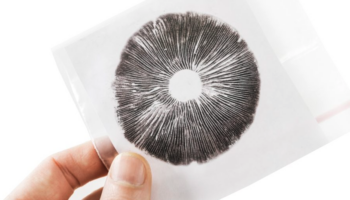
Related Podcasts

Tips if you're having a bad trip
Helpful tips for if you're having a challenging trip on lsd, shrooms or another psychedelic., an interactive website to feel better during a bad trip.
Having a bad (challenging) trip? Click here for an interactive way to feel better. Thanks to cyrilio.
Human assistance for challenging trips
Fireside support service.
Fireside Project offers free, confidential peer support during or after a psychedelic experience - call or text 6-2FIRESIDE (623-473-4733).
Please visit tripsit chat if you’d like assistance from another person.
“Say hi, tell us your substance and dose, and describe your issue.
If no one responds within 30 seconds, say ~tripsit and someone will be with you immediately.”
Calming videos
Other resources - see these two calming videos:
- Alan Watts: The Mind is a Vicious Circle
- Bob Ross, The Joy of Painting (credit to /u/Damnaged and all others on /r/LSD )
Recent Guides
Psychedelic therapy centers, edibles dosage, how long do edibles last, how long do edibles take to kick in, opioid epidemic solutions.
This work is licensed under a Creative Commons Attribution-ShareAlike 4.0 International License .
Have more questions, or want more resources and info? Visit /r/PsychedelicTherapy or /r/Psychedelics .
A Feels Trip
An emotional train you'll want to get on, about feels trip.
“When someone is overcome with emotion or a special feeling that can’t necessarily be explained”
This is the rough definition of what the term “feels” is and what this blog is all about. It’s safe to say that everyone has at least been in this state of emotion at least once or many times in their lives and the triggers for this can range from many things. Whether it’s a sad song that makes you think or a movie that moves you to tears or makes you want to stand up and cheer, a commercial that sticks with you, I mean the list goes on. It doesn’t necessarily even have to be something you see on TV or anything digital. It can be a big moment in your life that makes you overcome with emotion. Like reuniting with that best friend you haven’t seen in forever and reminiscing about all the good times you guys had. It can be getting accepted into that dream college, grad school, or job. It can sad, happy, funny, or anything in between. I hope this blog encourages you to post, share, comment on anything that puts or has put you or anyone you know in the “feels.” Buckle up everyone, it’s time to take a Feels Trip.
Below are just some examples of scenes, moments, and pictures that have been known to have put over countless of people in the feels.

- All Twin websites
- Int: +44 (0)20 8269 2910
- Our promise
- Competitions

Travel to the amazing continent of Africa for safaris & community volunteering.

Elephants, beaches & temples - Asia is a continent like no other.

Venture down under & have a true Aussie or Kiwi adventure.

Exciting internships & community volunteering projects await in Europe...

Dreaming of Maple Syrup!? Then our Canadian working holiday is the sweet fix you'll need.

Get involved with environmental conservation in the awe inspiring continent of South America.

Check out our most popular programmes as picked by our volunteers.

Experience true culture & work closely with local people to help improve communities.

Calling all nature lovers! Volunteer on meaningful conservation projects around the world.

Give your students the unique opportunity to volunteer & experience new cultures whilst on a trip abroad.

Combine paid work with the fantastic opportunity to explore Australia, Italy, Norway, Spain or the UK.

Kick-start your career with valuable work experience around the globe.

Spend 3 months to Spain or Dublin in a fully-funded professional internship.

From volunteering with lions, to teaching, there is so much you could do with your gap year abroad.
- Int: +44 (0)20 8297 3278
Call us now

- Request a callback

8 emotions you will feel during your first travelling experience
Whether this is your first travelling experience, or you are an experienced traveller, here are 8 emotions you'll relate to!

03 October 2018
Travelling can be a truly life-changing experience and also provides you with the opportunity of exploring different cultures and environments that you might otherwise be oblivious to. There is no denying that before, during and after your travels you will experience a lot of different emotions, here are some that you might feel during your first travelling experience (and maybe all of the other ones afterwards – after all, you might catch the travel bug!).
1. Excitement
You’ve been researching your trip and have started to book flights and accommodation. Eek, this is the beginning of your journey!
2. Nervousness
3. Lingering doubt
4. A sense of accomplishment
5. Boredom
6. Self-confidence
7. Love
8. Sheer dedication to travelling
Discover our amazing gap year and travelling programmes so that you can experience all of these emotions and more!
Find an experience
What do you want to do?
How long do you want to go for?
Where do you want to go?
How much do you want to spend?
When do you want to go?
Foot rating
Search by Region

Subscribe to our newsletter
Sign up for the Twin Work and Volunteer newsletter, which delivers details about our most popular programmes, blogs, and special offers via e-mail to your inbox every month.

Work & Volunteer
- Internships
- Volunteering projects
- Apprenticeships
Travel information
- Responsible travel
- Travel insurance
- Our promise to you
Site information
- Payment methods
- Privacy policy
- Terms and conditions

© WAVA Limited Registered in England & Wales: 07334749 Twin Group, The Greenwich Centre, 12 Lambarde Square, Greenwich, London, SE10 9GB VAT No. 983914966
All Twin Websites
- Twin Group Website Company information, employer services, partnerships, recruitment and online resources to support our international agents in promoting Twin products and services.
- English Courses Year-round British Council accredited English schools in London and Eastbourne. Courses over one week can be combined with work experience. Accommodation options include homestay, residential, hotels and hostels.
- International Summer Schools Junior summer centres offering excursions, sports and social activities, including Tottenham Hotspur Football Coaching Course and a choice of either homestay or residential accommodation.
- School Group Travel Tailor-made budget school group tours and programmes throughout the UK, Europe and China, including optional 2/3 star hotel accommodation, youth hostels and homestays, plus a range of support services.
- Twin Accommodation We provide a great choice of safe, comfortable and affordable options including; homestay, residential, flatshare and hostel accommodation.
- Work & Volunteer Volunteer projects, gap year travel, career breaks, fully-funded Leonardo EU internships, teaching jobs and working holidays. Award-winning, market leaders in work experience and internships offering placements in a wide range of companies throughout the UK. Part of the Year Out Group.
- Employment & Training Training and employment solutions for learners, jobseekers, employers and partners. Government-funded Advanced Training Programmes, jobseeker support, the Work Programme, ESF Families and services to employers.
- lol Badge Feed
- win Badge Feed
- trending Badge Feed
Browse links
- © 2024 BuzzFeed, Inc
- Consent Preferences
- Accessibility Statement

"Sleepcations" Are Becoming A Great Alternative To Traditional Traveling If You Need To Catch Up On Sleep
Travel experts break down this growing industry trend and what you should know before you attempt this kind of trip.

HuffPost Writer
From “gig-tripping” to “travel dupes” to “hush trips,” the number of new travel trends is seemingly endless. But perhaps the most appealing concept in the tourism space of late is the “sleepcation.”
So much of travel these days seems to involve running ourselves ragged trying to hit every amazing attraction we see on TikTok and Instagram. Sleepcations, however, take the polar opposite approach to vacation.
But what exactly is a sleepcation and how does it work? Below, travel experts break down the benefits and downsides of sleep tourism.
What is a ‘sleepcation’?
“At its root, it’s really as simple as it sounds: taking a vacation with the intention to get a good night or a few good nights of sleep,” said Tanner Saunders , a senior hotels reporter at The Points Guy. “It can be as simple as checking into a hotel in your own city with a special sleep package that includes enhanced ways to get a great night of sleep ― like a fancy bed, some advanced technology, sound machines or some sleep-enhancing supplements ― or a full-on sleep retreat where you meet with experts who help guide your physical and mental wellness to make sure you leave feeling renewed, refreshed and relaxed.”

Although the idea of taking a vacation with the aim of getting quality rest time is nothing new, the number of travelers interested in sleep tourism is growing. According to Skyscanner’s 2024 travel trends report , nearly 50% of American travelers surveyed say they are more mindful about sleep health now compared to a few years ago. The same research showed that “sleeping” topped the list of U.S. travelers’ main activities for their next vacation, outranking shopping, nightlife and wildlife spotting.
“While some wellness resorts have been focusing on sleep for years, now more and more resorts and hotels, from luxury to lifestyle and even budget-friendly properties, are making sure that sleep is as the forefront of a stay,” Saunders said. “For example, many luxury hotels are adding beds that use adaptive technology to enhance and track your sleep while some more budget-friendly options, often associated with a major hotel company, offer in-room meditation apps or sleep sounds.”
For example, the Malibu Beach Inn in Southern California features two designated “sleep suites,” and the Four Seasons Resort Hualalai on Hawaii ’s Big Island offers an 80-minute “sweet dreams” massage treatment meant to promote a good night’s rest. Virgin Hotels Dallas offers blackout curtains in each room and bedtime amenities like bath bombs and relaxation spray.
You can take advantage of all the sleep-related benefits hotels offer by reading up on the amenities, asking a staff member or even downloading the hotel app when available. You might find pillow menus that allow you to choose your preferred level of firmness or guided meditations based around healthy sleep.
“A sleepcation typically entails staying in accommodations that offer features such as high-quality bedding, soundproofing, blackout curtains, plus sleep-enhancing amenities like aromatherapy products, meditation aids, soothing bedtime rituals, and specialized menus designed to encourage relaxation and better sleep,” said Anna Pierzak , spa director at Royal Champagne Hotel & Spa in France .
From nonalcoholic “ mocktails ” and herbal teas to satin eye masks and white noise machines, there are endless ways to elevate the sleeping experience. Some hotels even provide bedside dream journals. Although these amenities and services might seem like unnecessary luxuries, the reality is that doing whatever you can to prioritize sleep is quite important.
“Most people don’t get the recommended seven to nine hours of sleep per night,” noted Danielle Desir Corbett , an affordable luxury travel and personal finance expert and host of “The Thought Card” podcast. “Over time, this ‘sleep debt’ can have serious health implications, affecting cognitive function, mood, weight, and immune systems. Sleep is even linked to chronic diseases such as diabetes, obesity and hypertension. Sleepcations focus on rest and rejuvenation and can be a powerful tool in combating health issues.”
What are the benefits of sleep tourism?
“You know the common saying of ‘needing a vacation from your vacation’? Well, sleepcations were designed to focus on the well-being of the mind and body over sightseeing and hectic schedules,” noted Michael Bridges, general manager of Virgin Hotels Dallas.
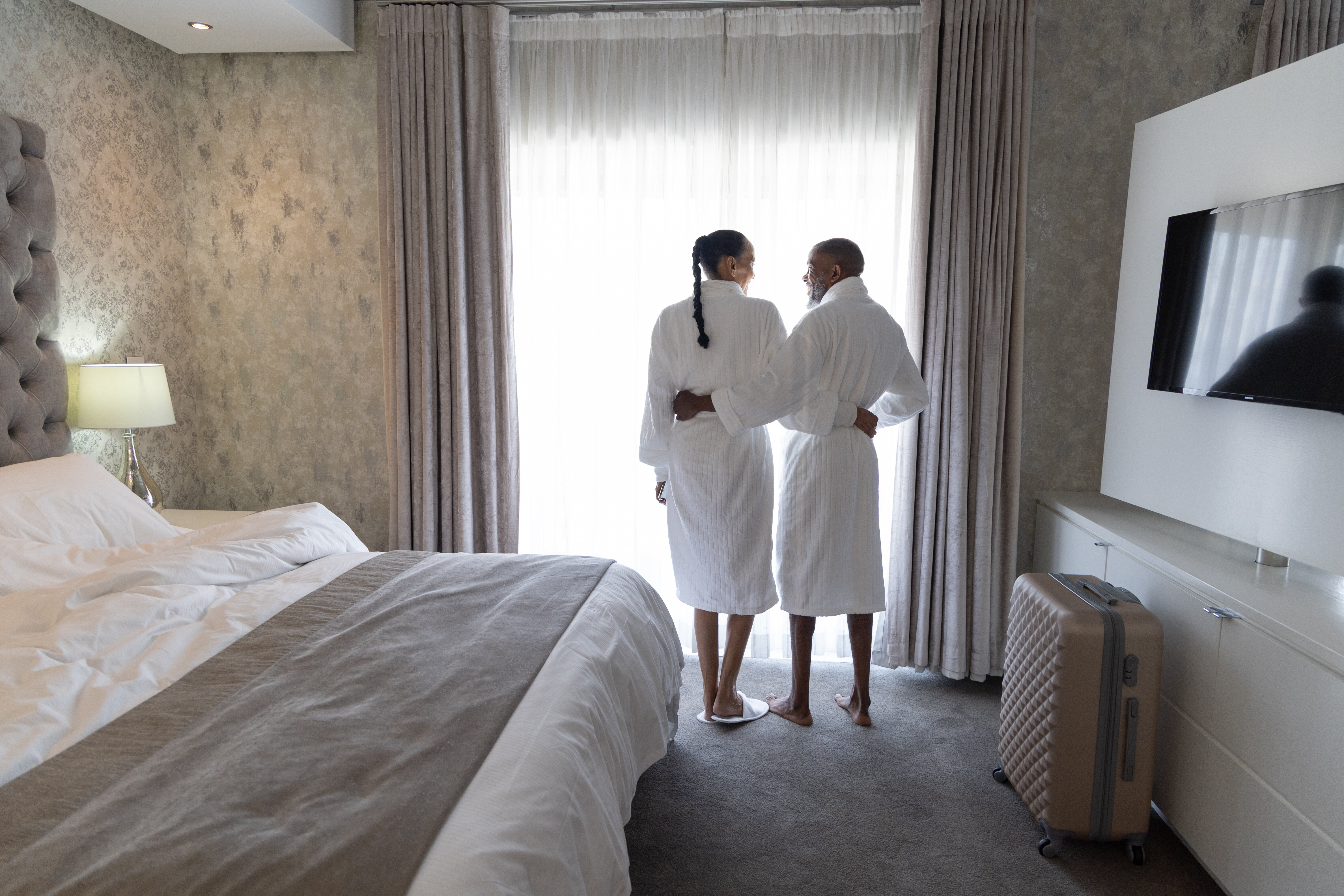
The idea is to escape the fast-paced lifestyle, relax your mind and body and leave your vacation feeling rested and refreshed. It’s about self-care and setting boundaries in a time when the lines between work and leisure have become blurry.
“Many people take a vacation and plan everything down to the last detail, and then it’s ‘go, go, go,’” said Gregory Day, managing director of Malibu Beach Inn. “A sleepcation is a more intentional vacation where you are prioritizing yourself and your sleep — one of, if not the most, key pillar of health. You may still have the packed itinerary, spa treatments and restaurant reservations, but are coming back to your hotel room to intentionally sleep.”
He noted that his hotel even features smart technology-equipped beds that track your length of sleep, amount of restful versus restless sleep, heart rate, breath rate and more. Thus, you can use your trip to gain personalized insights into your sleep health.
“If you’ve been sleeping poorly, a sleepcation can break that cycle and set you up for better sleep going forward,” said Dave Grossman , a travel expert and creator of MilesTalk and Your Best Credit Cards. “They are also more cost-effective than a traditional vacation since you aren’t spending on outside activities.”
Sleepcations can be as elaborate and expensive or simple and low-cost as you’d like. The concept is truly fluid and flexible.
“As a parent of an active and adventurous toddler, I see sleepcations gaining popularity quickly among sleep-deprived parents with young children,” Corbett said. “You can plan them at exotic, off-the-grid locales or DIY by being more intentional. Simple steps like requesting a room away from the elevator or ice machine, packing an eye mask, turning off your alarm, or reducing the brightness on your phone can all contribute to a more restful sleep experience.”
You might even go home with new tips and tricks that will help you sleep better in your everyday life as well.
“While I’m not an expert on sleep itself, it goes without saying that taking a sleepcation means you leave feeling truly rested — and hopefully with a pathway to stay well rested and energized after sleeping in your own home,” Saunders said. “Taking a sleepcation after a particularly complex or stressful life event can help you reset. Or, on the opposite end, taking a sleepcation without a ‘need’ for it can still be extremely beneficial, relaxing and helpful for your everyday life.”
Are there any downsides to taking a sleepcation?
“One thing to consider about taking a sleepcation is that not everything you enjoy during the experience can be replicated at home ― or at least economically,” Saunders said. “Say you end up sleeping in a super fancy bed that lulls you to sleep, controls your body temperature and wakes you up at the exact right moment. That can be a great way to help you sleep great for a night, but something unattainable to the everyday person to bring into their own home. These types of trip can often be very expensive and cost prohibitive to people looking for a more economical experience.”
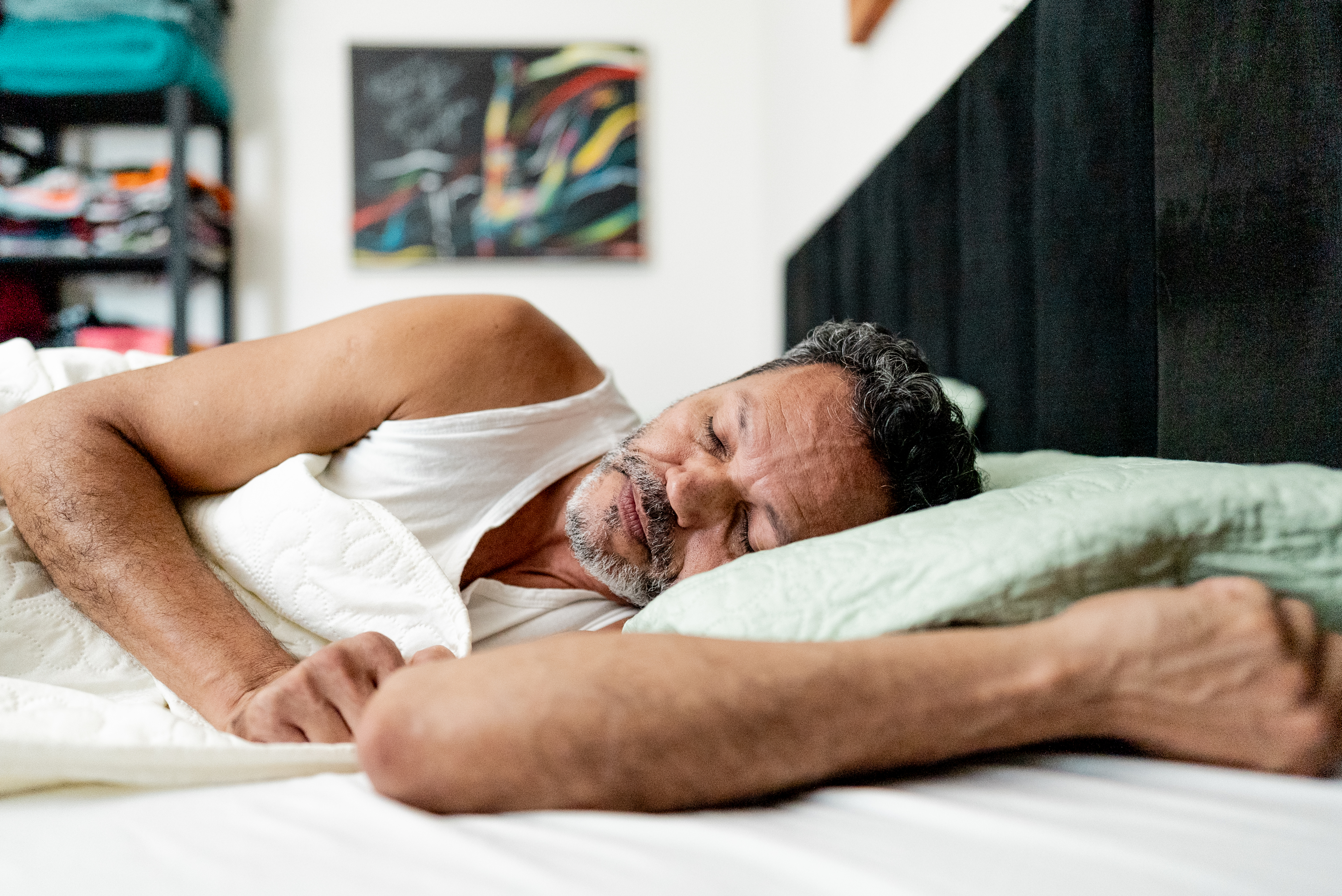
Doctors are skeptical about the long-term benefits of sleepcations as well.
“While sleep tourism seems like a decent idea, it’s more of a Band-Aid,” said Dr. Abhinav Singh, a medical review expert at Sleep Foundation and medical director of the Indiana Sleep Center. “Consistent habits of sleep-wake are essential for long-term health benefits.”
If you struggle with your sleep heath, you might get more out of a consultation with a doctor or home-based sleep program than a restful vacation.
“While a sleepcation may sound tempting due to its undeniable benefits, it may be difficult to pull off,” Corbett said. “Traveling is often associated with exploring and trying new things, which can make it difficult to relax and unwind. Additionally, many vacationers wake up early to avoid crowds and make the most of their time, which can further disrupt their sleep and leave them exhausted.”
She added that another sleepcation downside is the fact that you might miss out on certain tourist activities and amenities by prioritizing rest.
“I wish more hotels would offer later breakfast buffets so I can sleep in without worrying past 10 a.m.,” Corbett noted.
For many, prioritizing sleep might require some extra effort.
“While there aren’t inherent downsides, travelers intrigued by this vacation style should be open to adjusting their habits,” Pierzak said. “We suggest forgoing pre-bedtime cocktails and excess stimulation, inviting guests to embrace a distinctive form of rejuvenation that may diverge from their typical vacation experiences.”
If fully experiencing a destination and creating lasting memories with loved ones is your ultimate goal, sleep tourism might not be for you either.
“Sleepcations may also be better suited for solo travelers who travel independently and don’t have to worry about the pressure of spending time with companions,” Corbett said. “Lastly, many people won’t hop on this travel trend because they won’t see the value of spending their hard-earned money prioritizing sleep while away from home on vacation. However, it’s important to note that any vacation can have sleepcation elements, so it’s easy to tailor to individual needs and travel preferences.”
This article originally appeared on HuffPost .
Share This Article
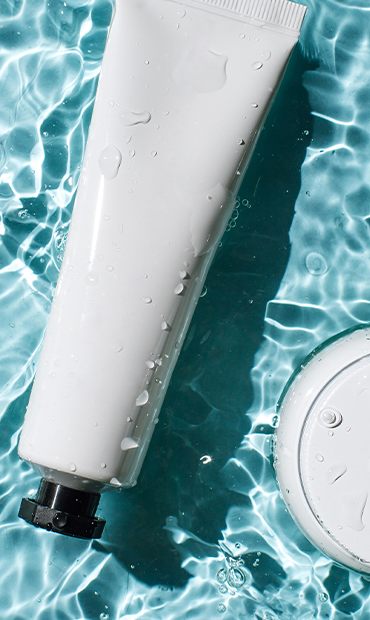
The Enlightened Mindset
Exploring the World of Knowledge and Understanding
Welcome to the world's first fully AI generated website!
What is a Field Trip: Exploring the Benefits, Challenges, and Creative Ideas
By Happy Sharer
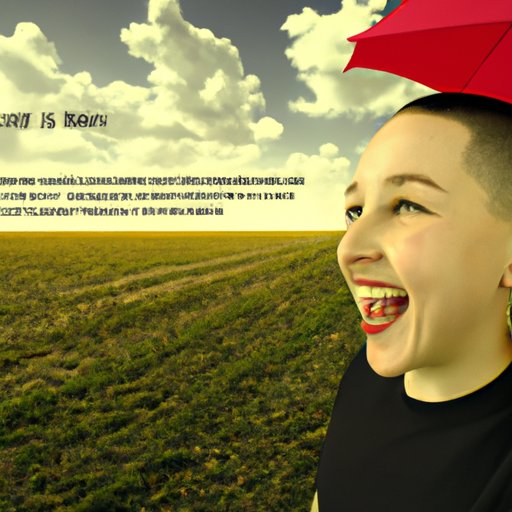
Introduction: What is a Field Trip?
A field trip is an educational excursion outside of the classroom environment. It is an opportunity for students to gain first-hand experience with the material they are learning in class. Field trips can take place at local attractions, museums, historic sites, nature centers, and more. They can also be conducted virtually, allowing students to explore faraway places without ever leaving the classroom.
Overview of Field Trips: Exploring the Benefits and Challenges
Field trips are an important part of any school curriculum. They provide an opportunity for students to gain real-world experience with the material they are learning in class. However, there are both benefits and challenges associated with field trips that must be considered before planning one.
Benefits of Field Trips
The most obvious benefit of field trips is that they give students the chance to experience the material they are learning in class in a real-world setting. According to a study conducted by the National Education Association, “Field trips provide students with experiences that cannot be replicated in the classroom. They offer opportunities to explore concepts from a different perspective, to observe firsthand what has been read about in textbooks, and to make connections between course content and real life.”
In addition to providing an opportunity for experiential learning, field trips can also help to engage student interest in the subject matter. A study conducted by the University of Texas found that students who went on field trips were more likely to remember the material they had learned than those who did not go on the trip. Furthermore, field trips can spark curiosity and inspire students to ask questions and seek out further knowledge.
Challenges of Field Trips
Despite their many benefits, field trips can present some challenges. One of the biggest challenges associated with field trips is the cost. Depending on where you are traveling and the size of your group, the expenses can quickly add up. Additionally, finding the time to plan and execute a successful field trip can be difficult for teachers who already have a full schedule.
Safety is another issue that must be taken into consideration when planning a field trip. It is important to ensure that all students are supervised at all times and that the destination is appropriate for the age and maturity level of the students.
Tips for Planning a Successful Field Trip
Planning a successful field trip requires careful consideration of multiple factors. Here are some tips to keep in mind when planning a field trip.
Establish Goals
Before planning a field trip, it is important to establish clear goals. Ask yourself why you are taking the students on the trip and what you hope to accomplish. This will help to ensure that the field trip is meaningful and relevant to the material being taught in class.
Choose an Appropriate Destination
Once you have established your goals, it is important to choose a destination that is appropriate for the age and maturity level of the students. When selecting a location, consider the interests and abilities of the students and make sure that the destination offers something that will be interesting and engaging for them.
Develop an Itinerary
Once you have selected a destination, it is important to develop an itinerary that outlines the activities for the day. Make sure there is enough time for each activity and that the activities are relevant to the goals you have established for the trip.
Manage Safety Issues
Safety should always be a top priority when planning a field trip. Make sure that all students are supervised at all times and that the destination is appropriate for the age and maturity level of the students. Additionally, be sure to review any safety policies or procedures with the students prior to the trip.

A Guide to Creating a Meaningful Field Trip Experience
Creating a meaningful field trip experience requires careful planning and preparation. Here are some tips to ensure that your students get the most out of their field trip.
Set Clear Expectations
Prior to the field trip, it is important to set clear expectations for the students. Explain to them the purpose of the trip and what you hope they will gain from the experience. Additionally, discuss any rules or guidelines that need to be followed during the trip.
Make Connections with Course Material
When planning the activities for the field trip, look for ways to connect the material to the course content. This will help to ensure that the students gain a deeper understanding of the material and that the trip is meaningful and relevant.
Utilize Time Wisely
Time management is key to ensuring a successful field trip. Make sure that all activities are planned in advance and that the students understand what is expected of them. Additionally, leave room for flexibility in case something unexpected arises.
How Field Trips Enhance Learning in the Classroom
Field trips can be an invaluable tool for enhancing learning in the classroom. Here are some of the ways that field trips can benefit students.
Engaging Student Interest
Field trips can help to engage student interest in the subject matter. Experiencing the material firsthand can make it easier for students to understand and relate to the material being taught in class.
Building Critical Thinking Skills
Field trips can also help to build critical thinking skills. Students are exposed to new information and must process it in order to gain a better understanding of the material. This helps to develop problem-solving abilities and encourages students to think more deeply about the material.
Developing Problem-Solving Abilities
Field trips can also help to develop problem-solving abilities. Students are exposed to new environments and must find ways to navigate them. This helps to build confidence and teaches students how to think on their feet.

The Value of Field Trips for Students
Field trips can be a valuable learning experience for students. Here are some of the ways that field trips can benefit students.
Developing Self-Confidence
Field trips can help to boost self-confidence. Being in unfamiliar surroundings can be intimidating, but it can also be a great opportunity for students to practice problem-solving skills and develop self-confidence.
Strengthening Interpersonal Relationships
Field trips can also help to strengthen interpersonal relationships among students. Working together to navigate new environments and solve problems can help to foster teamwork and collaboration.
Acquiring New Knowledge and Experiences
Finally, field trips can open students up to new knowledge and experiences. Seeing things firsthand can help to bring the material to life and make it easier for students to understand and remember.
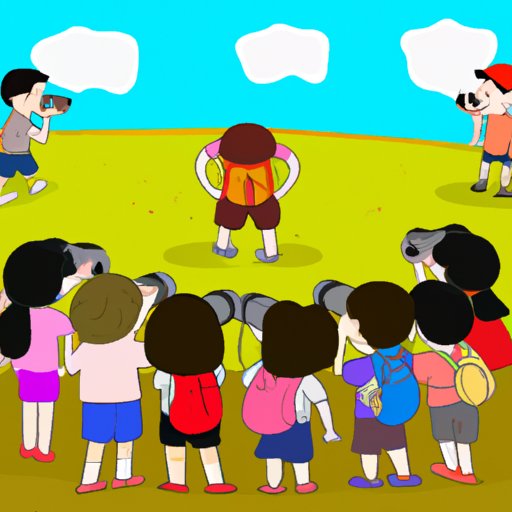
Creative Ideas for Field Trips
There are many creative ways to incorporate field trips into the classroom. Here are some ideas for fun and engaging field trips.
Museum Visits
Museums are a great way to introduce students to a variety of topics. From art and history to science and technology, there are a variety of museums that offer educational experiences for students of all ages.
Local Attractions
Local attractions can be a great way to introduce students to the community and its culture. Consider visiting historical sites, parks, zoos, or aquariums for an interactive and fun learning experience.
Nature Walks
Nature walks are a great way to get students outdoors and exploring their natural surroundings. Not only can this be a fun activity, but it can also be a great way to introduce students to concepts such as ecology and conservation.
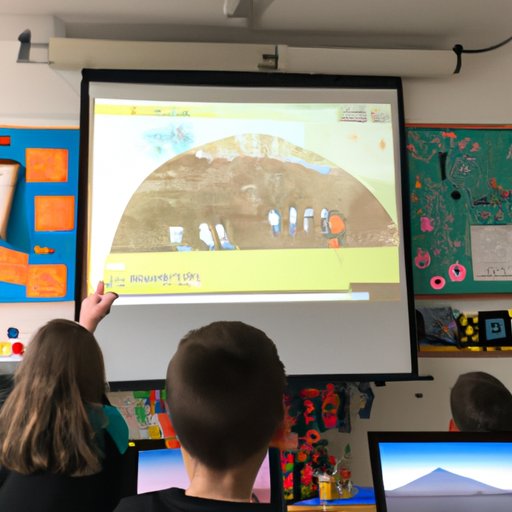
Virtual Field Trips: Taking Education Beyond the Classroom
Technology has opened up a world of possibilities for educators looking to take their students on field trips. Virtual field trips allow students to explore faraway places without ever leaving the classroom.
Advantages of Virtual Field Trips
Virtual field trips come with a number of advantages. They are often less expensive than traditional field trips, and they can be used to explore destinations that would otherwise be inaccessible. Additionally, virtual field trips can be tailored to fit the curriculum and the specific needs of the students.
Types of Virtual Field Trips
There are a variety of types of virtual field trips available. These include virtual tours of museums and historical sites, live video streams of events, and interactive simulations of different environments. Each type of virtual field trip offers a unique experience and can be used to enhance learning in the classroom.
Tips for Planning a Virtual Field Trip
When planning a virtual field trip, it is important to do your research. Check to see if the destination offers a virtual tour and make sure that the technology needed is available and easy to use. Additionally, make sure to set clear expectations and goals for the virtual field trip and to create an itinerary that outlines the activities for the day.
Field trips can be a valuable learning experience for students. They provide an opportunity for students to gain first-hand experience with the material they are learning in class and can help to engage student interest in the subject matter. Additionally, field trips can help to build critical thinking skills and develop problem-solving abilities. Finally, virtual field trips offer an exciting way to explore faraway places without ever leaving the classroom. With careful planning and preparation, field trips can be a fun and educational experience for everyone involved.
(Note: Is this article not meeting your expectations? Do you have knowledge or insights to share? Unlock new opportunities and expand your reach by joining our authors team. Click Registration to join us and share your expertise with our readers.)
Hi, I'm Happy Sharer and I love sharing interesting and useful knowledge with others. I have a passion for learning and enjoy explaining complex concepts in a simple way.
Related Post
Exploring japan: a comprehensive guide for your memorable journey, your ultimate guide to packing for a perfect trip to hawaii, the ultimate packing checklist: essentials for a week-long work trip, leave a reply cancel reply.
Your email address will not be published. Required fields are marked *
Expert Guide: Removing Gel Nail Polish at Home Safely
Trading crypto in bull and bear markets: a comprehensive examination of the differences, making croatia travel arrangements, make their day extra special: celebrate with a customized cake.

This Vibrant East Coast City's Food And Landscapes Feel Just Like France
V ermont, a famed fall destination for honeymoons and getaways on the East Coast, is one of the smallest states in the country. However, what it lacks in size, it makes up for in character thanks to its enchanting towns like Montpelier. It was established in 1781 and is located on the Winooski River, less than an hour from Burlington, Vermont's largest city. Montpelier, Vermont's capital, is named after Montpellier in Southern France.
Despite the namesake, the two cities have their differences. The Montpelier in Vermont is the smallest state capital in the U.S. and is only spelled with one L. On the other hand, Montpellier is one of France's biggest cities and has two L's. In fact, this distinction led Montpellier to gift its American counterpart with accidentally misspelled sports jerseys in 2017. Nevertheless, you will still find a taste of France, figuratively and literally, in Montpelier, Vermont. Greenery, churches, and several historical buildings, all of which evoke images and landscapes of French villages, surround this gorgeous city's downtown.
While France is home to the Forest of Fontainebleau, in Montpelier, visitors can enjoy scenic vistas and a walk in the woods at Hubbard Park. Patisseries are common in France, and in Montpelier, visitors can savor a croissant and other baked goods at local businesses like Birchgrove Baking and Bohemian Bakery. For fine dining, there's Oakes & Evelyn, which serves a popular French dish, beef tartare. All in all, it would be an understatement to describe Montpelier as idyllic.
Read more: Couples Will Swoon Over These Romantic Destinations In Fiji
Small Town Fun In Montpelier, Vermont
If you've always wanted to visit an outdoor street market in France, guess what? Montpelier hosts the Capital City Farmer's Market. Vendors sell local produce, art, skincare, and more at this seasonal event. If you need a snack, head to the Skinny Pancake for a sweet or savory crepe.
Montpelier may exude a French-like allure, but that's not all there is to the quaint city. In addition to picturesque country landscapes and delectable food, visitors will find family-friendly attractions. Morse Farm Maple Sugarworks, open year-round, offers tours and a selection of maple products, including syrup, available for sampling and purchasing. Many Tripadvisor reviewers describe this as an educational experience centered on maple syrup production.
For history buffs, there's the Vermont Historical Society Museum. "This museum has been laid out perfectly to appeal to all ages. It's very informative and the displays take you through the history of Vermont, but also give a context for what was happening generally at each period," states a Tripadvisor review from 2023. Of course, you can't leave Montpelier without visiting the Vermont State House. This impressive structure was built in the 1800s and is open to the public. There is no admission fee, and free seasonal guided tours are available. It's little wonder Montpelier has previously been named one of the best small towns in the Northeast by USA Today's Best Reader's Choice awards.
Plan Your Vacation To Montpelier, Vermont
The Green Mountain State is known for its many bed & breakfasts. If a visit to Montpelier is on your radar, consider staying at the High Hill Inn. Top-rated on Tripadvisor, it looks straight out of a Nora Ephron film. This cozy accommodation option serves organic farm-to-table breakfast dishes and is less than 10 minutes from Downtown Montpelier. Reviewers rave about the property's scenic views, with many mentioning seeing deer and other wildlife. You can make reservations by calling the High Hill Inn.
If you want to stay downtown near many of Montpelier's attractions and eateries, there's the Capitol Plaza Hotel Montpelier, Tapestry Collection by Hilton. The three-star hotel was renovated in 2020 but dates back to the early 1930s. It features standard rooms, suites, and a fitness center. If you're located on the East Coast, keep in mind that Montpelier is only about three hours from Boston and less than a six-hour drive from New York. Alternatively, you could fly into Patrick Leahy Burlington International Airport, about 40 minutes from Montpelier.
Lastly, be mindful of the weather. Vermont and Montpelier are frosty for the majority of the year except for the summer months. For even more East Coast destinations, check out the cheapest beach towns to visit in the region and the thrilling road trip that allows you to explore the most iconic national parks .
Ready to discover more hidden gems and expert travel tips? Subscribe to our free newsletter for access to the world's best-kept travel secrets.
Read the original article on Islands .

- Search Please fill out this field.
- Manage Your Subscription
- Give a Gift Subscription
- Newsletters
- Sweepstakes
:max_bytes(150000):strip_icc():format(webp)/Kamala-Harris-tout-052723-f15b6b5971554b31bdc49b98182f9ff8.jpg)
- Politician Families
All About Donald Trump's 10 Grandkids
Trump has 10 grandchildren, with his oldest being 17-year-old Kai and his youngest being 4-year-old Carolina
:max_bytes(150000):strip_icc():format(webp)/thumbnail_IMG_3961-bc225863271e4083a2114cd444edc707.jpeg)
D Dipasupil/FilmMagic
Donald Trump is a grandfather of 10.
Three of his five children ( Donald Jr. , Ivanka and Eric , with ex-wife Ivana Trump) have 10 kids between them , ranging in age between 4 and 17. He is also dad to Tiffany (with ex-wife Marla Maples) and Barron Trump (with wife Melania Trump ).
Amid his campaign for president during the 2024 election, Trump has had his kids and grandkids by his side. Most recently, his eldest grandchild, Kai, the daughter of Donald Jr., appeared on stage at the Republican National Convention on Wednesday, July 17, to give a speech about her grandfather.
"I'm speaking today to share the side of my grandpa that people don't often see," she told the crowd, per NPR . "To me, he's just a normal grandpa. He gives us candy and soda when our parents aren't looking. He always wants to know how we're doing in school."
Here’s everything to know about Donald Trump’s 10 grandchildren.
Donald Jr. Trump’s Kids
donald-trump-grandkids-071824-1
Trump’s eldest child Donald Jr. Trump has five children, whom he shares with ex-wife Vanessa Haydon. The two wed in November 2005 and were together for 13 years before finalizing their divorce in February 2019.
Donald Jr. is currently engaged to former Fox News host Kimberly Guilfoyle , who shares 17-year-old son Ronan Anthony with her ex-husband Eric Villency. When Donald Jr. and Guilfoyle get married, Ronan will become his stepson.
Kai Madison Trump
Chip Somodevilla/Getty
Kai Madison Trump is Trump’s eldest grandchild. She was born on May 12, 2007, to parents Donald Jr. and Vanessa. Like her grandfather, she enjoys golf and often shares photos of her and Trump on the green on social media.
In July 2024, Kai appeared on stage at the RNC to give a speech about Trump, telling the crowd that to her, he’s just “a normal grandpa.” She was introduced on stage by her father Donald Jr., who said it was her "first time ever giving a speech."
Donald John Trump III
Donald Trump Jr. Instagram
Donald Jr. and Vanessa’s first son and second child is Donald John Trump III, who goes by Donnie . He was born in N.Y.C. on Feb. 18, 2009.
On July 10, Donald Jr. shared a photo of himself with his children Donnie, Kai and Chloe at Trump National Doral Miami where Trump addressed the crowd on stage as part of his presidential campaign.
Tristan Milos Trump
Donald Jr. and Vanessa’s third child is Tristan Milos Trump, who was born on Oct. 2, 2011. Tristan regularly makes appearances on Donald Jr.’s Instagram page.
In October 2023, Donald Jr. celebrated his son’s birthday , writing in part, “Happy birthday to my favorite 12-year-old. Tristan, a.k.a. T-man… I love you very much and hope you have an awesome birthday buddy.”
The post included a handful of snapshots of Tristan, including one of him surrounded by his siblings with a football cake and another of Trump giving him a hug on an airplane.
Spencer Frederick Trump
Donald Trump Jr./Instagram
Spencer Frederick Trump is Donald Jr. and Vanessa’s fourth child. He was born just over a year after his brother Tristan on Oct. 21, 2012. Spencer appears to have an interest in fishing like his father, per photos of them on social media.
For Spencer’s 11th birthday in October 2023, Donald Jr. posted a tribute to his son, sharing a collection of photos of him fishing and spending time with his grandfather. “Happy 11th birthday day to my youngest little man Spencer,” Donald Jr. wrote at the time . “I’m very proud of you and love you incredibly.”
Chloe Sophia Trump
Donald Jr. and Vanessa welcomed their fifth and youngest child, Chloe Sophia Trump, on June 16, 2014. She appears to share many interests with her older siblings, including golfing and fishing. In May 2024, Donald Jr. shared a photo of Chloe on “the links with grandpa” and for her 10th birthday in June, she had a golf-themed cake.
In June 2024, Donald Jr. shared a photo of him and Chloe showing off a fish they caught. He also shared a video of Chloe at the wheel of their boat, saying she wanted to “do all the captaining.”
Ivanka Trump’s Kids
Ivanka Trump/Instagram
Trump’s second child and oldest daughter Ivanka Trump is the mother of three children, whom she shares with husband Jared Kushner. The couple married on Oct. 25, 2009 and marked their 14th wedding anniversary in 2023; at the time, Ivanka wrote, "I am so thankful for this beautiful life and family we’ve built together."
Arabella Rose Kushner
Ivanka and Kushner welcomed their first child, daughter Arabella, on July 17, 2011. In June 2023, Ivanka celebrated her daughter’s bat mitzvah , writing "Arabella's giving heart and commitment to making a positive impact embodies the spirit of this special milestone," listing some of Arabella's volunteer work.
For her 13th birthday in July 2024, Ivanka shared a gallery of photos in honor of Arabella’s birthday, including her Taylor Swift-themed cake, which featured lyrics from “Blank Space.” “Arabella, you inspire and amaze me every day,” Ivanka captioned the post.
Joseph Frederick Kushner
Ivanka Trump Instagram
Joseph Frederick Kushner is the second child and first son of Ivanka and Jared. He was born in N.Y.C. on Oct. 14, 2013. In October 2022, she celebrated Joseph’s 9th birthday with a collection of photos of him and his siblings.
“Happy 9th birthday, Joseph!” she captioned the post . “It is the greatest privilege of my life to be your mama! ... Watching you grow into a creative, compassionate and inquisitive young man is a total joy."
Theodore James Kushner
Ivanka and Jared’s third and youngest child is Theodore James Kushner, whom they call Theo. He was born on March 27, 2016. For his 8th birthday, Ivanka posted a tribute on social media, noting that some of his favorite hobbies include “football to parkour, jujitsu, guitar, piano, Hebrew, Rubik’s cubes, Chinese, puzzles, and poker, just to name a few.”
“Every day, you amaze us with your relentless pursuit of learning, exploring, and mastering new skills,” Ivanka captioned a photo of her, Jared and Theo with his Miami Dolphins-themed cake. “Your enthusiasm and joy in every adventure are truly inspiring."
Eric Trump’s Kids
Lara Trump/Instagram
Trump’s third child and second son Eric Trump has two children with his wife Lara Trump. The couple got married on Nov. 8, 2014, at the Mar-a-Lago Club in Palm Beach, Fla.
Eric Luke Trump
Lara Trump Instagram
Eric Luke Trump, who goes by his middle name, is Eric and Lara’s first child. He was born in N.Y.C. on Sept. 12, 2017. As Luke turned six in 2023, Lara shared a photo of him and his grandfather on an airplane together, writing, “A YUGE thumbs up 👍🏽 for Luke, who turns SIX YEARS OLD today!!!! 🎂🎈Love you infinity x infinity 🤍.”
Carolina Dorothy Trump
Carolina Dorothy Trump is Eric and Lara’s second and youngest child born on Aug. 19, 2019. She is also Trump’s youngest grandchild. Lara regularly gives updates on her kids on social media, including photos of Carolina playing soccer and spending time with her grandfather .
In March 2024, Carolina shared the runway with her mother as they walked in a fashion show in support of Big Dog Ranch Rescue, where Trump also made an appearance on stage.
Related Articles
Advertisement
Supported by
How to Spot the Signs of Heat Exhaustion
There are simple ways to address it quickly. Here’s what to know.
- Share full article

By Nina Agrawal
Dangerously high temperatures across much of the United States have increased the risk of heat exhaustion and other heat-related illnesses . Knowing the signs of heat exhaustion and how to treat it can help prevent more serious problems.
What is heat exhaustion?
Heat exhaustion occurs when a person is no longer able to keep exerting themselves in the heat, usually because the heart can’t keep up with the demands on it. The body loses too much water and salt, usually through excessive sweating. It can happen during exercise, factory work or even a long wait at a bus stop in hot and humid weather.
Typically, when temperatures are high, someone experiencing heat exhaustion may start to feel dizzy, faint or nauseous, said Dr. Hany Atallah, an emergency medicine physician and the chief medical officer of Jackson Memorial Hospital in Miami.
“That means you’ve overheated, you’ve overexerted yourself,” Dr. Atallah said. “You really need to rest.”
Other signs of heat exhaustion include a headache, vomiting, muscle cramps and an increased heart rate
Heat index forecast for…
Who is most susceptible.
Heat exhaustion typically occurs in warmer months and during heat waves, said Dr. Jacquelyn Bowers, the director of emergency services at Ochsner L.S.U. Health System of North Louisiana. It most commonly affects people who are outdoors for long stretches without taking breaks to cool down and replace lost fluids. This can include outdoor workers, athletes and people who are homeless.
Older adults, infants and young children also face heightened risk of overheating because they have less ability to regulate body temperature and balance fluids, said Dr. Ronna Campbell, an emergency medicine physician at the Mayo Clinic in Rochester, Minnesota. People who take certain medications , including some blood pressure pills, may also be at greater risk.
Can you prevent heat exhaustion?
“We can control a lot of heat illnesses on our own,” Dr. Bowers said, including by limiting time outdoors and avoiding strenuous exertion when temperatures are high. You should also wear loose clothing and stay hydrated to help your body keep cool.
Staying physically fit — by doing exercise that increases your heart rate for at least 30 minutes four times a week — may be the best form of prevention, said Douglas Casa, a professor of kinesiology at the University of Connecticut. It means your heart will be in better shape to tolerate stress during times of high heat.
For people who spend significant amounts of time in the heat, such as athletes and laborers, heat acclimatization — gradually increasing exertion in high heat over several days — can provide protection against heat exhaustion and other heat-related illness.
How is heat exhaustion treated?
If you’re showing signs of heat exhaustion, you need to find a way to quickly cool down and hydrate, the doctors said. Dr. Casa also recommended letting someone know you’re not feeling well in case your symptoms worsen and you need assistance. You should also stop any activity you’re doing and rest.
If you’re at the beach or out hiking, find some shade and remove any extra layers of clothing to help bring your body temperature down. You can also return to your car and blast the air conditioning, Dr. Atallah said. Taking a dip in a cold body of water can help you cool off quickly, though experts recommend only doing so if someone else is around, in case your symptoms get worse and you aren’t able to get out or seek help.
If you’re indoors without access to air conditioning, go to a cooling center, take a cold shower or mist yourself with cold water and blow a fan on your skin. This can help sweat to evaporate and your body to cool down, Dr. Campbell said. Propping your feet up will help blood return to the heart, lessening the strain on it.
Freezing cold, wet towels “over the entire body while the feet are propped is like the magic elixir to heat exhaustion,” Dr. Casa said.
Sipping cool fluids will also help. Dr. Bowers recommended sports drinks to replace electrolytes such as sodium and potassium that you sweat out when dehydrated.
These measures typically help people who have heat exhaustion feel better almost immediately, Dr. Casa said.
If your symptoms worsen or don’t improve within 30 minutes — or if you are experiencing confusion, seizures or other changes to your mental status — call 911 or go to your closest emergency department, the doctors said. A core body temperature of over 104 degrees Fahrenheit, together with these other symptoms, is also a red flag that you need immediate medical attention.
What to Know During Extreme Heat
Staying Safe: We asked emergency room doctors for their advice on protecting yourself from dehydration, heat stroke and other serious health problems.
Heat’s Physical Toll: High temperatures can put the body under immense stress. Here’s what it looks like .
Effect on the Brain: While heat can have an alarming impact on our bodies, it can also impair cognition and make us irritable, impulsive and aggressive .
Keeping Cool Indoors: Too hot to go outside? Here’s how to be comfortable in your home — with or without air-conditioning.
Sleeping Tips: Heat can affect both how much you sleep and how good that sleep is. These simple steps can help you get a better night’s rest when it’s hot.
Medications: Certain antidepressants, blood pressure pills and other drugs make you more susceptible to heat-related illness .
Travel: Stifling conditions could impact your travel plans this summer. Use these tips and precautions to protect yourself and your vacation dollars.

COMMENTS
Main trip may last four to six hours, but comedown may extend to standard length. 75 ug to 150 ug. A substantial experience. All phases of the LSD experience described above experienced. At lower range, hallucinations limited to a breathing effect, strong psychedelic colors, mild visual hallucinations (e.g., objects appear distorted). At the ...
The duration of an LSD trip typically lasts between 6 to 12 hours, with variations based on individual sensitivity and dosage. After the peak effects subside, individuals may continue to experience residual effects, such as changes in mood, perception, and thought patterns, for several hours afterward.
TRIP LEVEL 3: MILD DOSE (1-1.5g) Expect euphoria, mild to moderate visuals (e.g. colours appearing more intense or glowing, moving or distorted surfaces, the feeling of looking at the world in HD), a creativity boost, and considerable conversational fluidity. Your sense of time will be altered, passing either more quickly or more slowly.
Fatigue: One of the most common symptoms is extreme fatigue. After the stimulating effects of MDMA wear off, users often feel physically and mentally drained, leading to a significant drop in energy levels. Depression and Anxiety: Many people experience feelings of sadness, depression, and anxiety during the comedown.
This is where the trip begins. Beginners often expect to feel the effects immediately, but LSD takes at least 30 minutes before the effects become noticeable (sometimes as long as 90 minutes). Try to relax and settle in by keeping your mind calm and relaxed. It helps to do some form of meditation, go for a relaxing walk or anything that helps ...
1. ~8 hour stressful bad trip. 2. Doing something unsafe due to impaired perception or judgement. 3. Psychotic reaction particularly in individuals with schizophrenic relatives. 4. Visual changes that in extremely rare cases can last for weeks or years. Temporary desirable effects (~6 hours)
According to Birkel, guilt tripping someone can also be "a twisted way of trying to get compassion." They're trying to make you feel bad about what you did because they want you to understand how it hurt them, he says. "Often, when we feel that something is wrong but we don't feel that we have a right to ask for what we want, we use guilt ...
Reverberation. Echo effects. Changes in pitch. As well as these effects of LSD, in high enough doses, you can experience auditory hallucinations, like hearing music that isn't being played. 6. Changes To Time Perception. Time distortion is a common effect of LSD.
What's going to injure the psychedelic movement even more than a level-headed discussion about traumatic trips is the harm that may be caused by denying them. ... Healing From My Bad Trip. It took me almost eight years to feel like I had fully integrated my bad trip. Curiously, what helped me complete the arc from wound to health was a peyote ...
Neither are very desirable, and both can result in long-term trauma and damage. Datura can damage the mind (causes psychosis) and the body due to dehydration, heat exhaustion, organ failure, or accidental injury. The first effects you feel are physical. Your mouth and throat feel dry, and you feel hot.
A psychedelic experience (known colloquially as a trip) is a temporary altered state of consciousness induced by the consumption of a psychedelic substance (most commonly LSD, mescaline, psilocybin mushrooms, or DMT). [citation needed] For example, an acid trip is a psychedelic experience brought on by the use of LSD, while a mushroom trip is a psychedelic experience brought on by the use of ...
Without fail, at the end of every trip, I've always thought to myself, "But I just got here.". 9. Sadness. You're home now, and have unpacked. The souvenirs you bought on your trip are already sitting on your shelves, and you look at them every chance you get.
PEAKING AND THE TRIP. The peak usually comes an hour or two after ingestion, though it certainly differs between users. Aside from the enhanced perception of light, colors, and tactile sensitivity, you will also feel a connection with those around you. It is common to experience a sense of well-being and ease regarding your overall life.
Depending on the amount of food in your stomach and method of consumption, you may start to feel nauseated around 30 minutes to an hour after ingestion. Your hands may get clammy. This is largely due to your body's response to the chemicals in the mushrooms; to ingesting a powerful and novel substance.
Human assistance for challenging trips Fireside support service Fireside Project offers free, confidential peer support during or after a psychedelic experience - call or text 6-2FIRESIDE (623-473-4733). TripSit Please visit tripsit chat if you'd like assistance from another person. "Say hi, tell us your substance and dose, and describe ...
It can be getting accepted into that dream college, grad school, or job. It can sad, happy, funny, or anything in between. I hope this blog encourages you to post, share, comment on anything that puts or has put you or anyone you know in the "feels." Buckle up everyone, it's time to take a Feels Trip.
Field trip. A field trip or excursion is a journey by a group of associated peers, such as coworkers or school students, to a place away from their normal environment for the purpose of education or leisure, either within their country or abroad. When arranged by a school administration for students, it is also known as school trip in the ...
via GIPHY. 4. A sense of accomplishment. You've boarded the flight and have been in the air for a while and a sudden feeling of accomplishment rushes over you. You can do this! Nothing has gone wrong so far. You are in control of your own destiny. via GIPHY. 5.
What Is a Field Trip? A field trip is a visit to an area outside of the normal classroom where children can try new things, have different experiences, and learn valuable life lessons. A field ...
This taco rice skillet dinner is ready in about 20 minutes, using only 8 simple ingredients. It's a quick and easy one-dish meal perfect for family dinners.
From "gig-tripping" to "travel dupes" to "hush trips," the number of new travel trends is seemingly endless. But perhaps the most appealing concept in the tourism space of late is the ...
US summer destinations that feel like a romance novel exist, offering hidden gems for a real fairytale vacation away from the crowds. Carmel-by-the-Sea, Columbia River Gorge, Ocracoke Island ...
A field trip is an educational excursion outside of the classroom environment. It is an opportunity for students to gain first-hand experience with the material they are learning in class. Field trips can take place at local attractions, museums, historic sites, nature centers, and more. They can also be conducted virtually, allowing students ...
Rebecca, a congressional staffer from Connecticut, and Matt, a doctor from Potomac, met on Hinge and got to know one another at what would be Rebecca's first—and last!—Hinge date at Maxwell Park in Shaw. Three years later Matt proposed while the pair were on a cross country skiing trip in Montreal, and last November, they
Vermont, a famed fall destination for honeymoons and getaways on the East Coast, is one of the smallest states in the country. However, what it lacks in size, it makes up for in character thanks ...
We just got back from our trip to Aruba from 7/9-7/15. Last year we went the third week of April and the water at Palm Beach was clear with a white sandy bottom. This last trip, we could not see through the water, there was a field of seaweed on the bottom which then gave way to this thick squishy clay-like bottom, both a surprising (because it could not be seen, only felt) kind of gross ...
The way I feel about fighting is the way he feels about football," Dana told The San Diego Union-Tribune. "The key to life is figuring out what you love to do, then just do it.
Donald Trump has 10 grandchildren — the kids of three of his five children, Donald Jr., Ivanka and Eric — with his oldest being 17-year-old granddaughter Kai and his youngest being 4-year-old ...
It's field trip day at Rat Academy and lead instructor Bobby Corrigan is giving his students a pep talk. "We're gonna look weird out there," Corrigan, a renowned rat expert, tells the 28 ...
Typically, when temperatures are high, someone experiencing heat exhaustion may start to feel dizzy, faint or nauseous, said Dr. Hany Atallah, an emergency medicine physician and the chief medical ...